How to spend 3 nights in Lisbon, the capital of Portugal?

If you follow us along on instagram you have probably seen that Lisbon was our last destination on our Portuguese 10 days trip. About our trip in Portugal I will share later, but today I will speak about the beautiful, storied history, rich culture, and delectable cuisine of the city of Lisbon.
Here’s our lowdown on the best things to do in Lisbon in 72 hours with 2 kids.
Please note that this article contains affiliate links. The Lisbon Tourism Office kindly offered us a Lisboa Card during our stay in the city.
Being one of the oldest cities in the world, which in fact served as a starting point for many famous explorers such as Vasco da Gama, Lisbon is as rich in culture as a city can possibly get. It’s no wonder that the city is so popular with tourists. Windy lanes climbing up and down narrow streets, cosy bars, majestic castles and timeless architecture make Lisbon a cool and entrancing city.
Is 4 Days in Lisbon Enough?
No, it is not enough if you travel with kids, as compared to alone or couple travels, here you visit everything slowlier, and with a difference. You always have to take into account their feelings and wishes, and not always those are the same with yours. I understood that we have to come to Lisbon to explore it more like a local. However, if you are short on time, 4 days in Lisbon will ensure you see the best of the city and get a real taste of what is on offer!
Even though I wrote 4 days in Lisbon, our first day started at midday with an amazing lunch taken in one of the centric restaurants in The Baixa District.
Where to stay in Lisbon?
Working in the tourism field I already saw an increased interest of many people to travel around, it means that many new accommodations are opening back their doors after tough years of pandemics.
The city is really big, and here I will share our tips to find an accommodation:
- Hotel or apartment – this depends on the budget you want to allocate to eat around, many times we used to have an apartment, the same we did here in Lisbon. But, if you stay in the centre of the city, you won’t get much use of it, as there are no groceries around. We ended up eating more outside, never in the apartment.
- Location – as I mentioned earlier, it is worth staying in the city centre or where some of the attractions you want to visit are located. We stayed in The Baixa District, only 2 min walking from Commerce Square. I also advise you to stay in the Belem District, there are plenty of places to be visited and at least 1 day you don’t need to move in public transport.
- Budget – Lisbon has also hostels and campings for budget travellers with all sorts of styles, shapes and sizes. Look what fits you best
How to Get Around During Your 4 Days in Lisbon
- Hop-on Hop-off bus. On our last 2 trips to Seville and Madrid we opted for Hop-on Hop-off buses as you cover a good part of the city with the most important sightseeings. The idea was to do the same in Lisbon, till the moment we saw that the network is working differently and you have to choose the line on which you will travel, and taking all 3 lines, we thought it would be too much, as from previous travels we found out that kids get bored of the bus after 1h trip. If you enjoy watching the city from the bus, I really recommend it.
- Walking. Despite being located on seven hills, Lisbon is a pedestrian-friendly city and you will truly appreciate its charm by walking. However, as Lisbon is rather spread out, walking the whole city is not recommended.
- Public transport. The best way to get around Lisbon is by the well-functioning public transportation system, especially if you have only 72 hours in the city.
- Taxi. We didn’t use it in Lisbon, so no advice here. But it is always a way to get around.
During our stay in Lisbon we used both public transport (mostly buses and trams) and walking. Single-trip paper tickets for buses, trams, and funiculars can be bought upon boarding. However, the most practical option for using public transport in Lisbon is to buy an electronic smart card called the Viva Viagem Card on which tickets are loaded.
Viva Viagem cards cost 0.50 EUR and can be purchased from ticket vending machines at metro stations, ticket offices at major stations in the Lisbon metropolitan area, and some railway stations, shops, and newsagents.
Once you have the Viva Viagem Card, you can load a single ticket or more tickets. Here it is super important to take into consideration that each person needs a Viva Viagem Card, it is not shareable within the family. We bought it on our first day to get to the city centre of Lisbon, but then we used Lisboa Cards.
What is a Lisbon Card?
The Lisbon Card is an all-inclusive city card that gives you free entry and discounts to more than 30 of the top attractions and museums in Lisbon. The Lisbon Card also includes unlimited free travel unlimited travel by public transport (buses, trams, metro, elevators, and funiculars). It also includes CP Train to Sintra, Cascais and south margin of Tagus river!
When spending three days in Lisbon, it would be a good idea to invest in the Lisbon Card.
Top 10 attractions recommended by Lisboa Card to enjoy straight away:
- Jerónimos Monastery / Mosteiro dos Jerónimos
- Belém Tower / Torre de Belém
- Pilar 7 Bridge Experience
- LISBOA Story Centre
- National Tile Museum
- National Coach Museum
- National Ancient Art Museum
- Sintra Mitos e Lendas
- Santa Justa Elevator
- Mafra National Palace
You can choose how many days you can have on your Lisboa Card (24, 48 or 72 hours).
4 DAYS IN LISBON – Day 1
THE BAIXA DISTRICT LISBON
The first day in Lisbon we arrived at 2pm at Rossio CP train station. A gorgeous neo-Manueline building with horseshoe-shaped arches and swirly turrets, Rossio Station resembles a lavishly-adorned palace rather than a station.
1. Rossio Square
Rossio Square, officially known as the Plaza Don Pedro IV, is one of the most charming places and notable things to see in Lisbon. And we were lucky enough to see it as the first sightseeing spot, once we got to Lisbon.
Rossio Square is a popular meeting point among the locals, and a perfect picture spot for travellers. The unusual wave-like mosaic pavement, which alternates between lighter and darker stone, made this place a special one.
On the square can be found two Baroque fountains depicting mythical figures as well as a monument of Dom Pedro IV, a former Portuguese king and the first emperor of Brazil.
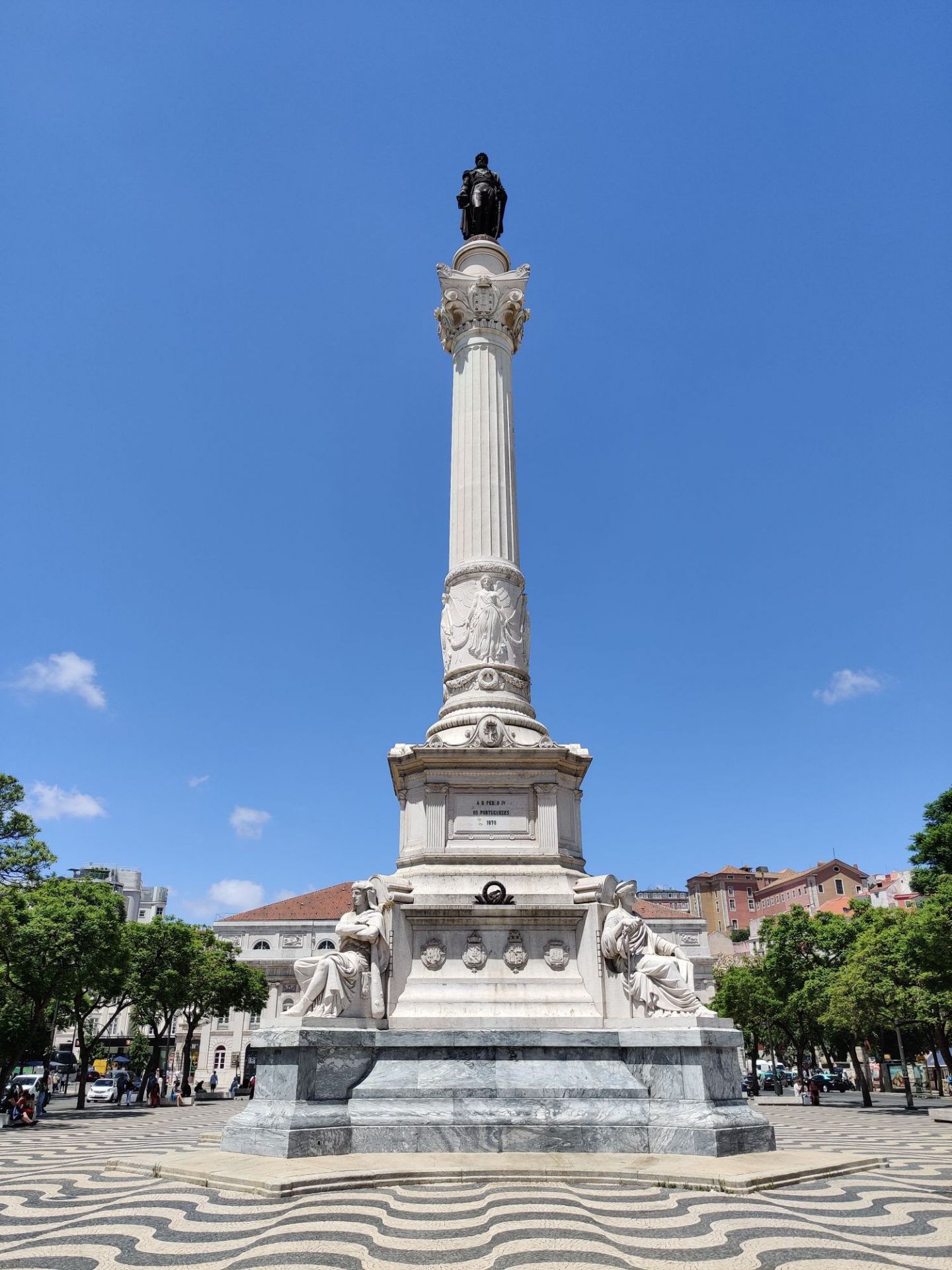

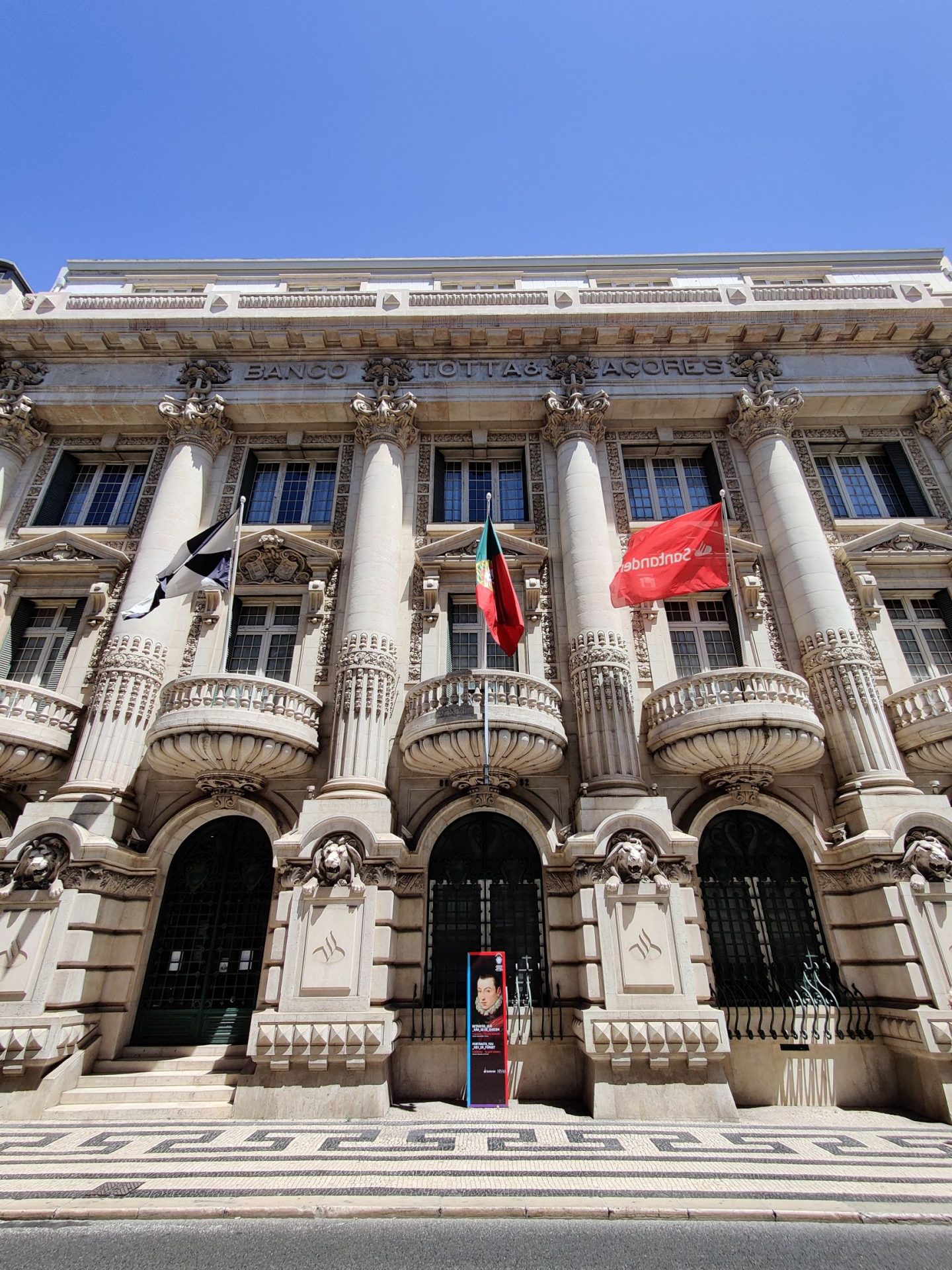
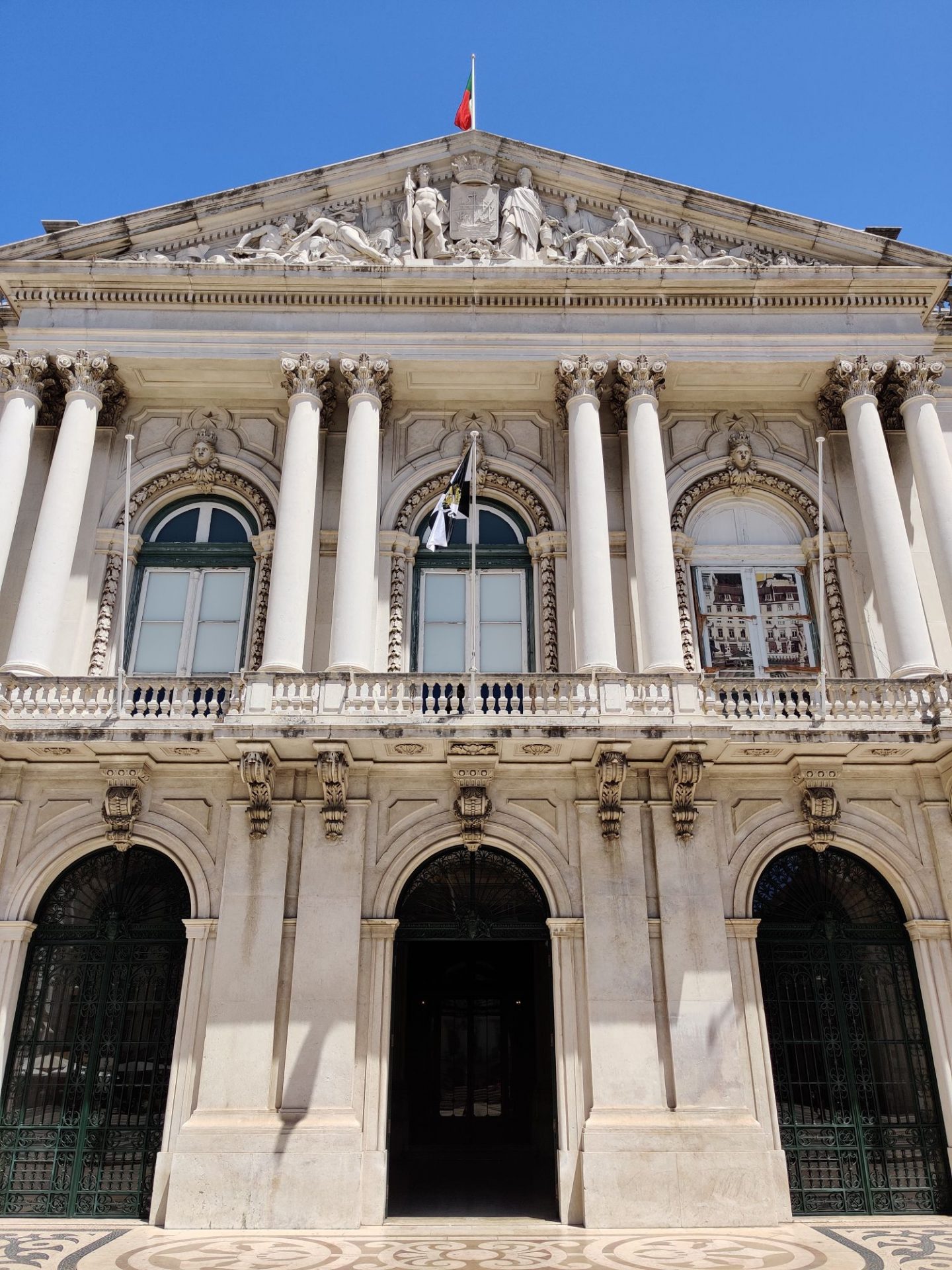
2. Rua Augusta
On our way to the apartments we went through Rua Augusta, we also had our lunch here :).
Rua Augusta is well-known for its shopping streets and restaurants. The street runs from Rossio Square to Commerce Square.
The entrance to Commerce Square is formed by the Arco da Rua Augusta. This triumphal arch was built in memory of the 1755 earthquake.
3. Commerce Square / Praça do Comércio
We stayed only 2 minutes walk from here.
Commerce Square (Praça do Comércio) is the largest and most famous square in Lisbon. It was rebuilt in the eighteenth century, after the cataclysmic 1755 Lisbon Earthquake, and was previously called the Palace Square since it housed the royal palace.
Commerce Square leads elegantly down to the banks of the Rio Tejo, a great place for strolling, reading, or sipping coffee. We used to play with our kids here.
Close by is a Ferry Station, in case you want to take some river experiences there are plenty of those here.
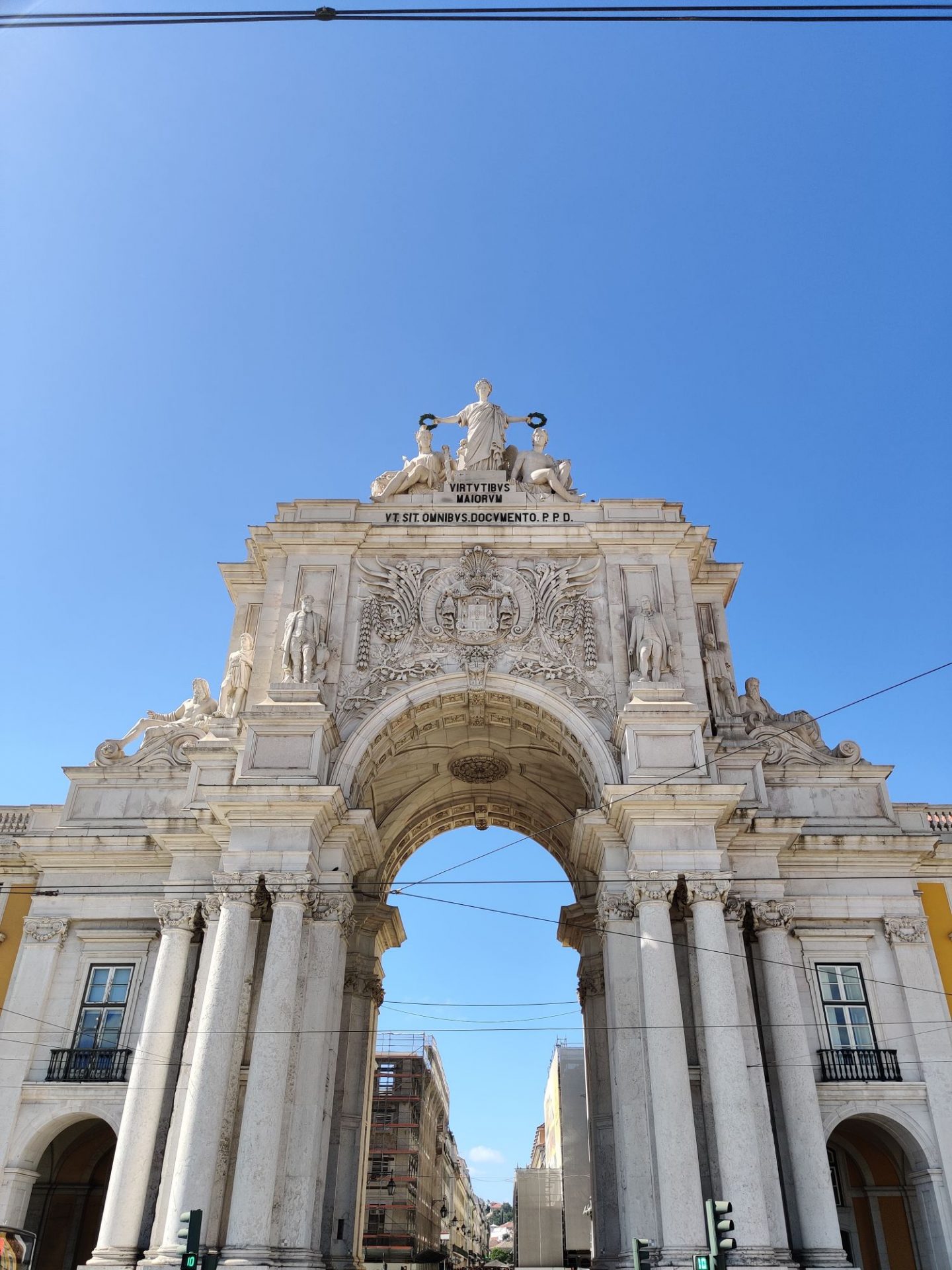
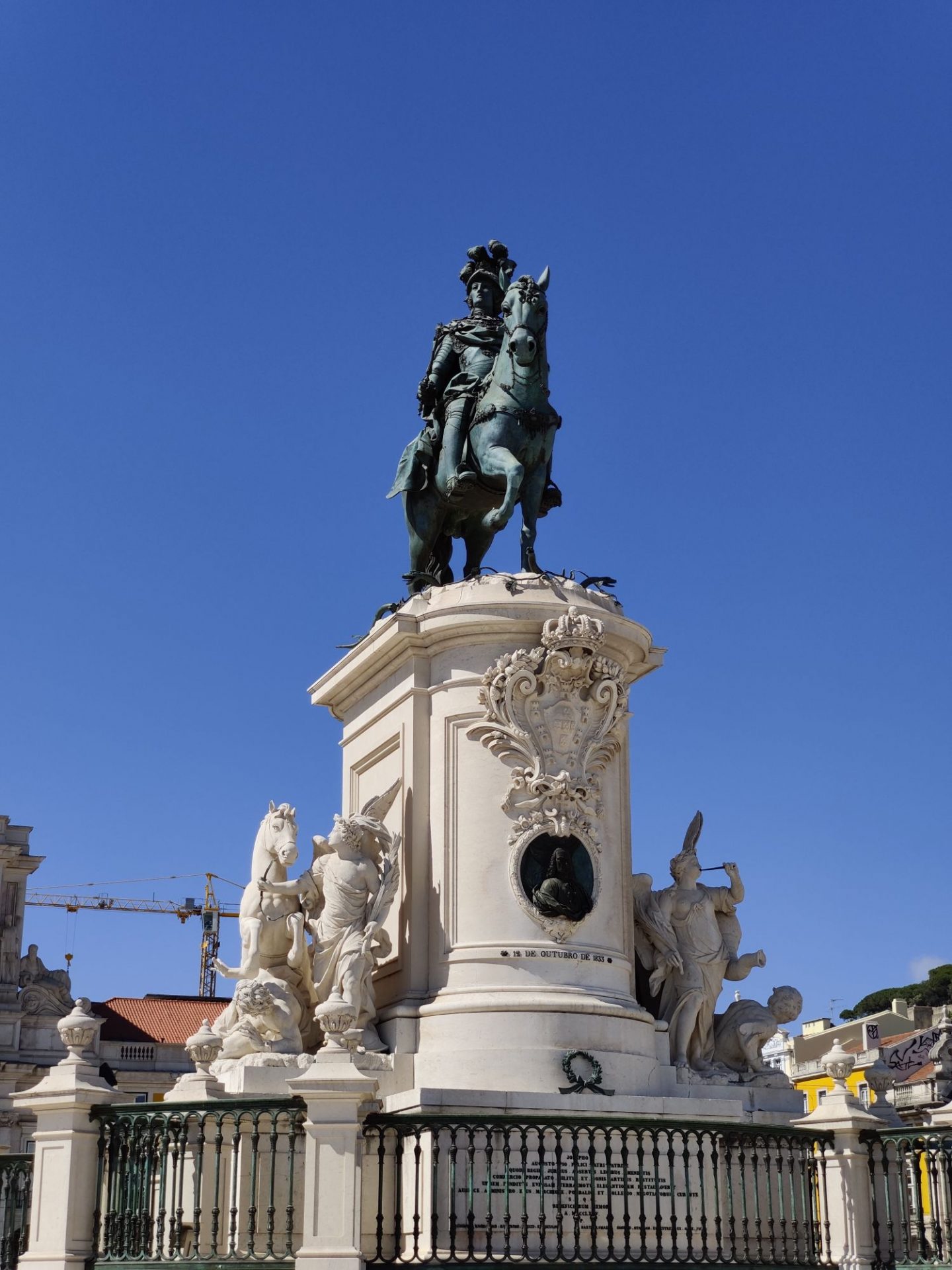
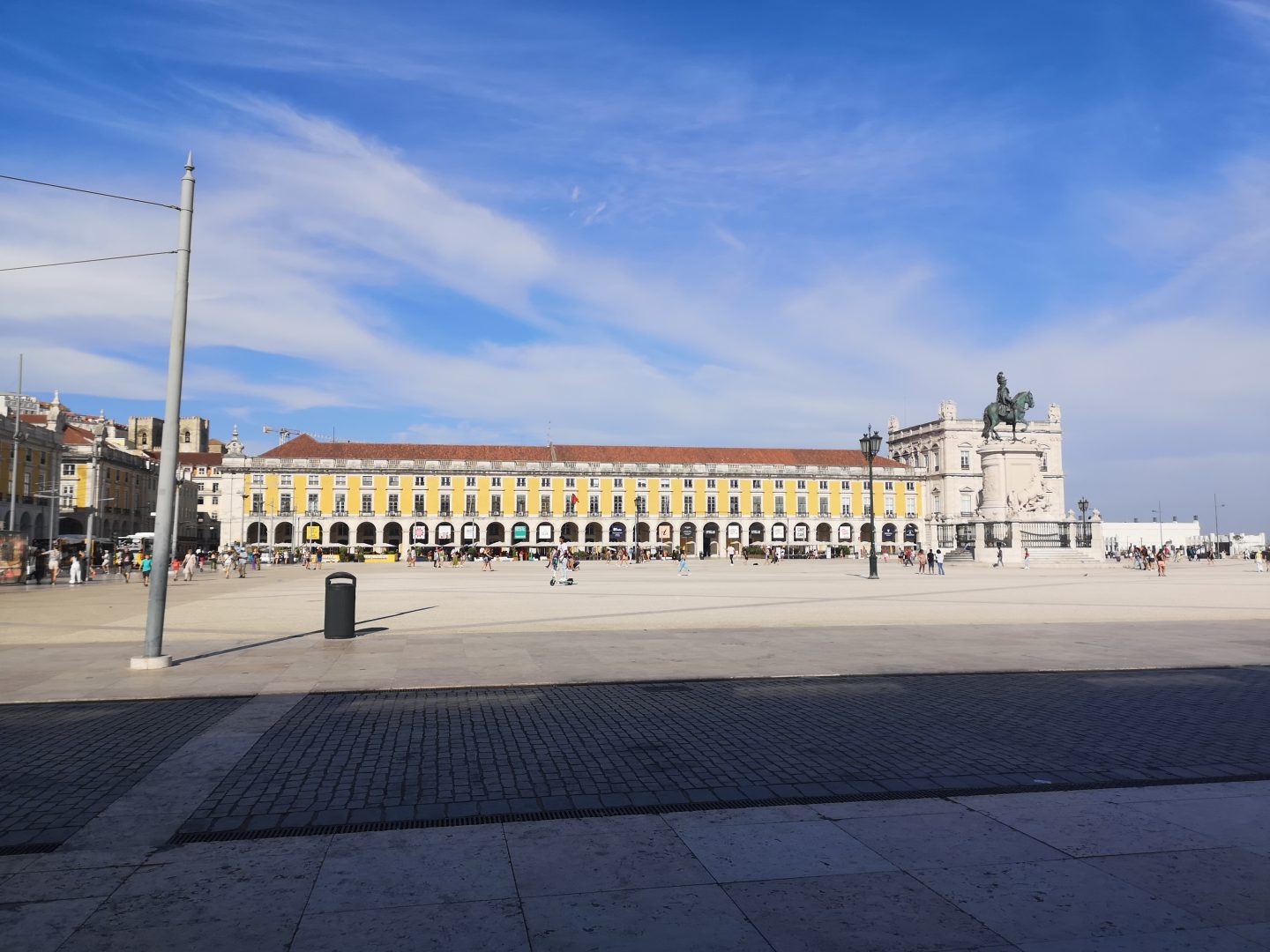
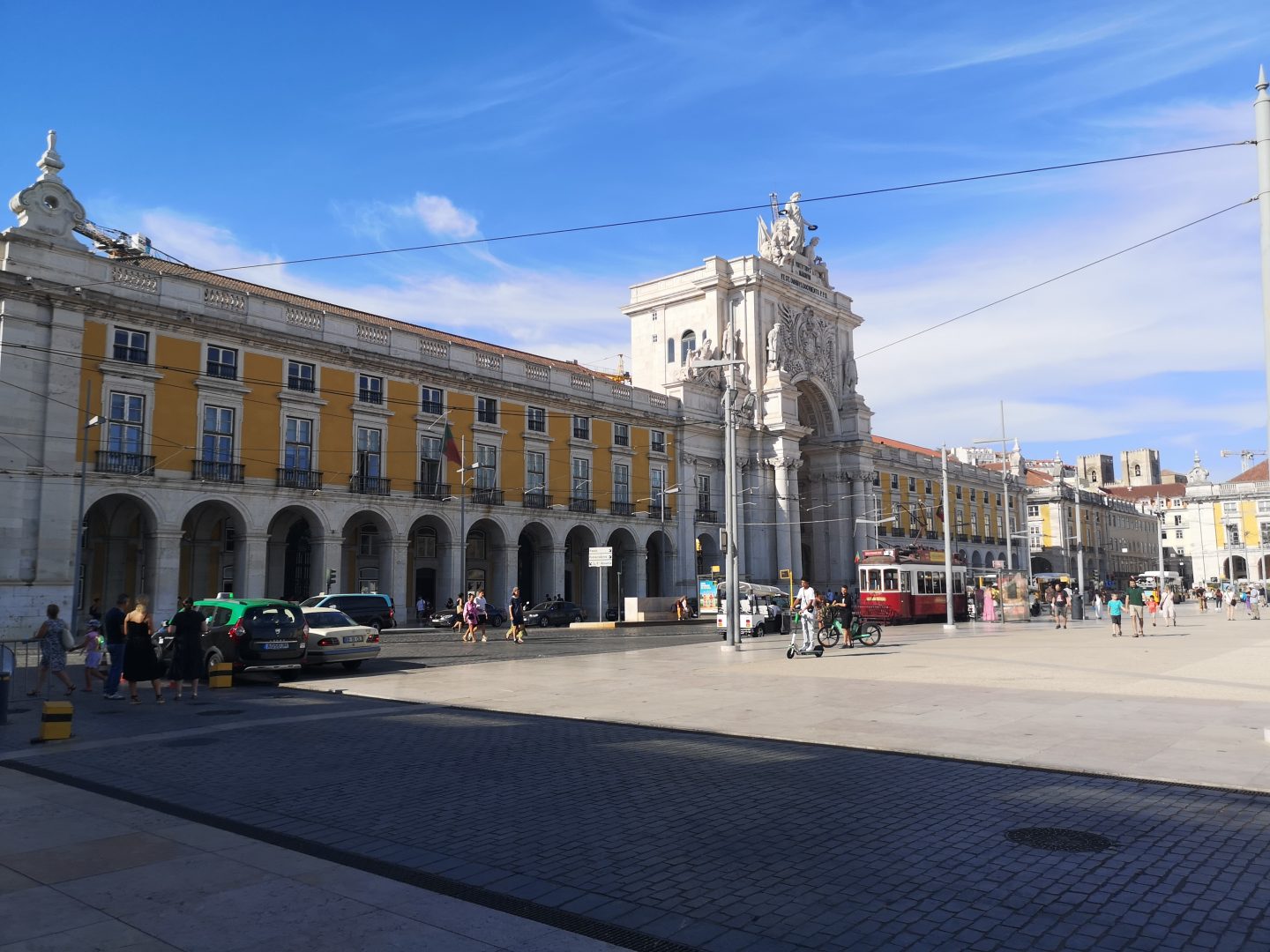
THE ALFAMA DISTRICT
4. Se Cathedral
Once we took our Lisboa Cards at the Tourist Office in Commerce Square, we went back exploring the city in the evening, it was almost 7pm.
Alfama district is one of the oldest districts in Lisbon. It is a labyrinth of cobbled streets and alleyways which return you back to mediaeval ages.
Se Cathedral was founded in 1150 to commemorate the defeat of the Moors three years earlier and stands on the site once occupied by the city’s main mosque. You can enter inside of the Cathedral, but we didn’t make it as kids didn’t want to.
We took some pictures and moved around Alfama district.
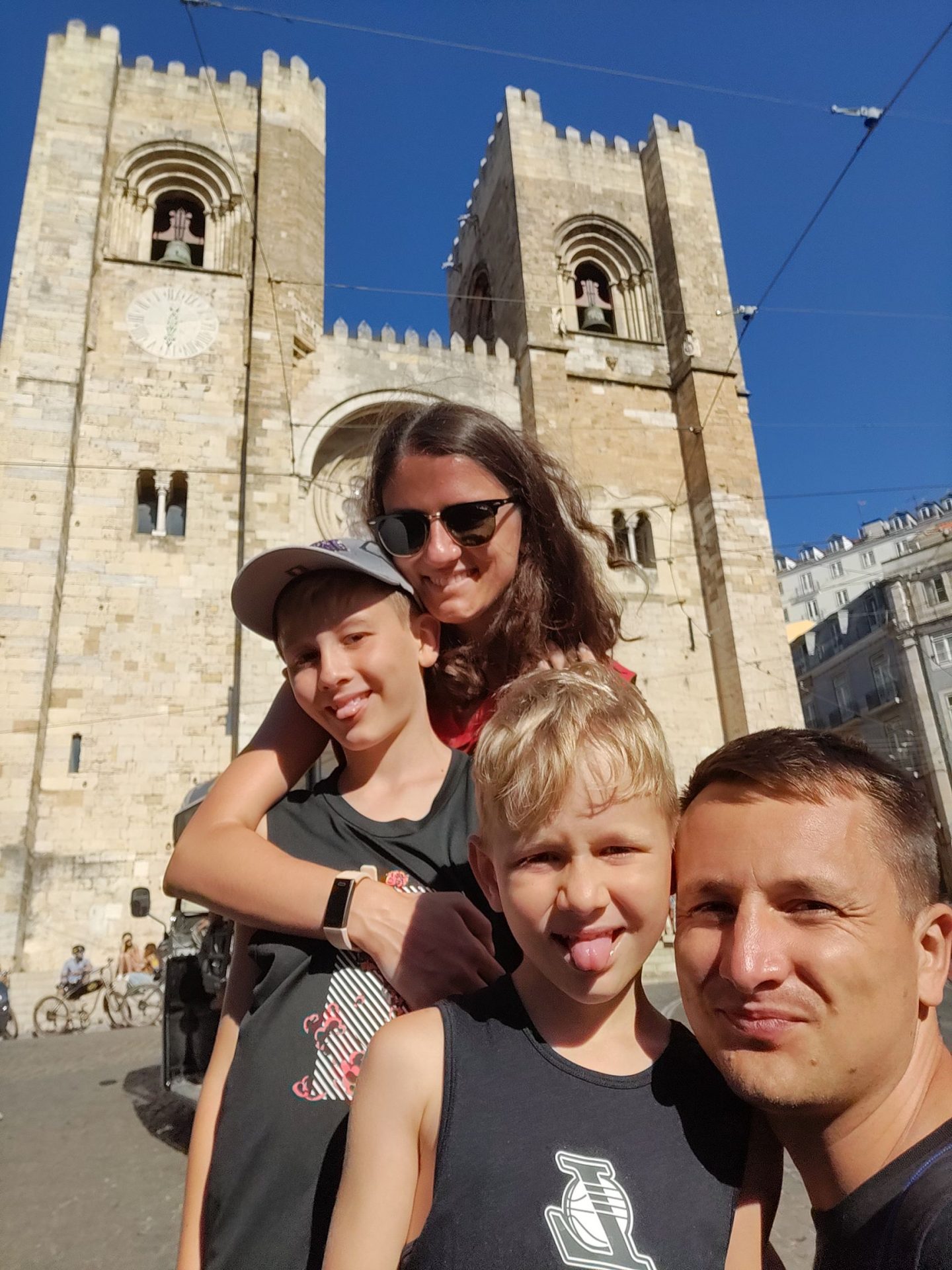
5. Walking in Alfama District
Alfama district has a strong Moorish influence, and its name Alfama actually comes from the Arabic word “al-hamma,” meaning baths or fountains.
It is one of the oldest areas of the city and here you can appreciate the typical Portuguese architecture with lots of azulejo tiles.
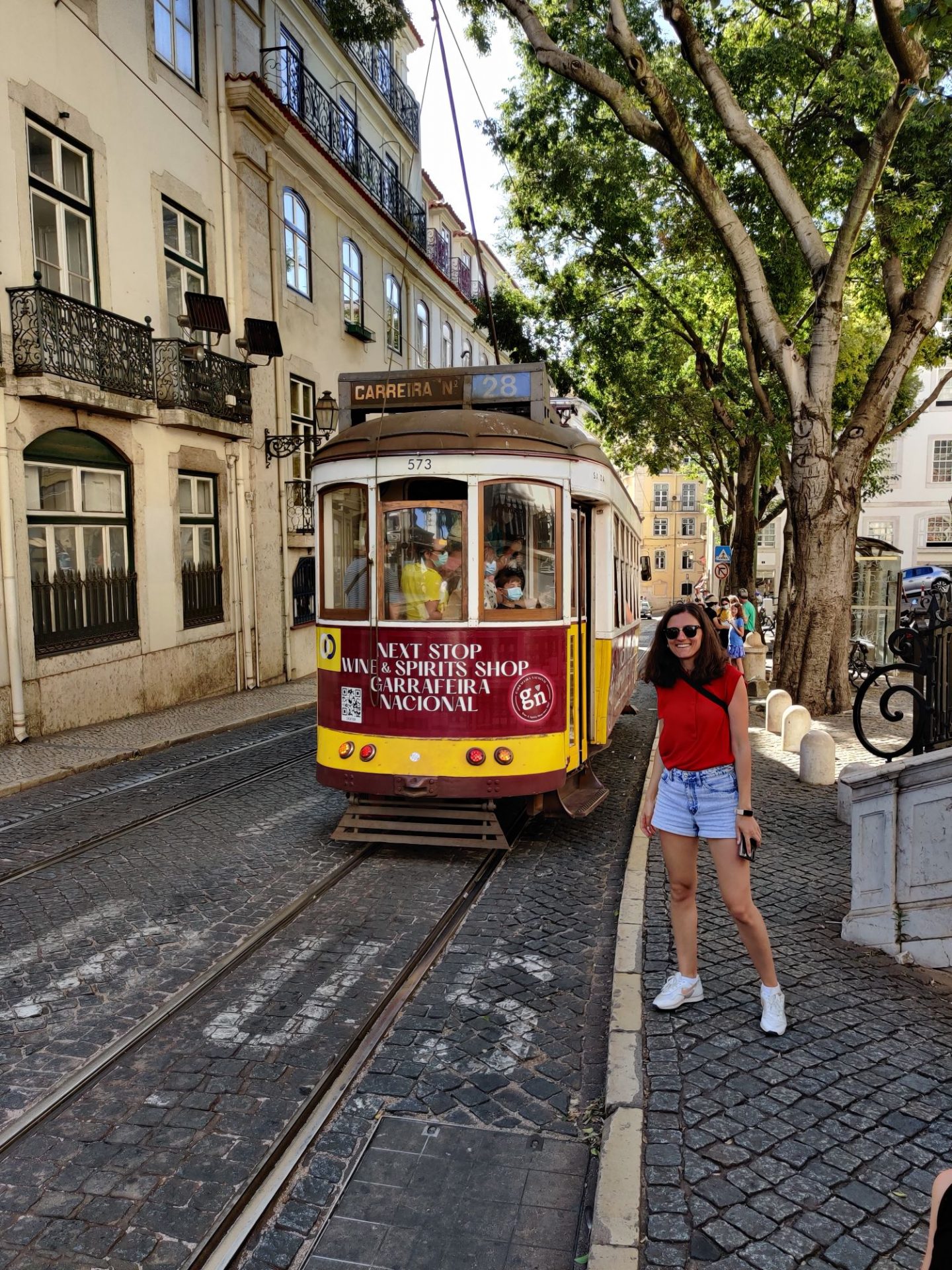
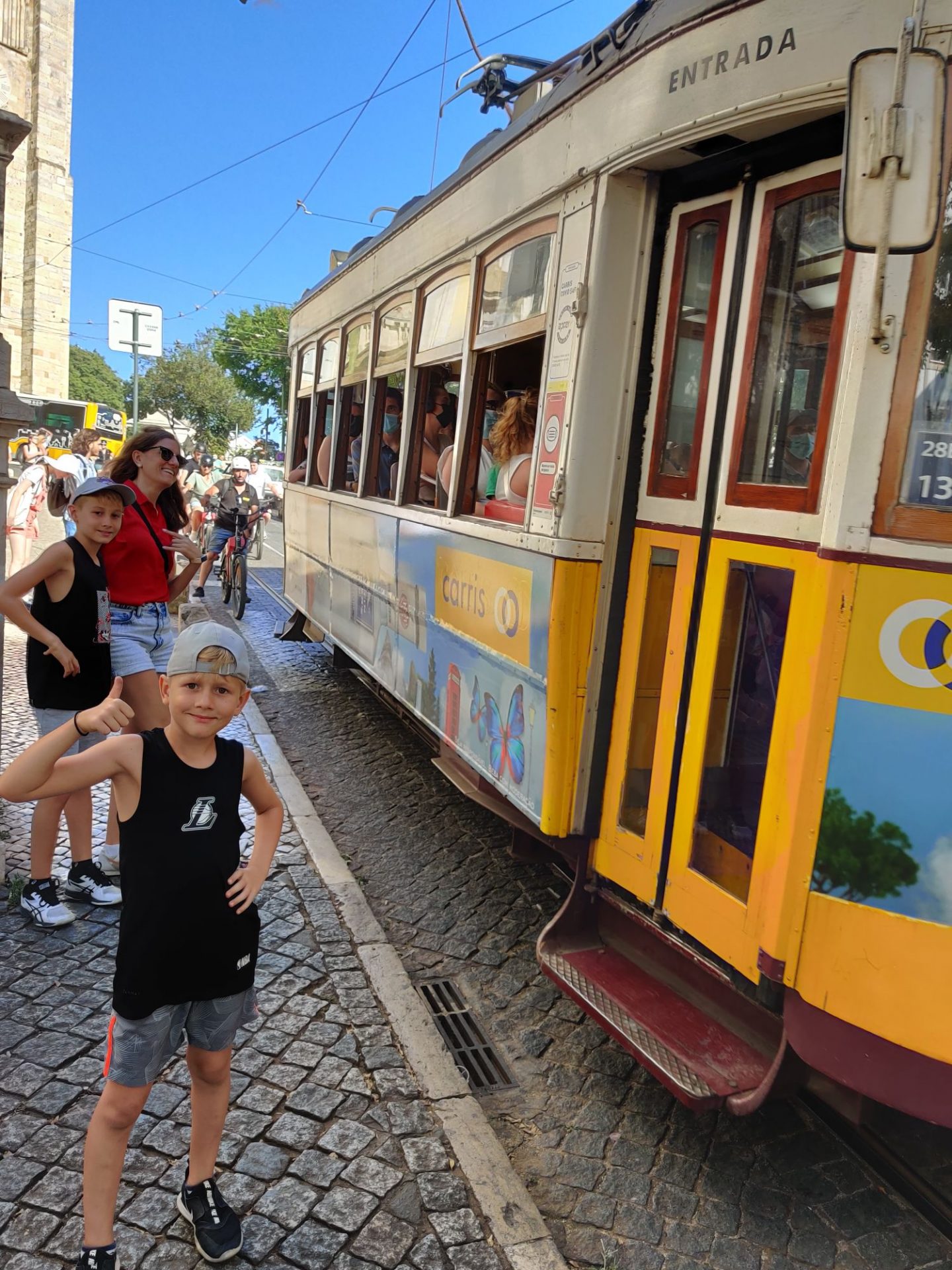
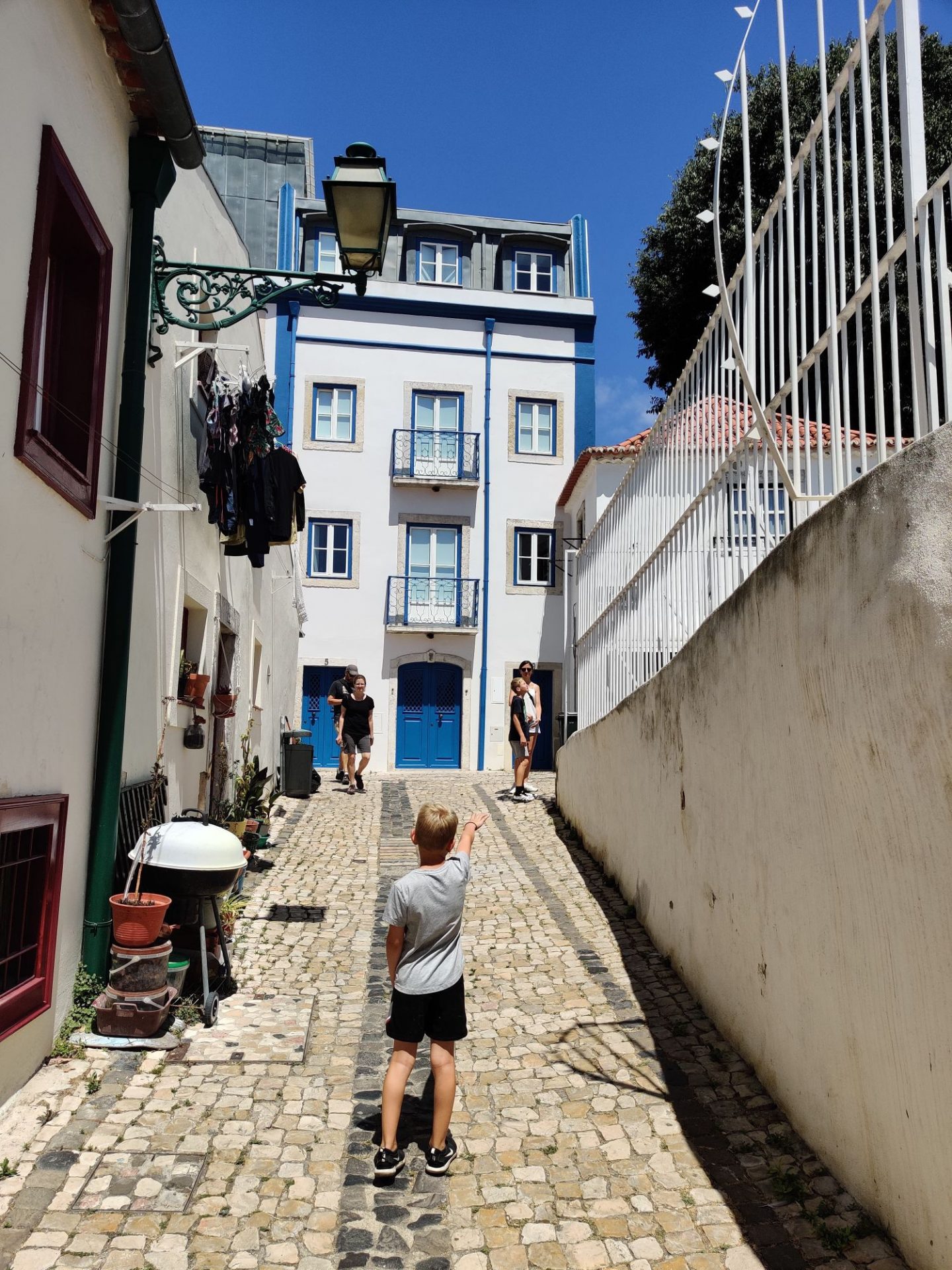
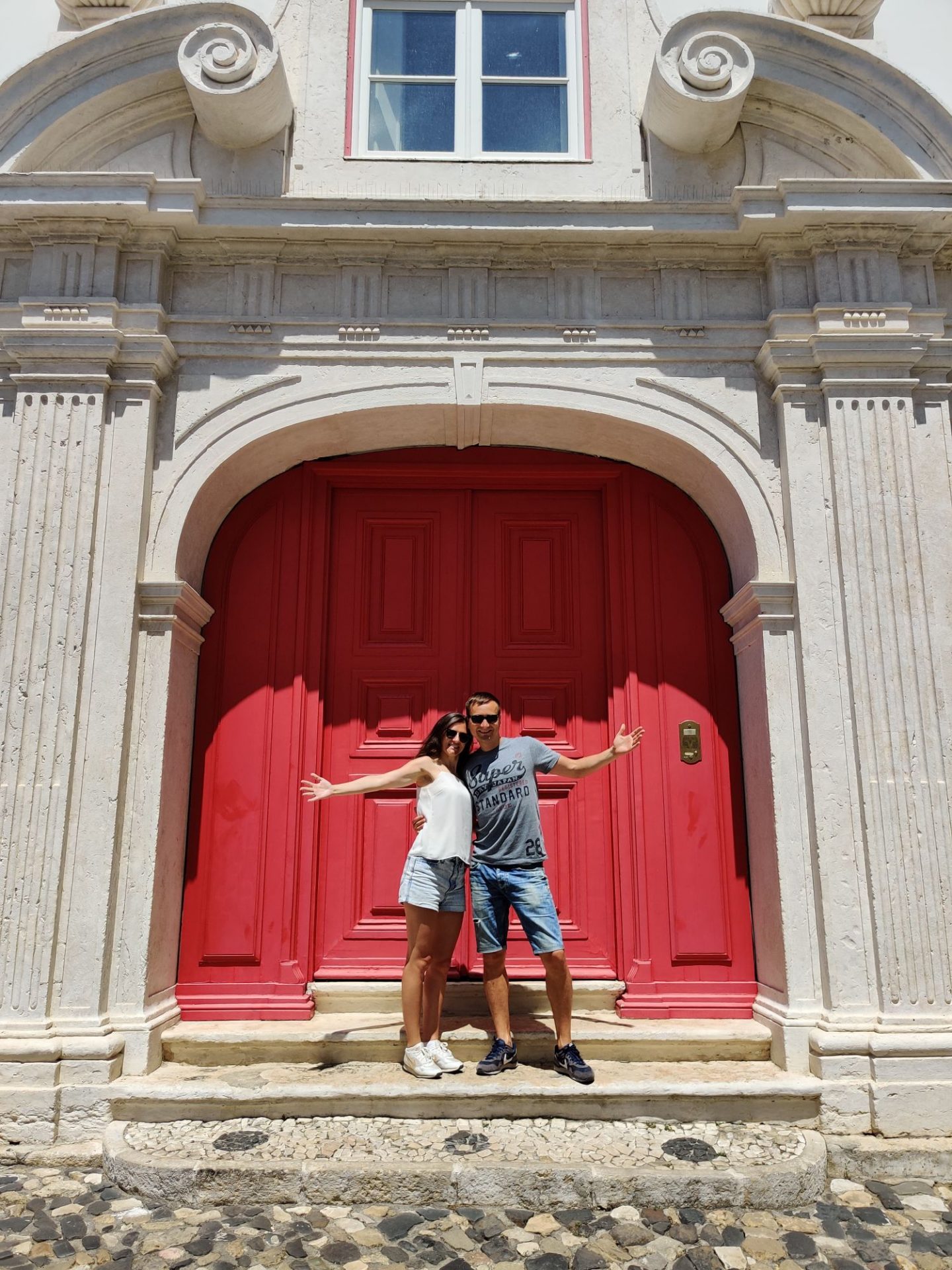
6. Tram 28
This tram twists and turns up the hilliest, narrowest and most-scenic lanes in Lisbon. It loops around Alfama, across the centre of town and back up into Chiado. We took it to get up high to Miradouro da Nossa Senhora do Monte, where we had the most scenic, unforgettable sunset.
The tram trundles and clanks its way along the cobbled streets of the oldest and most charming neighbourhoods of Lisbon like Baixa, Chiado, Graca, and of course, Alfama. You will be treated to a splendid vista of many of Lisbon’s renowned gardens, churches, and monuments. The price of a 1 way ticket is 3 EUR, but it is also included in your Lisboa Card.
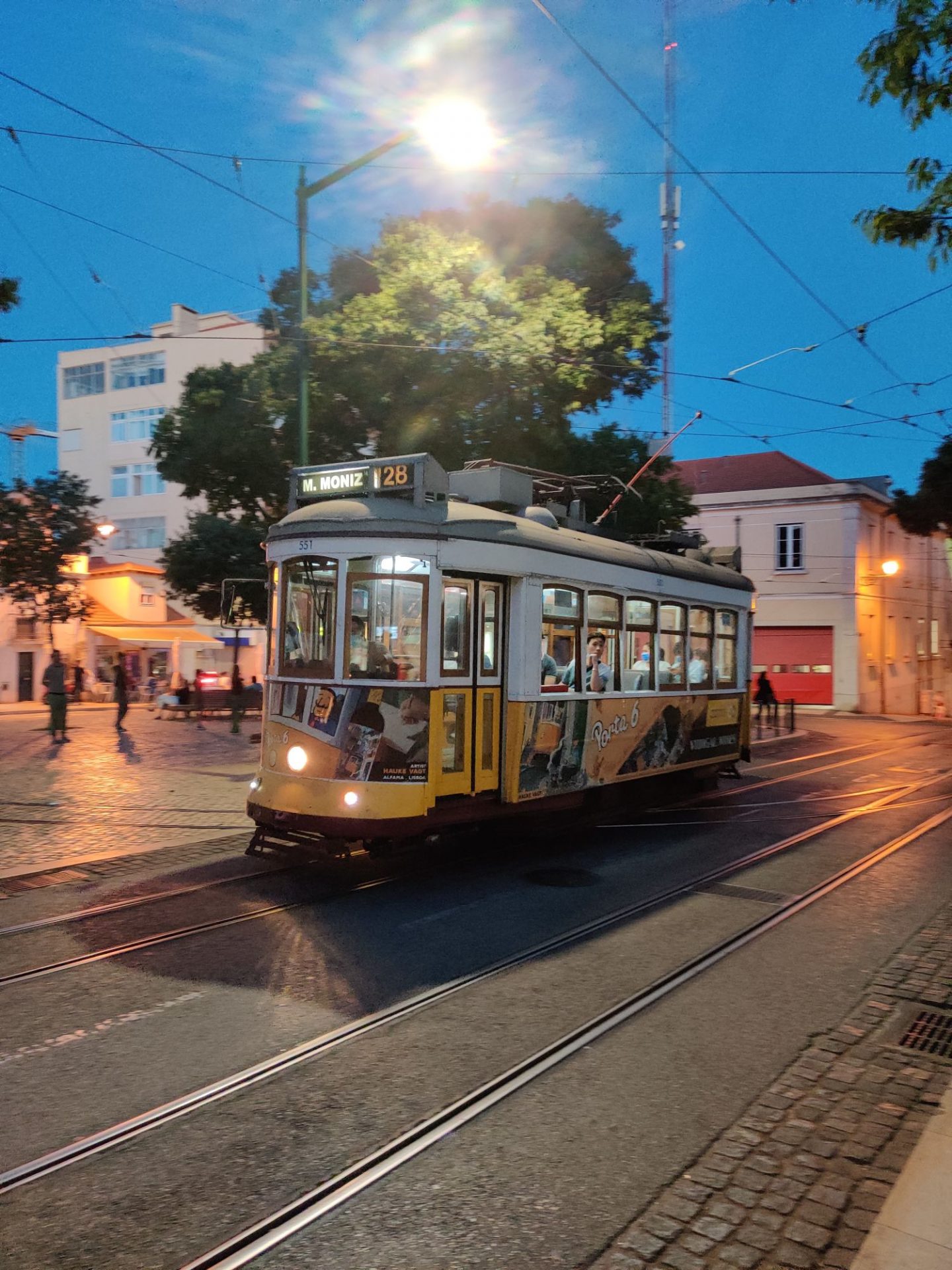
7. Miradouro da Nossa Senhora do Monte
I was looking at the best viewpoints to watch the sunset on our first day, and found 5, but this one was recommended to us by the Tram 28 Conductor. At the beginning I was disappointed as it didn’t match with the blog I was reading, but after having 360 degrees views, spectacular sunset, I am really grateful for his advice. Many people take some snacks and drinks to have a full experience. I thought that we were the only ones who came unprepared. It was a romantic scene, beautiful sunset, live music, and enjoyable surroundings.
On our way back home, we took tram 28 again, and what we found was a vivid Lisbon nightlife. People enjoying themselves, talking, singing and dancing.



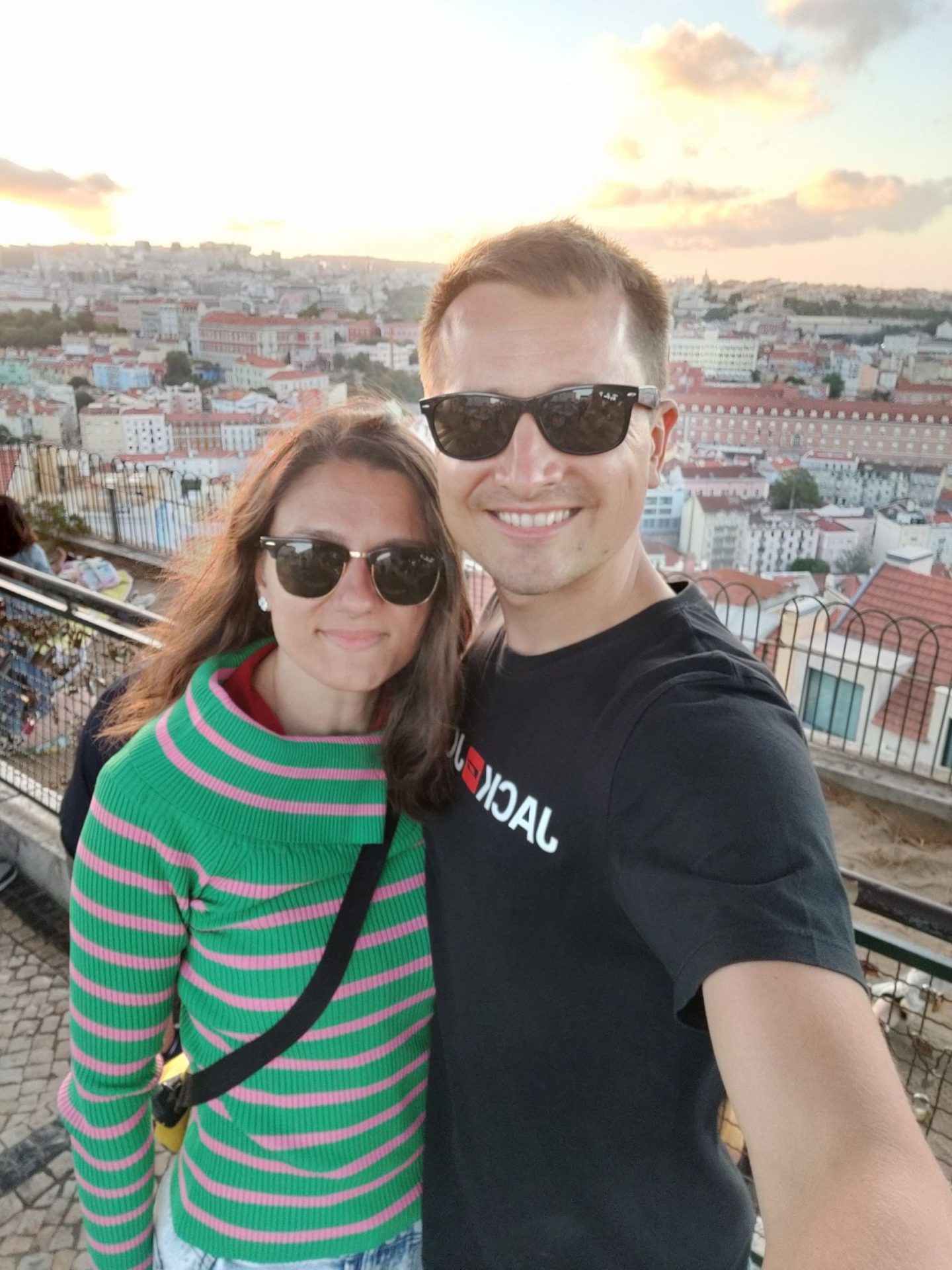
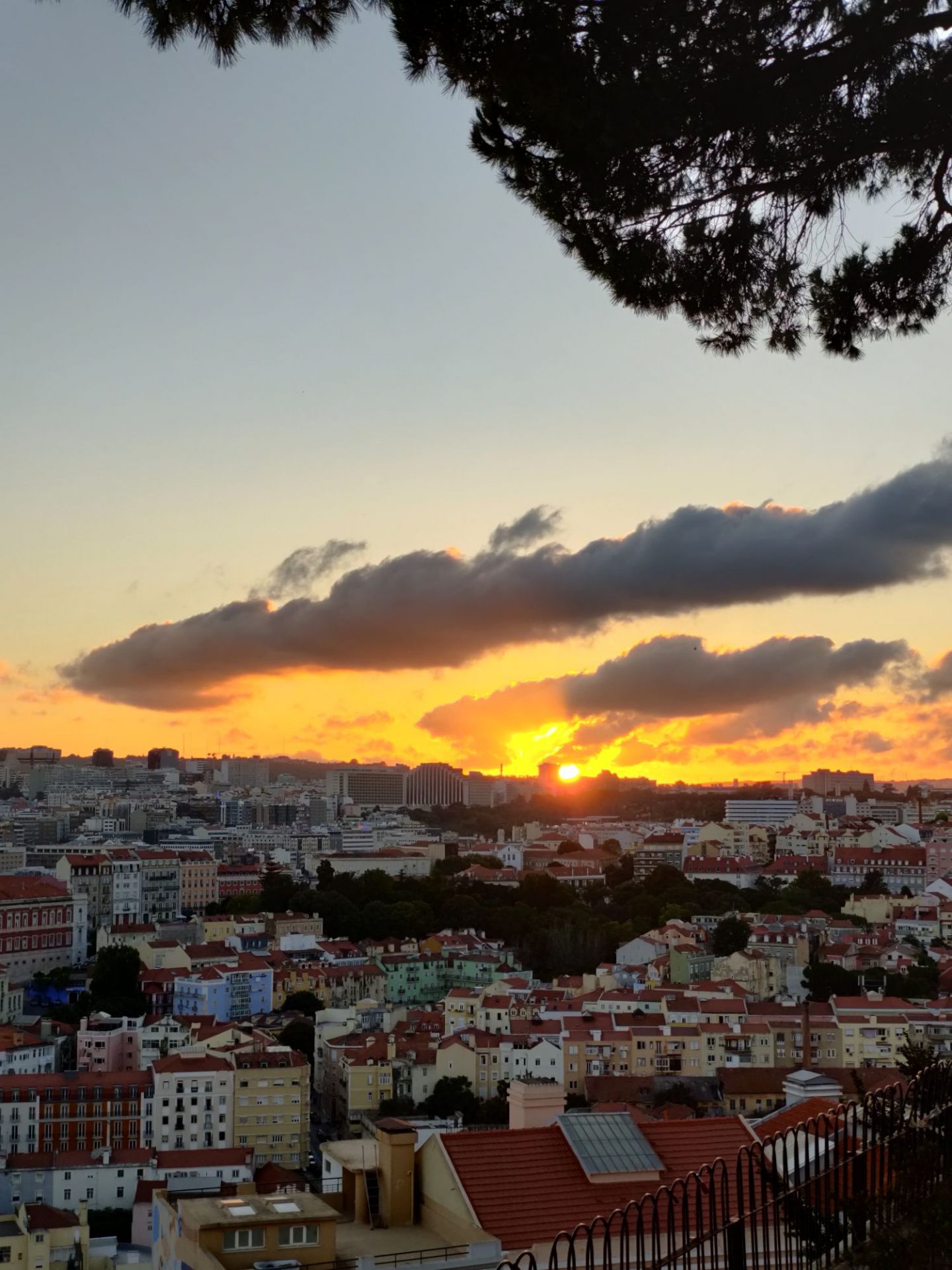
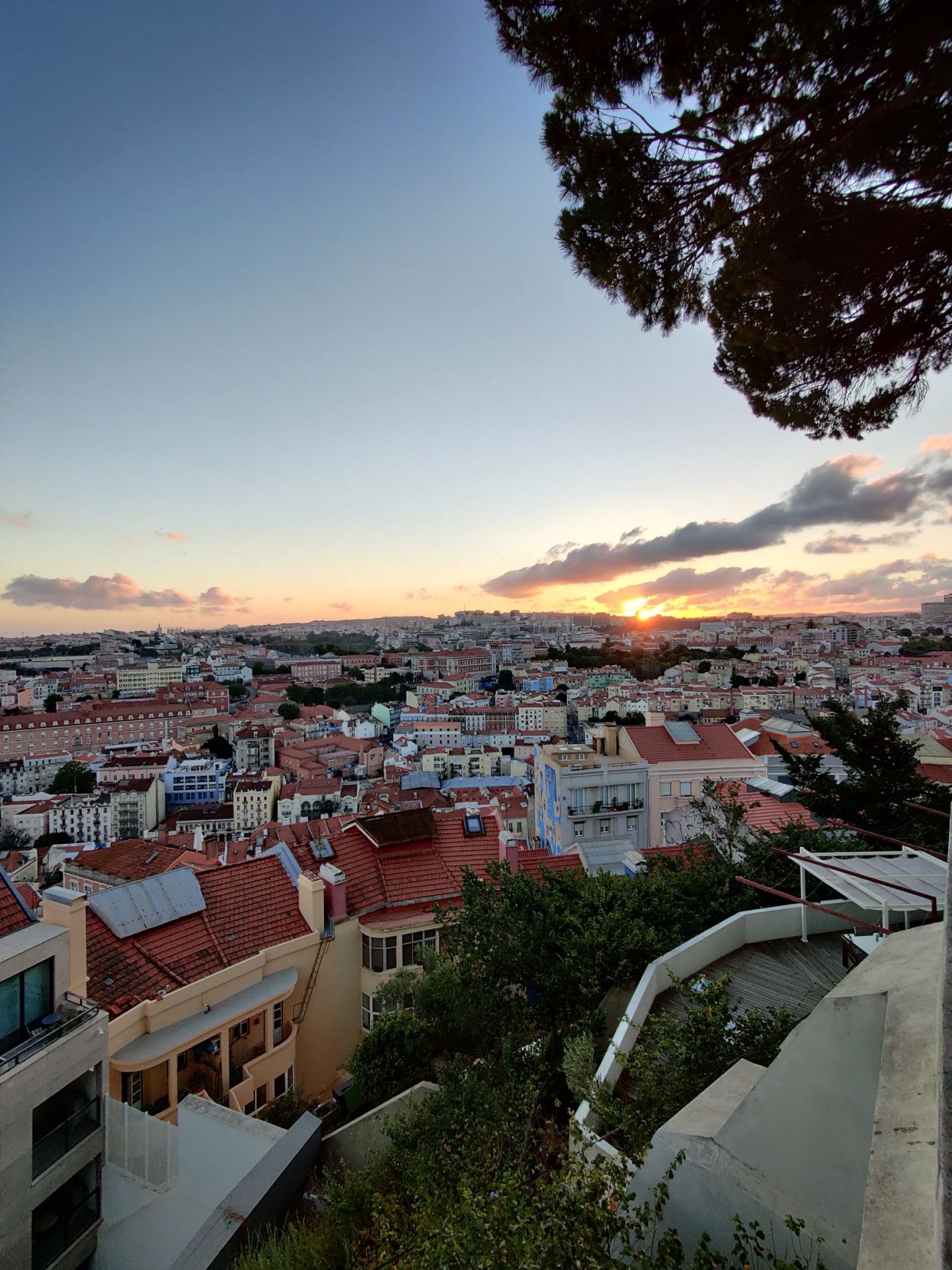
Here our first day ended. We went back to the apartments happy and tired after a looong day in Lisbon and not only.
4 DAYS IN LISBON – Day 2
Day 2 started at 11.30 am for us. I do not recommend anyone to start their day in Lisbon as late as this hour. Once you take your coffee it is already lunch time, and it means that till 6pm you don’t have enough time to visit museums. And it is a pity to have a Lisbon card and not to enjoy it.
8. A Padaria Portuguesa
Usually I do not share the places we eat, but this time I decided to share this marvellous place where you have a wide option of pastries and very delicious coffee. This is the place we went on our second day.
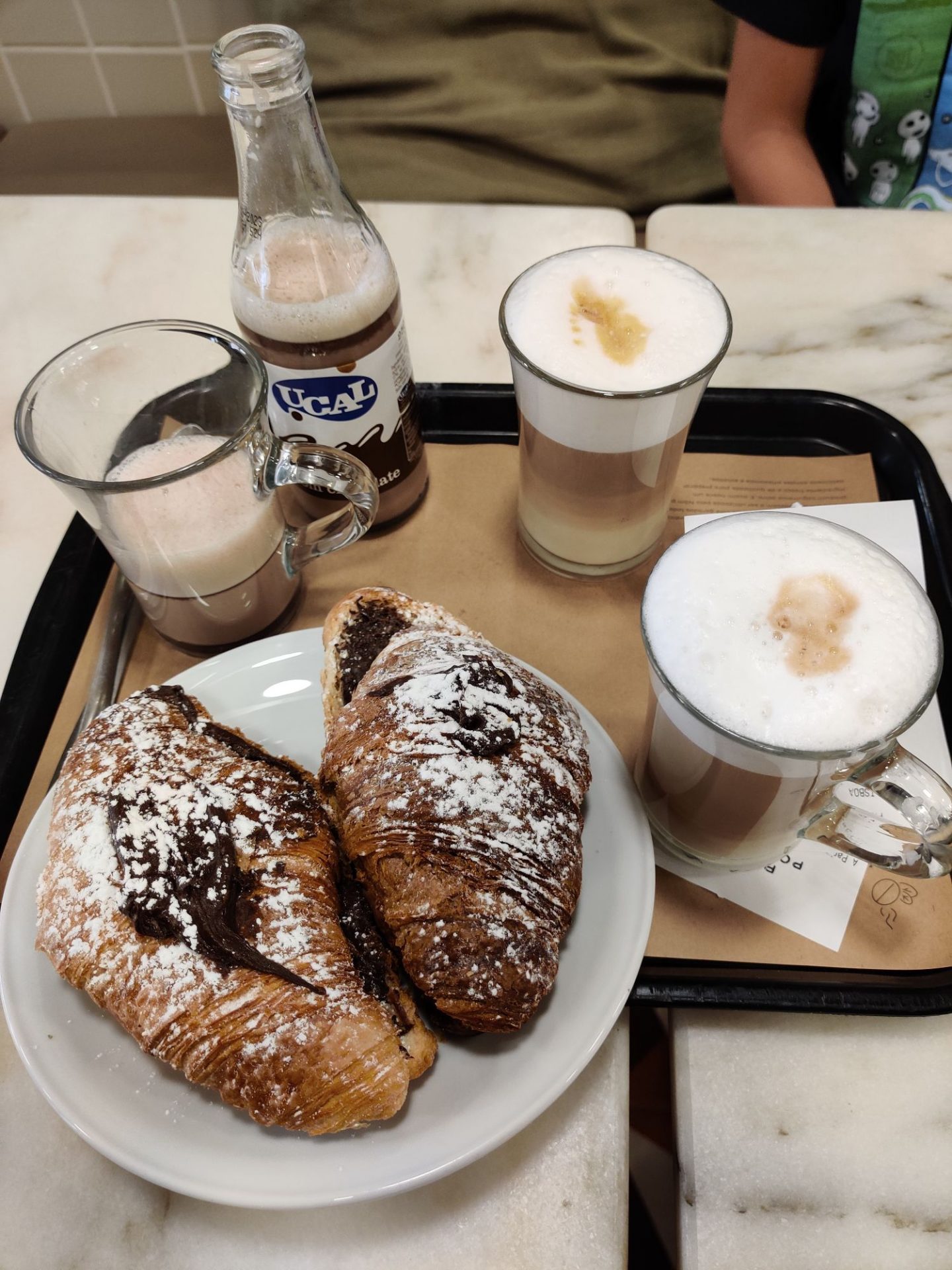
9. Church of Sao Vicente De Fora
The church itself is decent, but the monastery and cloisters next door is thoroughly impressive. Blue tiles, protected by vaulted ceilings, shimmer on the white walls. The atmospheric side chapels have tombs adorned with skulls with a cloaked statue standing guard.
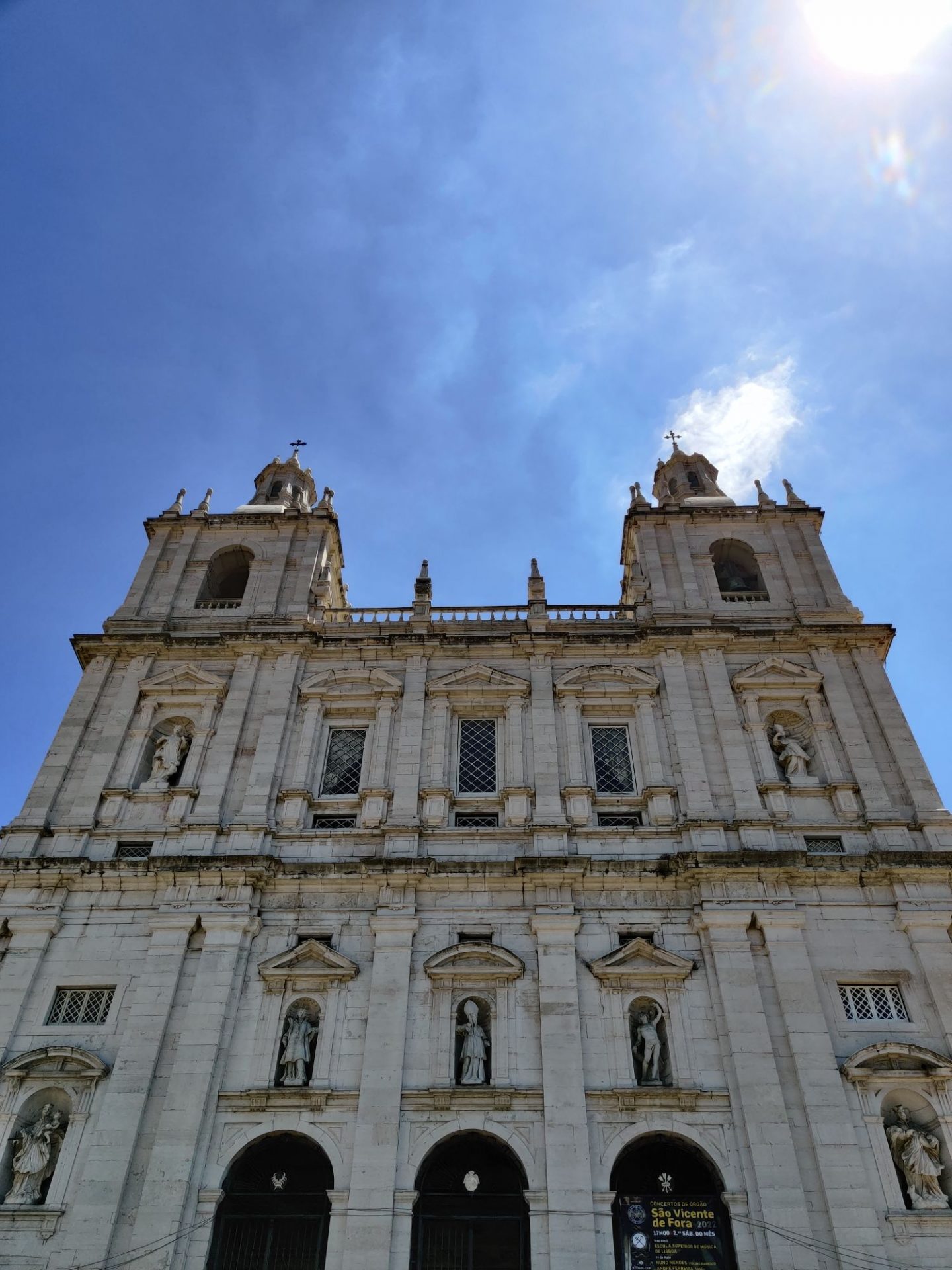
10. Panteão Nacional – igreja de Santa Engrácia
Originally built as a church it now houses monuments to the great and the good of Portuguese history. The entrance ticket allows access to the roof with excellent views of the city. From the upper terraces take in a birds eye view of the marble hall. The entrance ticket is 4 EUR, but it is included in your Lisbon Card.
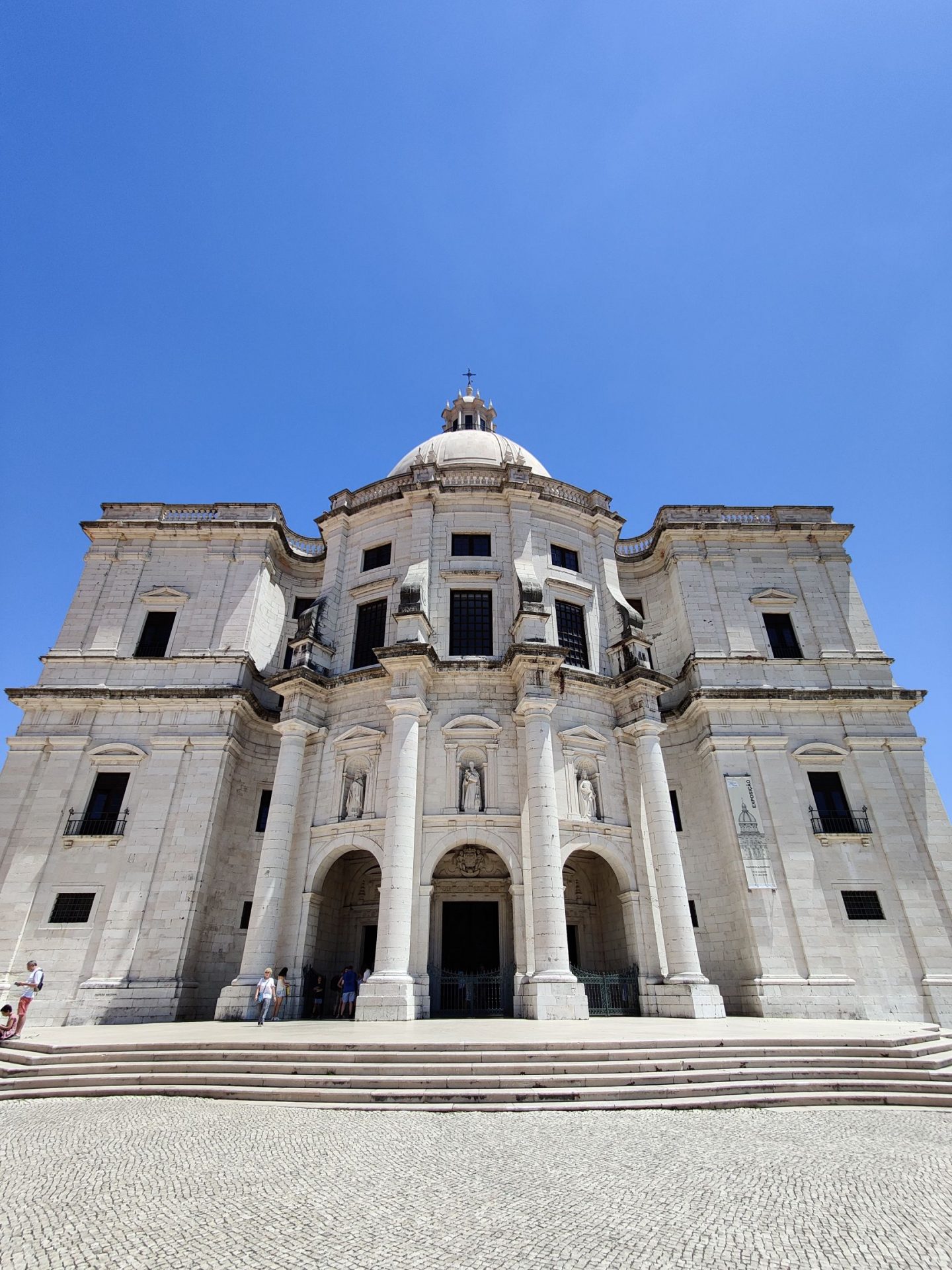
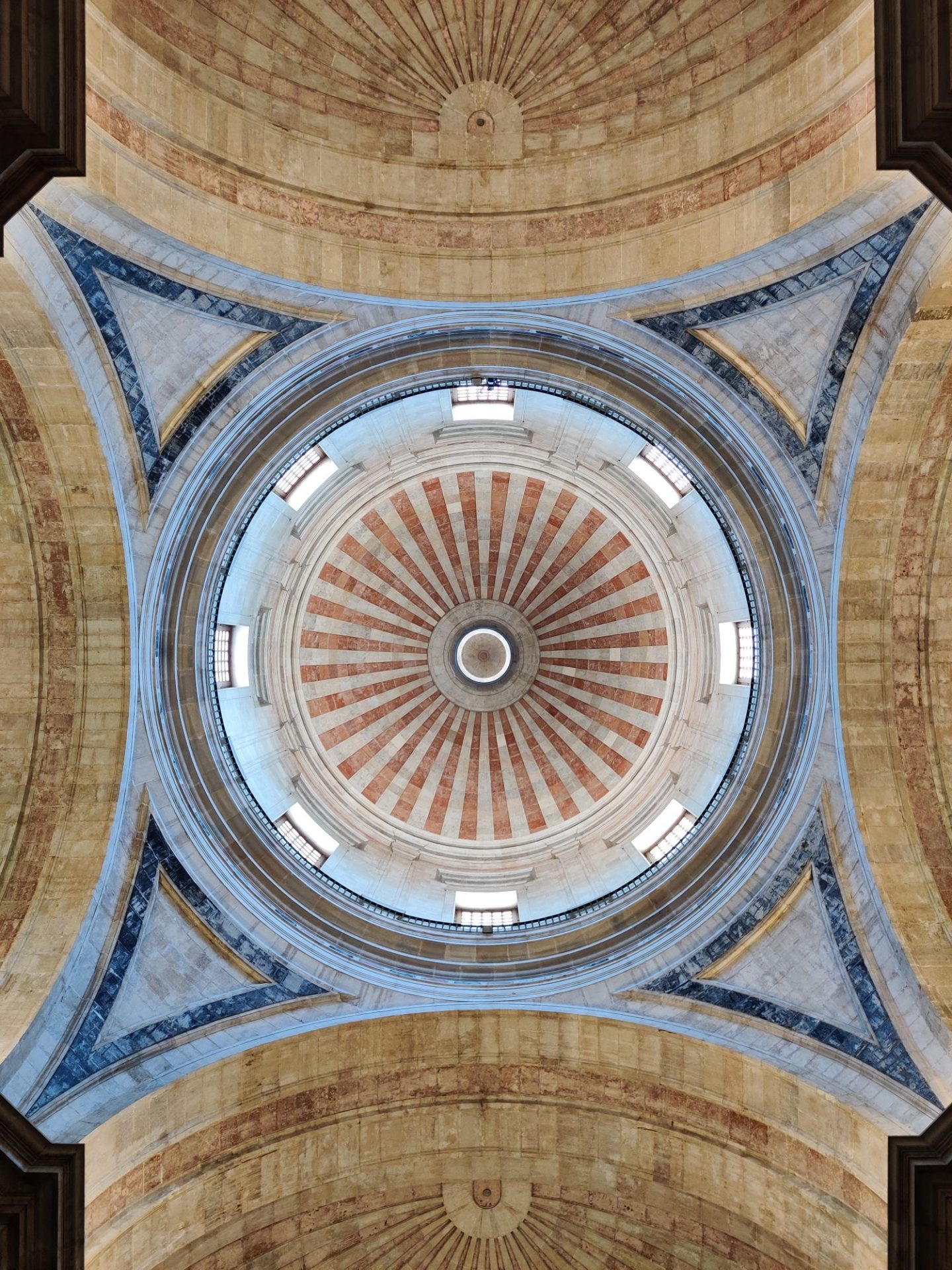
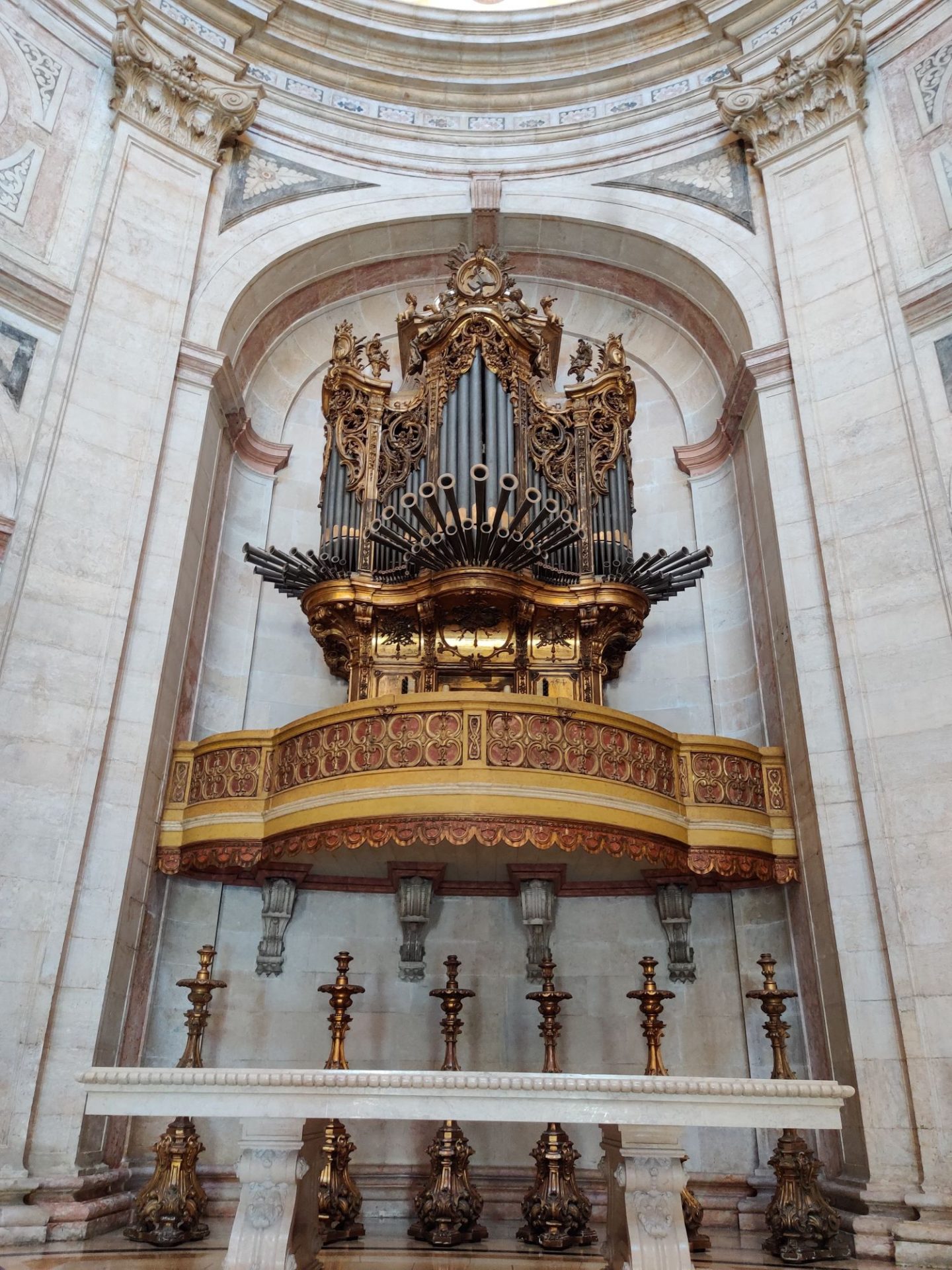
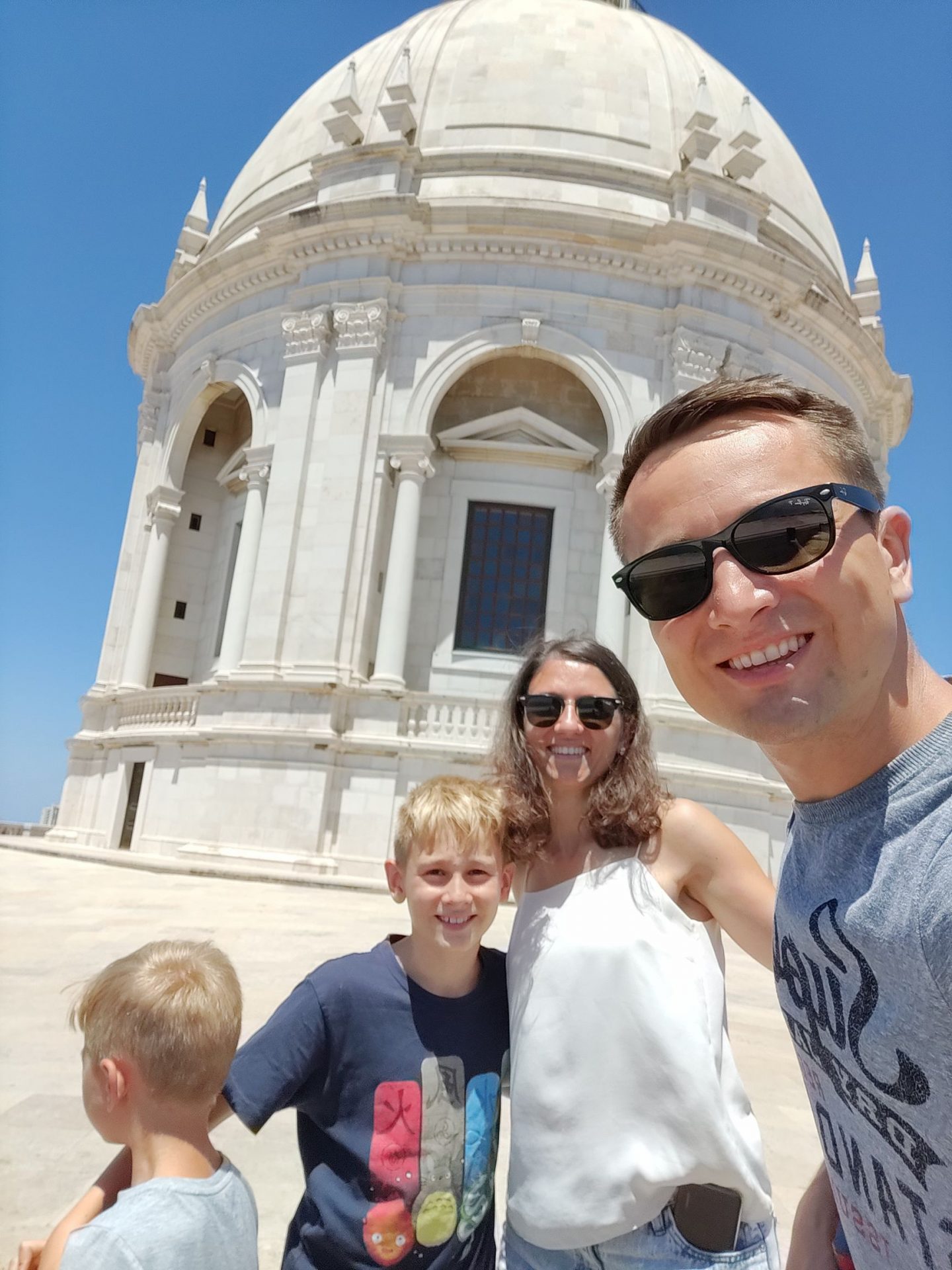
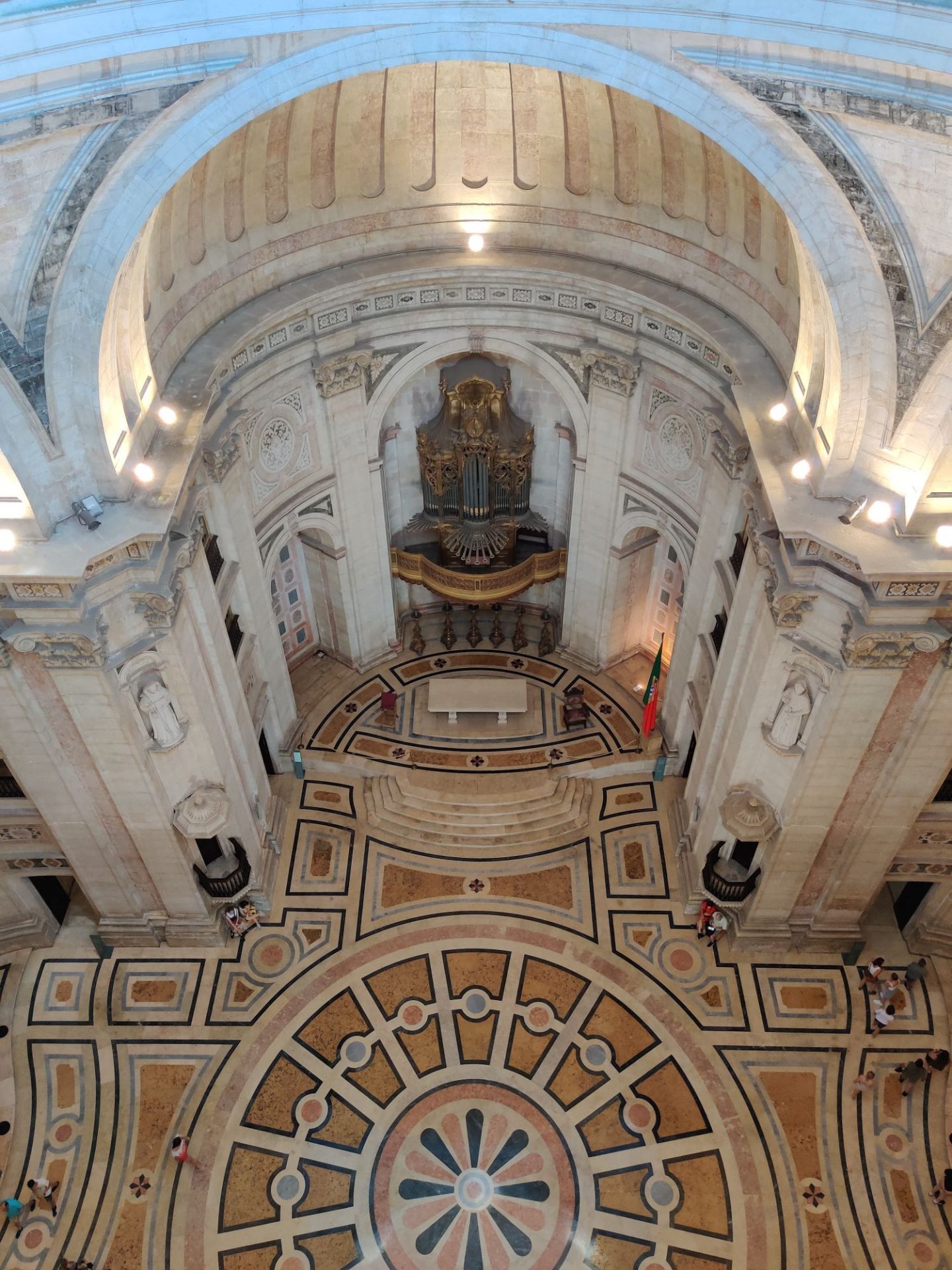
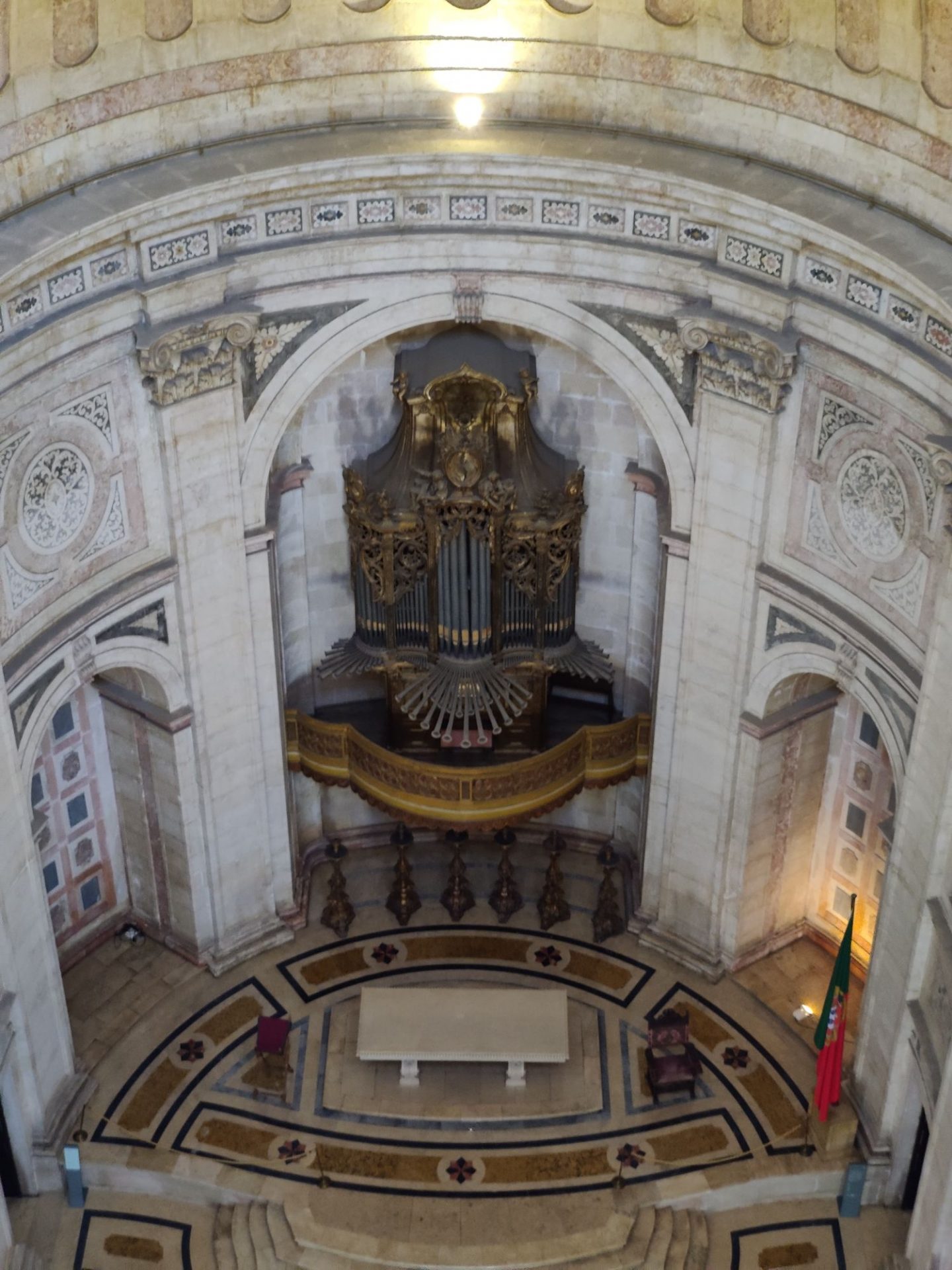
11. Jerónimos Monastery
After our lunch time, we went to the other district of the city. The Belem District
This UNESCO World Heritage Site, built in 1502, was constructed in the Manueline style of architecture and blends ostentatious Gothic and Moorish influences with elements of nascent Renaissance. I reckon it’s the most ambitious and impressive example of Manueline architecture that I’ve ever seen.
Built to honour Vasco da Gama’s epic 1498 voyage to India, Jerónimos is as much a symbol of the wealth of the Age of Discovery as it is a house of worship. During this time it was a symbol of wealth and power and it is sure to leave you impressed even today.
The entrance cost 10 EUR, but if you have your Lisbon Card you enter for free.
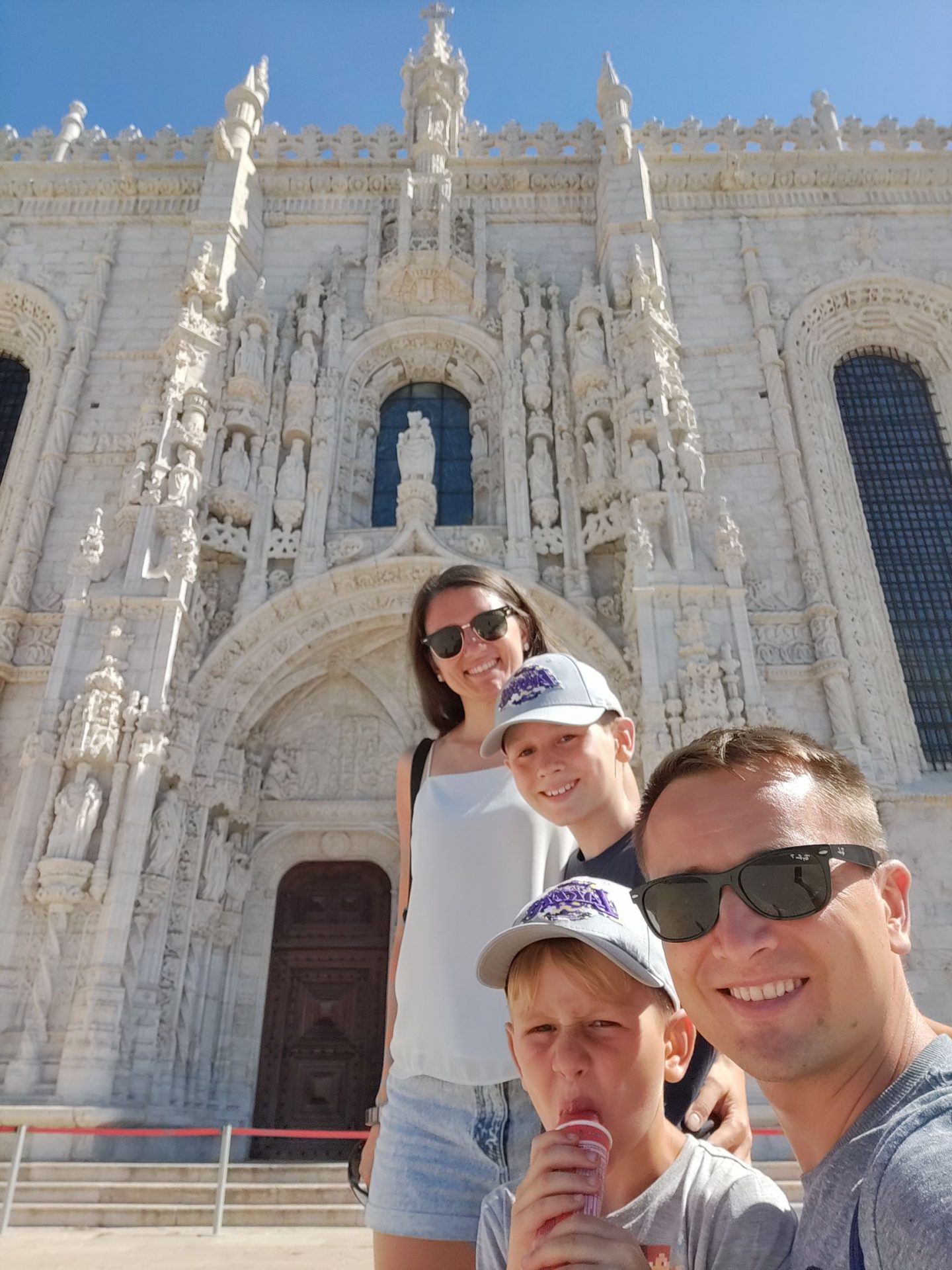
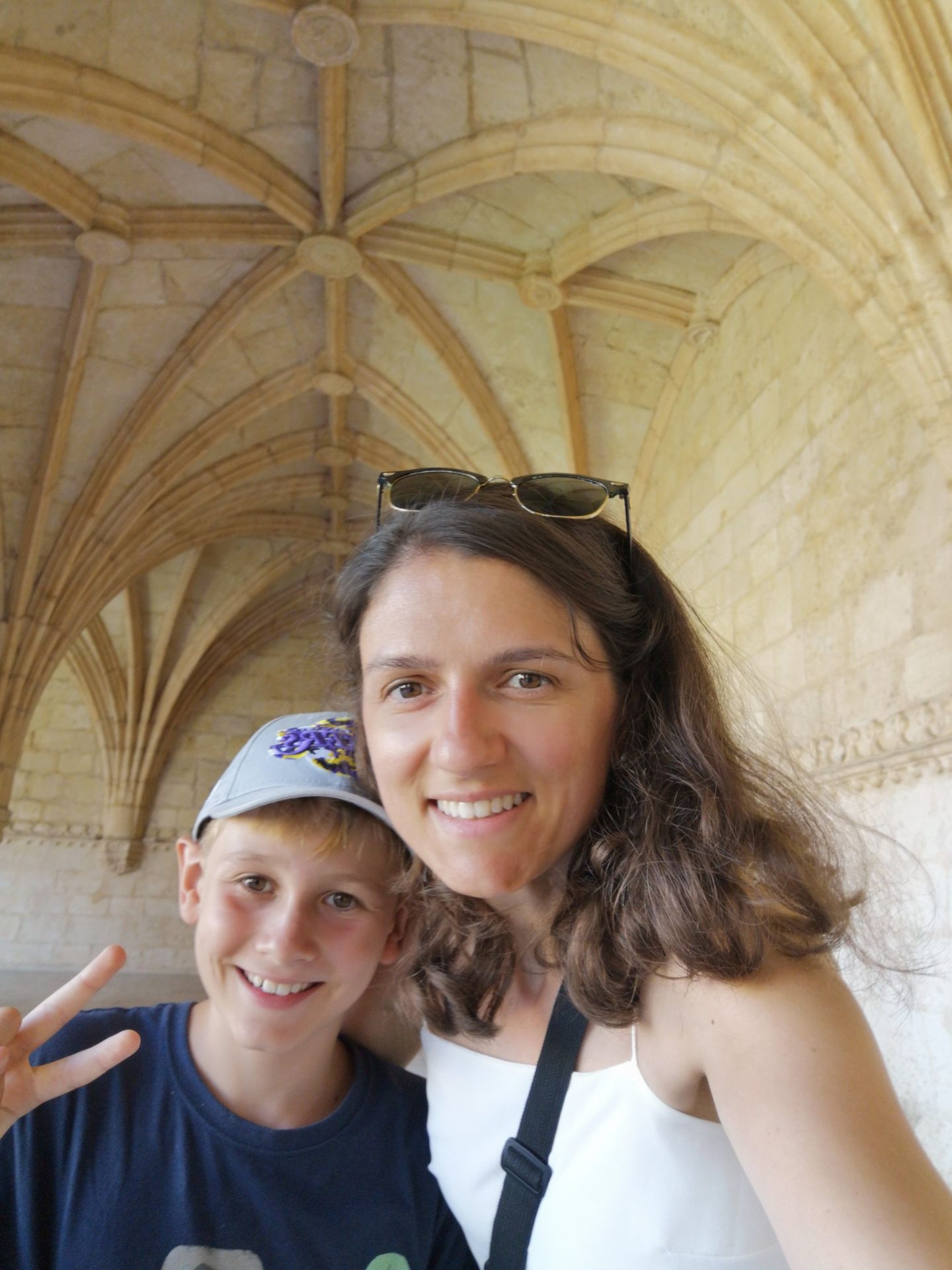
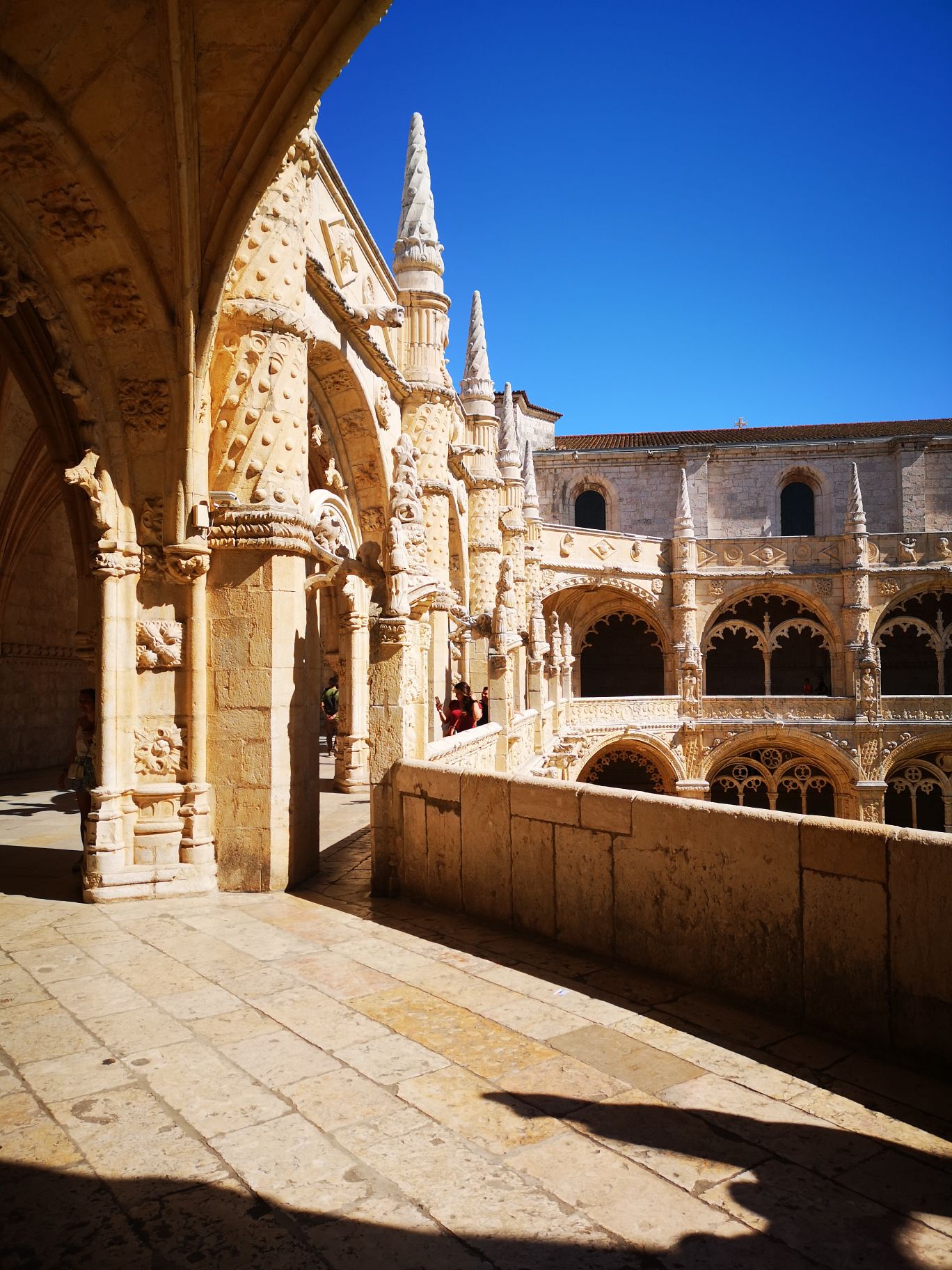
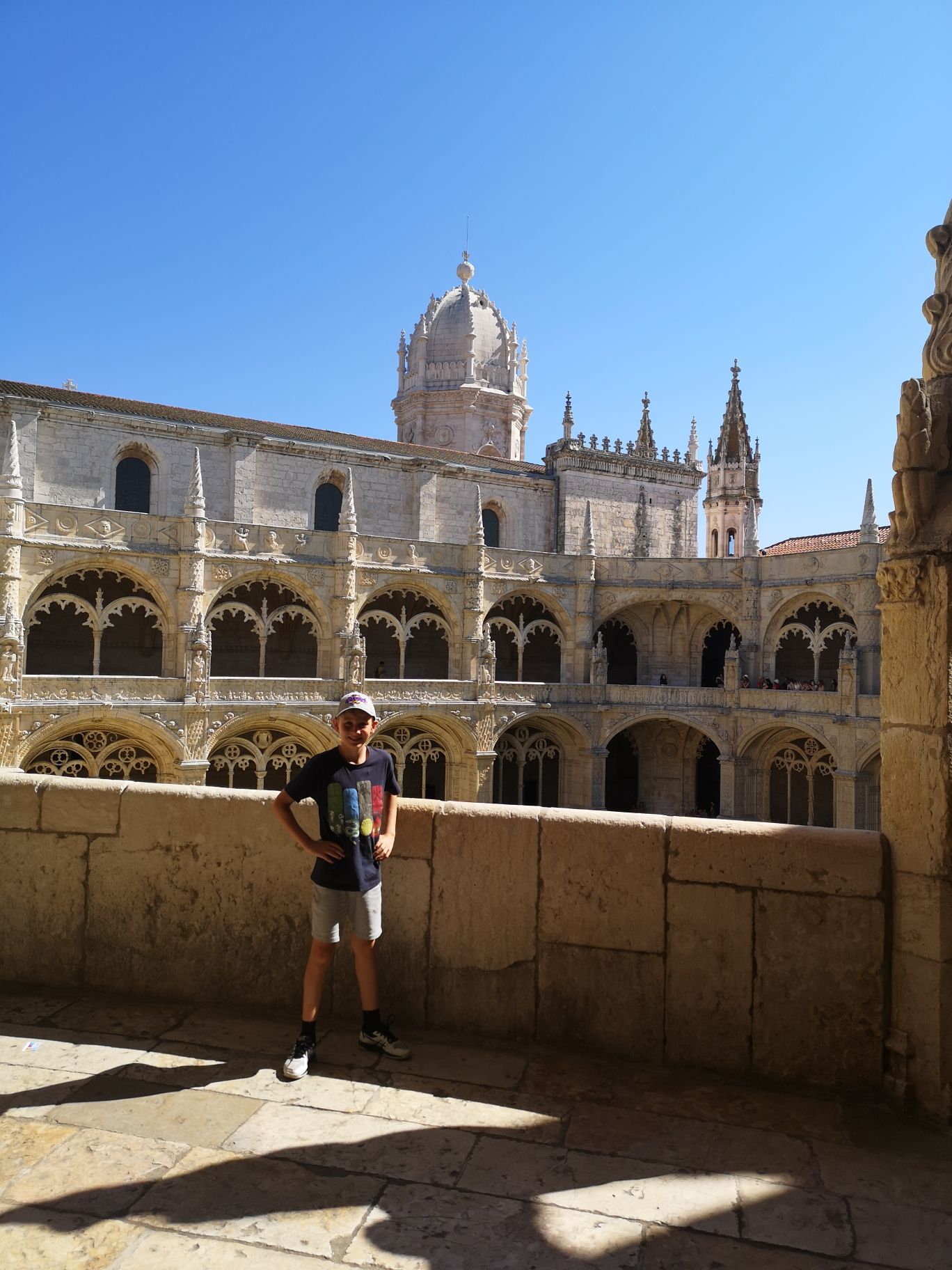
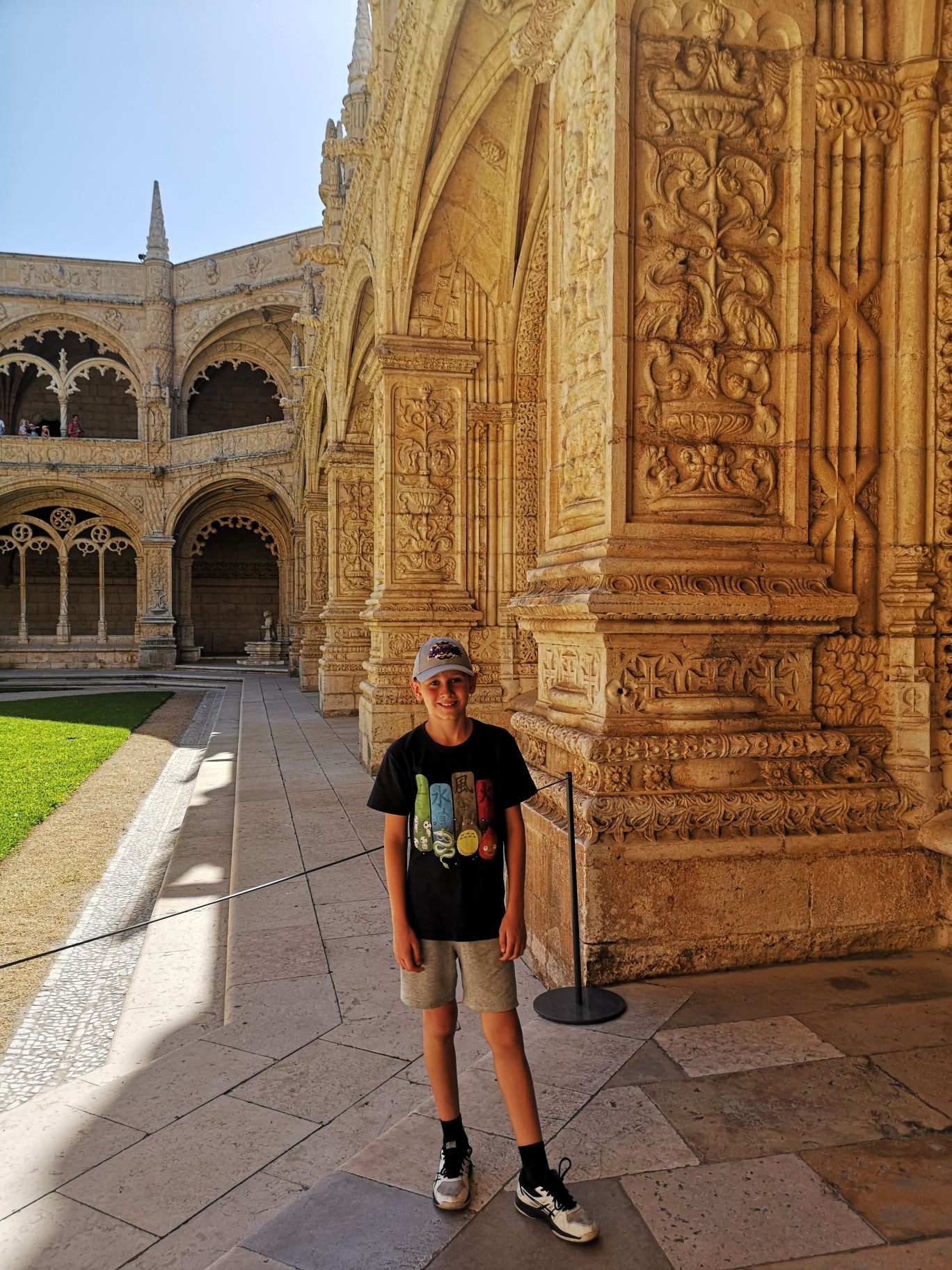
12. Monument to the Discoveries
Having a pleasant walk down to the river, you can discover Padrão dos Descobrimentos – a glorious monument that celebrates the Portuguese Age of Discovery during the 15th and 16th centuries.
The 52-metre tall monument is dedicated to some of Portugal’s most famous explorers, who truly shaped the country’s history by playing a vital part in the development of the Portuguese Age of Discovery.
This landmark structure was built in 1960 to commemorate the 500th anniversary of the death of Henry the Navigator.
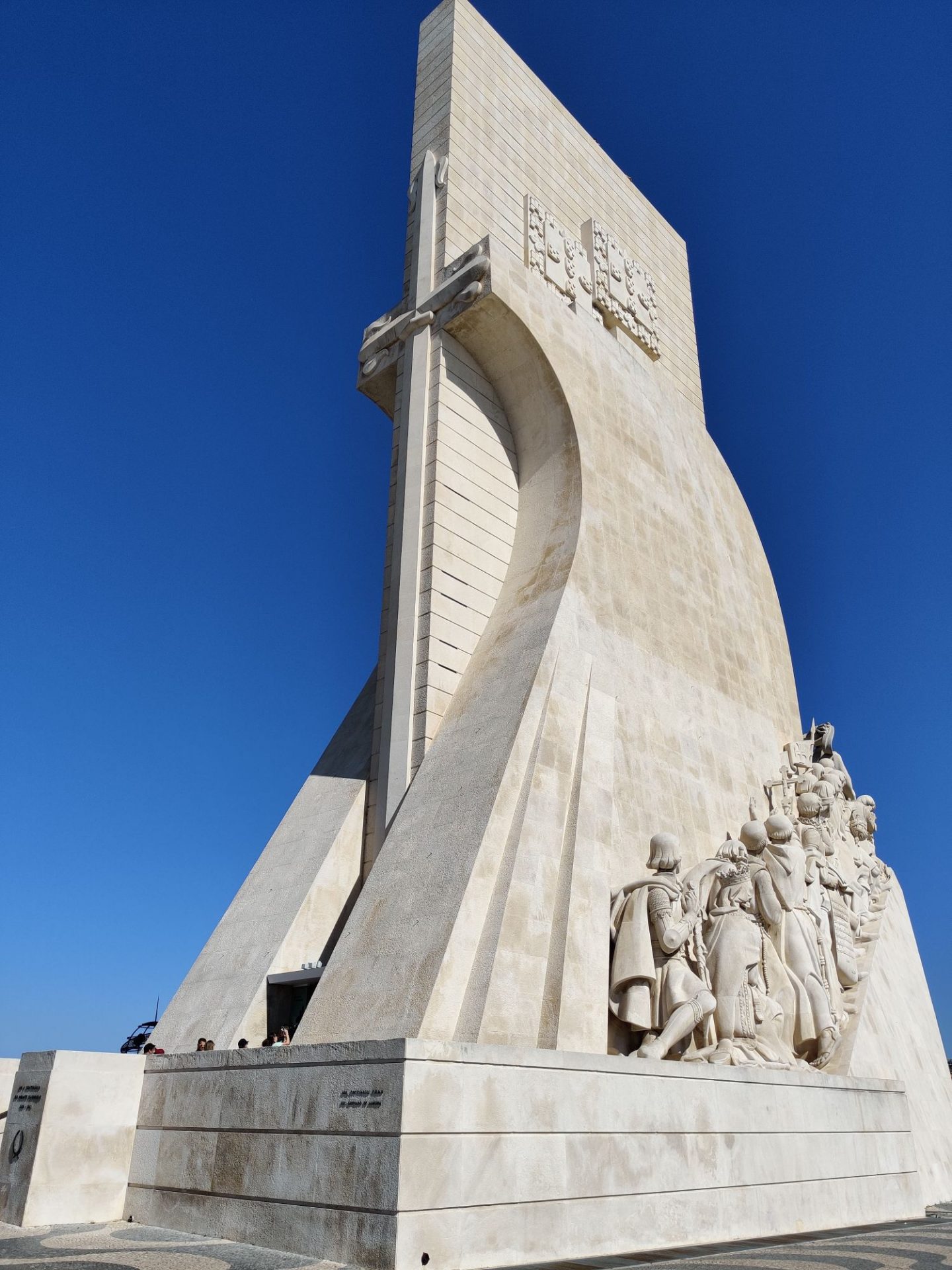
13. The Belem Tower
We wanted to get inside it, but we were 5 minutes late to enter, so for the next time. By the way, the Lisboa Card includes the entrance here too.
Being part of the defence system at the mouth of the Tagus river and a ceremonial gateway to Lisbon, the Belém Tower is listed as a UNESCO World Heritage Site due to the significant role it played in the Portuguese maritime discoveries.

Our second day finished here, we came back for dinner at Commerce Square and then back home. Commerce Square is a great place to be visited at any hour, and in the evening the colours of the sunset that lay on the river make it even prettier.
4 DAYS IN LISBON – Day 3
14. Cascais
Earlier on our trip to Portugal, one of my colleagues recommended us to visit Cascais, his birthplace. Without any doubt, we managed to have 1 day in this beautiful place. Actually we were on doubt either to go to Sintra, the most recommended place within the blogs, or Cascais. We went to Cascais for the simple fact that kids enjoyed it more than would do in Sintra.
Here are some tips and facts about Cascais:
– Going from Lisbon to Cascais by train is the easiest option. The train leaves from Cais do Sodre Train Station in Lisbon and takes about 40 minutes to get to Cascais (the final stop). The train ride itself is quite scenic, hugging the coastline most of the way. Once you arrive in Cascais, you are in the centre of town. From here you can walk or bike ride to most areas. One way ticket is 2.50 EUR, but this trip is included on your Lisbon Card too.
– In Cascais, take a look at the Cidadela de Cascais Fort and the Cidadela Art District, which has a hotel, restaurants and art galleries.
– Cascais Marina is a great place to go boat spotting. Near Santa Marta beach, as you cross the bridge, you can see Farol de Santa Marta Lighthouse.
– Of course, don’t forget to take your swimsuits and splash into the cold water of the ocean to refresh.
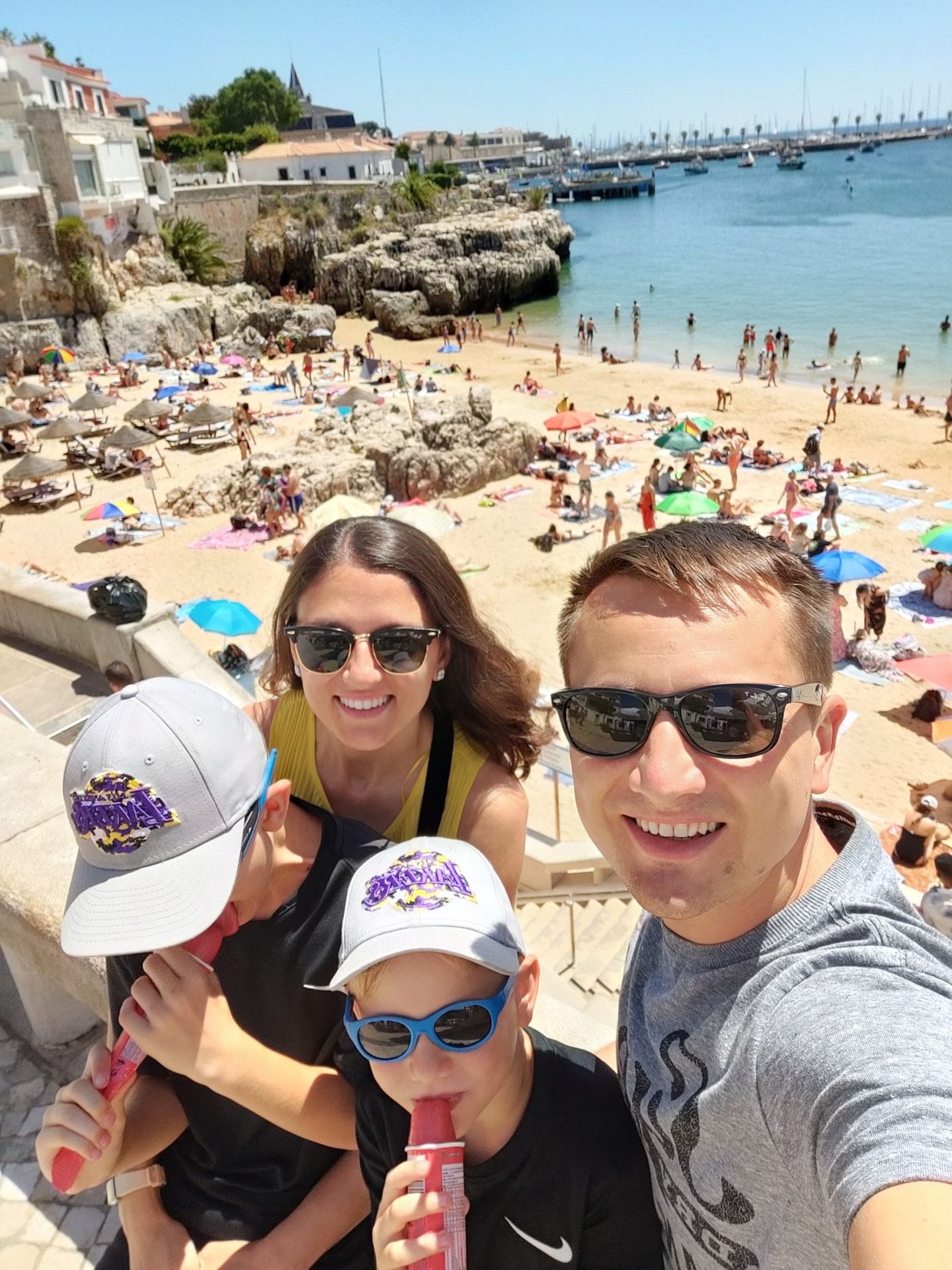
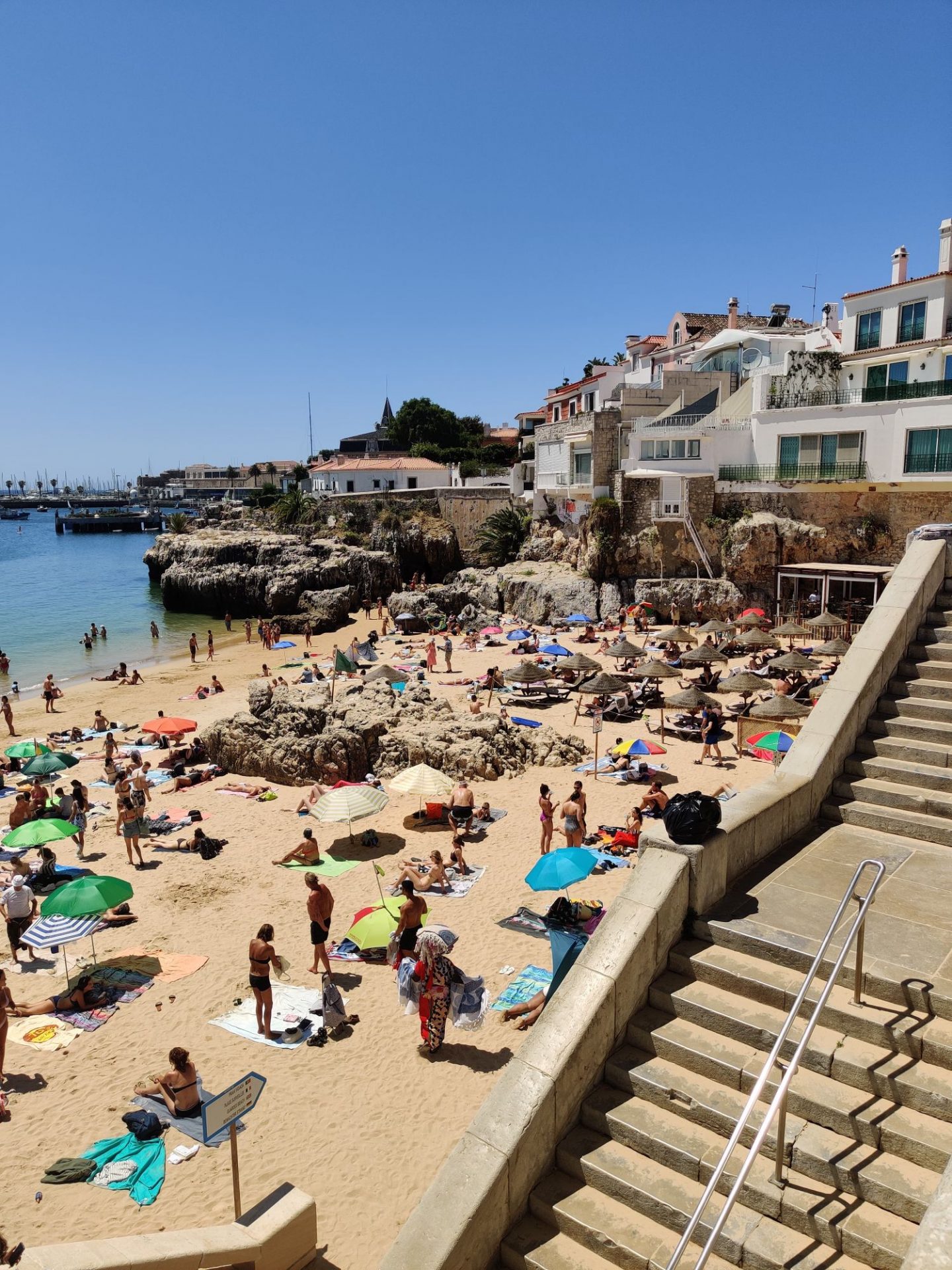
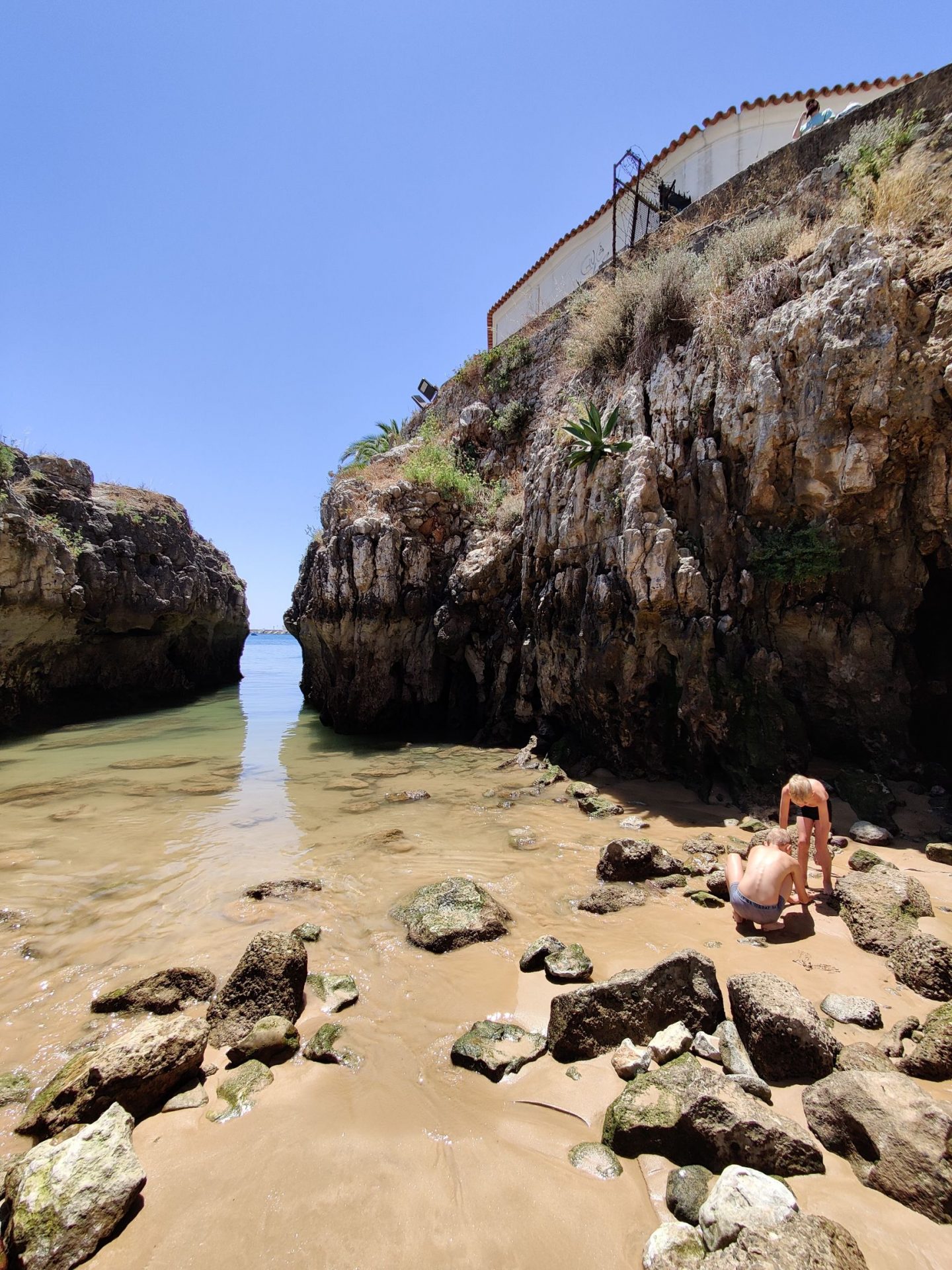
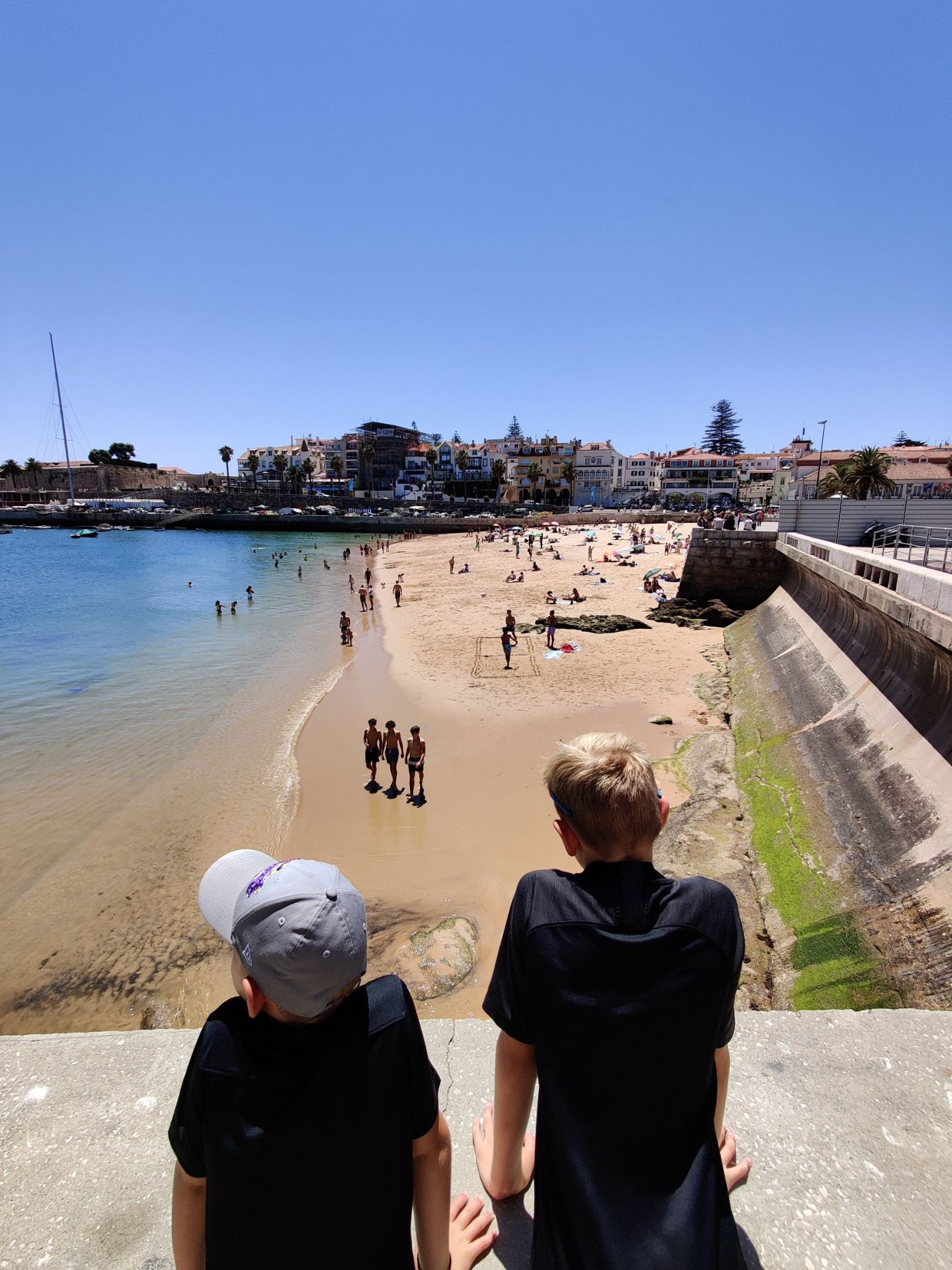
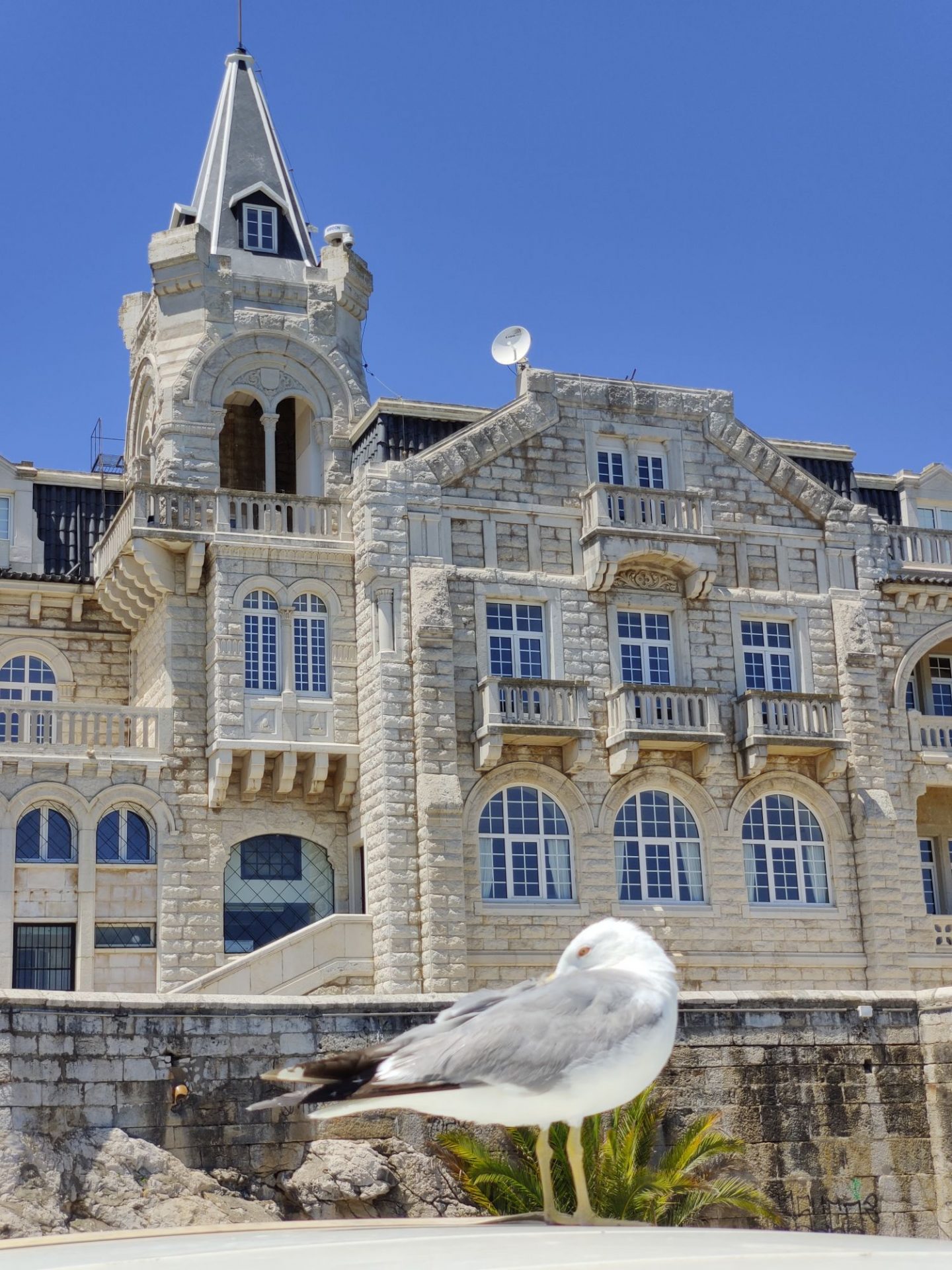
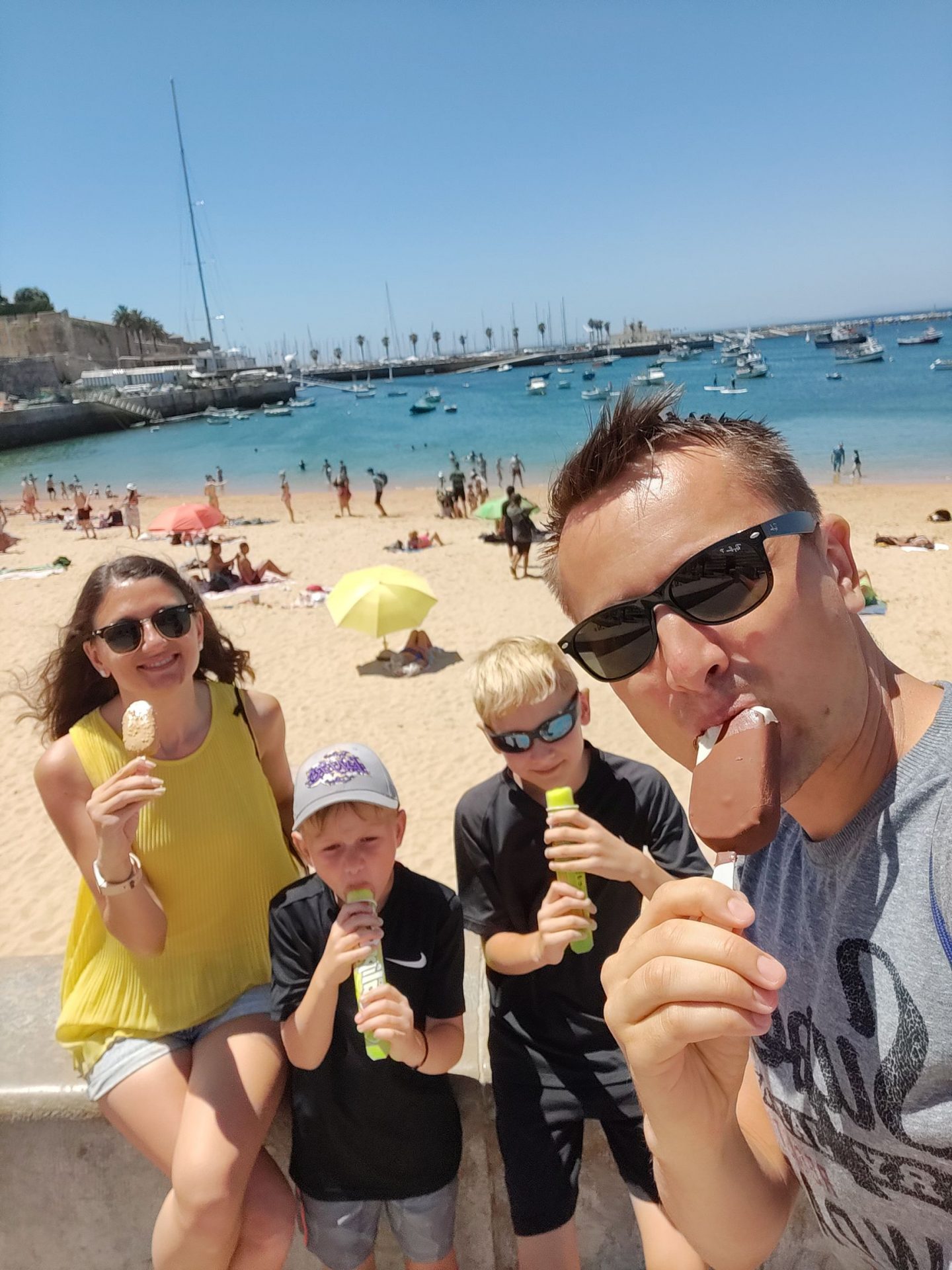
For best flights options TravelFamilyBlog uses Skyscanner web and same we recommend to our friends:
15. Pier 7 Bridge Experience Lisbon
After visiting Cascais, we came back to Lisbon and went quickly to Pier 7 Bridge Experience. It closes at 6pm, but we did it and visited it. It was on my top list from the first day in Lisbon, and I didn’t know how to make it.
Pilar 7 Bridge Experience is an interactive and immersive experience that allows an unique discovery of the Ponte 25 de Abril. Located in Alcântara (Avenida da Índia), this interactive centre allows all visitors to have an unique experience of the bridge – considered one of the prettiest in the world – via a tour that takes in the exterior areas of this key pillar and the sensory experience of visiting its interior. It is a trip through the history of its construction and ends with an elevator ride up to a panoramic viewing point that provides an unrivalled view of the city and the river.
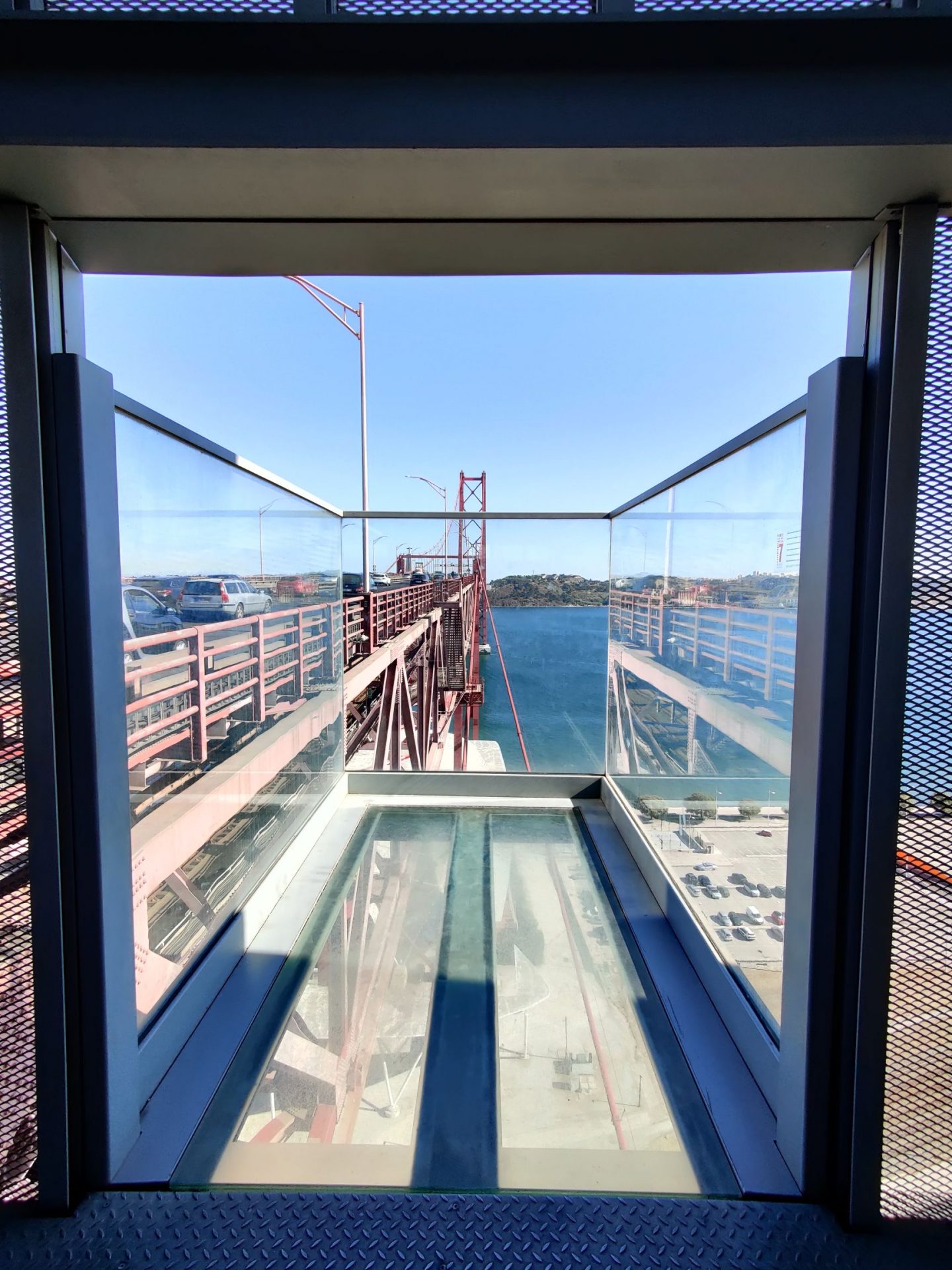
16. LX Factory
Because we were close by, we decided to go and visit the coolest place in the city. During the economic crisis of 2008, it became a haven for young artists and designers, who metamorphosed it into one of the most important creative centres in Lisbon. Young creatives and trendsetters fill the fashionable bars, clubs, design shops, and galleries that surround the streets here. An eclectic dining scene features everything from trendy restaurants to artisan coffee shops.
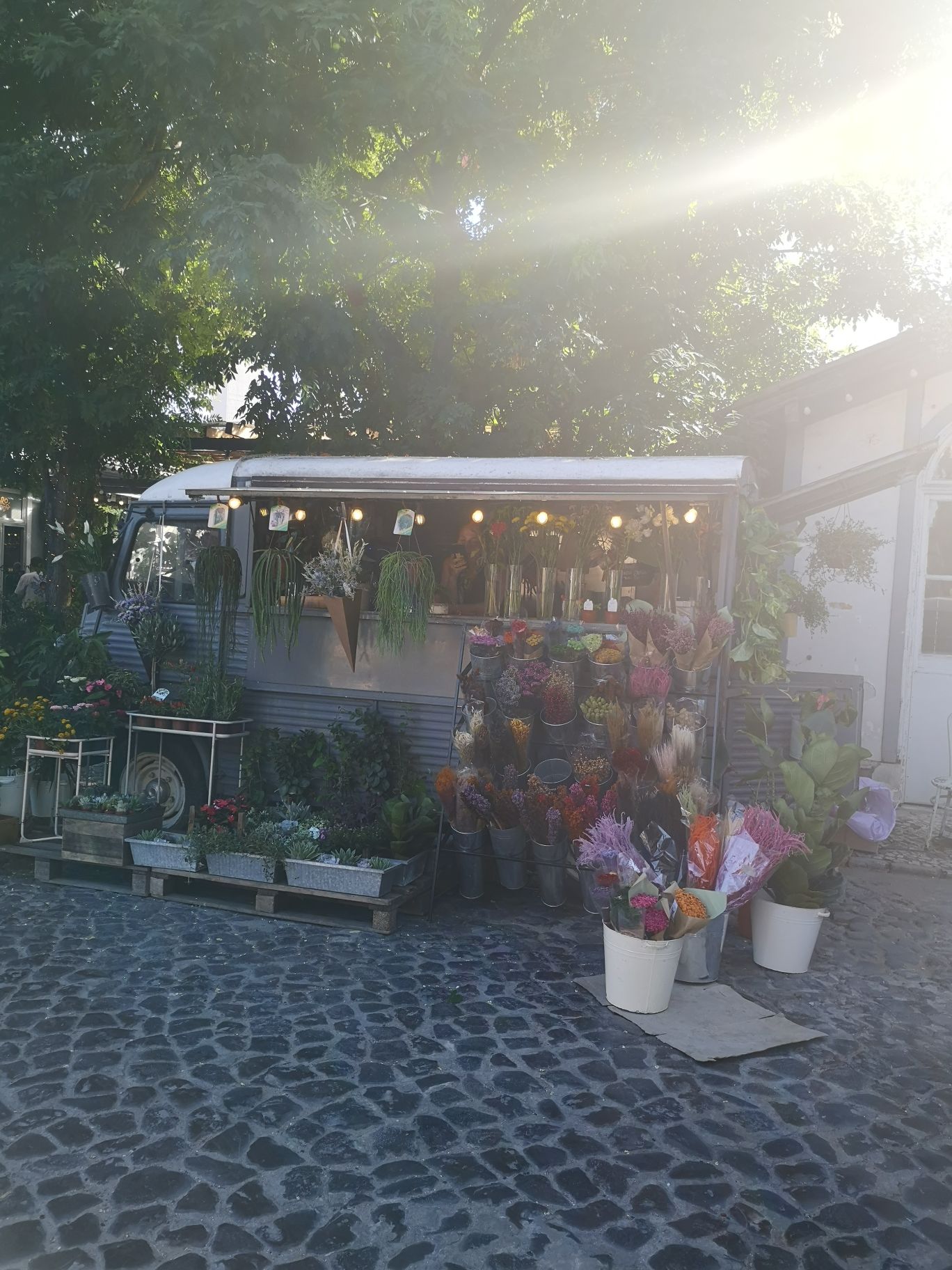
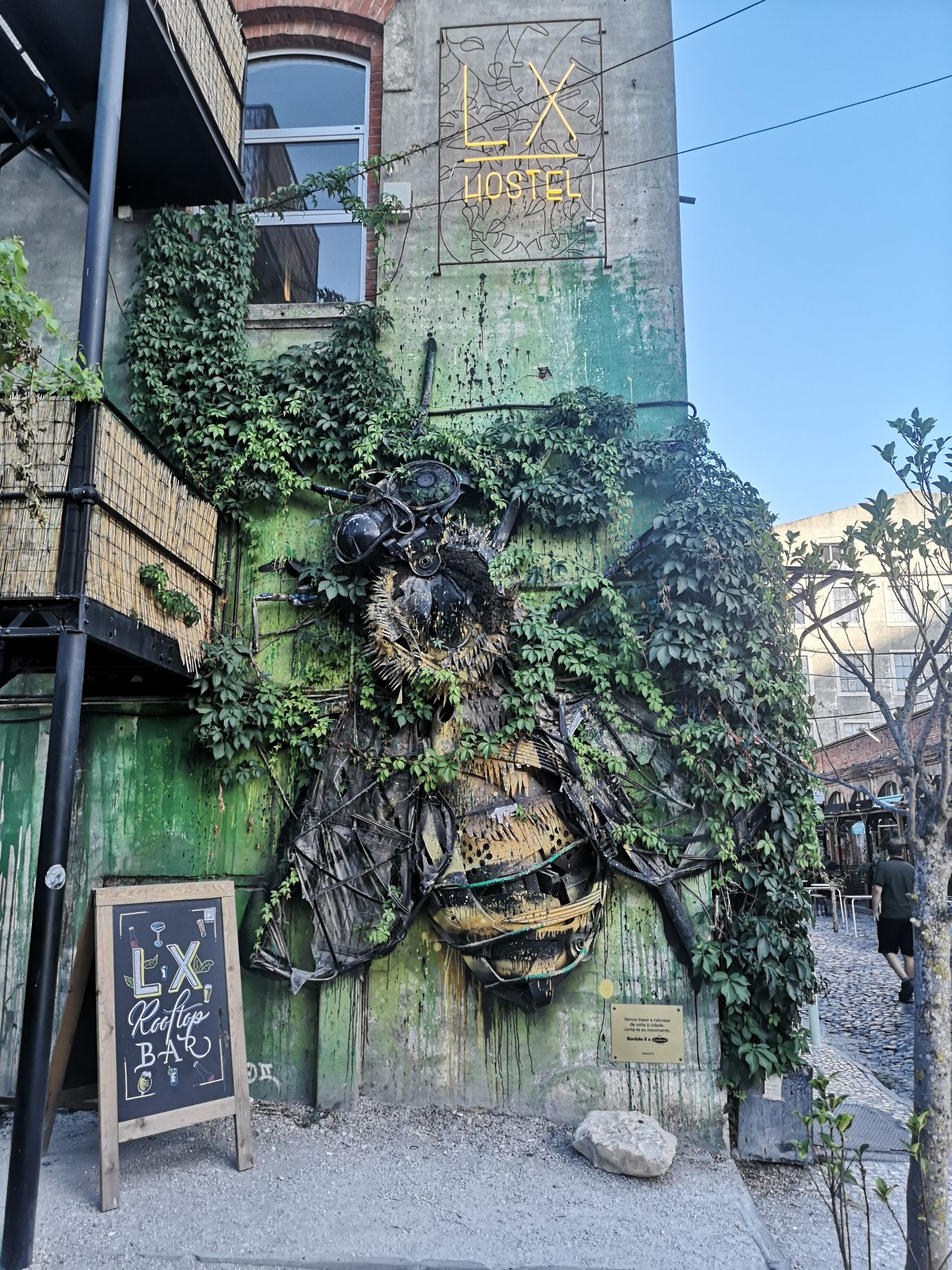
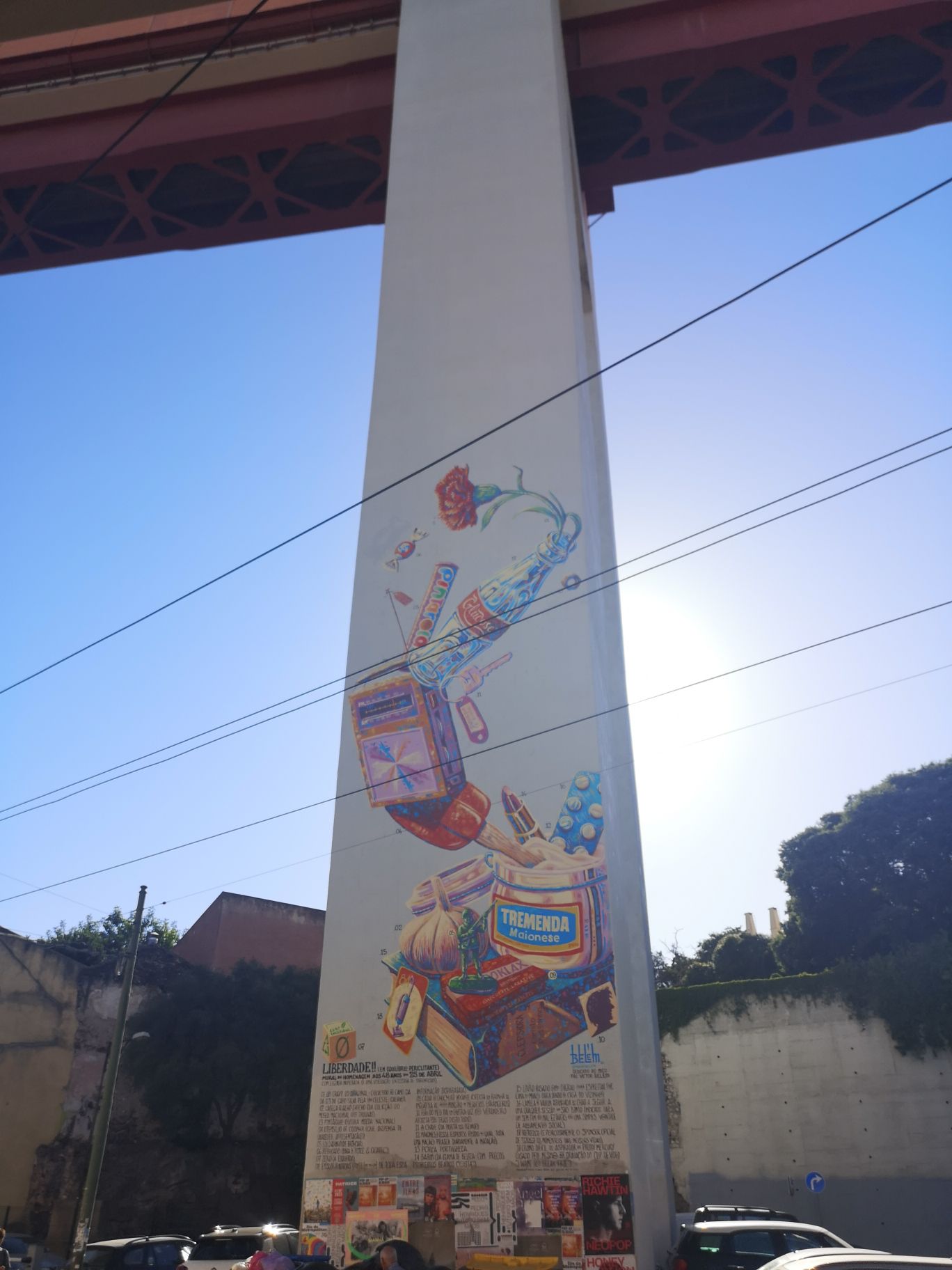
4 DAYS IN LISBON – Day 4
Our last day in Lisbon we were in doubt about what to do, to go to Sintra or to stay in the city and to explore more. As there are still many places to be visited. Our choice was to stay in the city and enjoy our Lisbon Card even more by visiting museums.
17. Palace of Ajuda
The Palace of Ajuda is a neoclassical monument in the civil parish of Ajuda in the city of Lisbon, central Portugal. Built on the site of a temporary wooden building constructed to house the Royal family after the 1755 earthquake and tsunami. The construction of the Ajuda Palace, which began in 1796 and lasted until the late 19th century, was a project plagued by various political, economic and artistic/architectural problems. A lot of interruptions occurred, due to a lack of funds, political sanctions or disconnection between the workers and the authorities responsible for the project. The palace finally became a permanent residence of the royal family during the reign of King Luis I and his wife, Maria Pia of Savoy.
We went on Thursday, it was our last day, and it seems that on Thursdays the palace is closed to the public. We didn’t check this information. I was disappointed that we didn’t get inside. Next time for sure.
18. Royal Treasury Museum. Crown Jewels
My disappointment didn’t last too long, as we found out that close by to the Palace it is located the Royal Treasury Museum. What a coincidence, that Lisbon Tourist Centre recommended us to visit this museum earlier.
In this Museum you can see a great number of the former assets of the Portuguese Royal Family, including artworks that belonged to the Crown, as well as several items that belonged to private collections of various members of the Portuguese Royal Family.
The visit starts with Ouro e os diamantes do Brasil (Gold and diamonds from Brazil), where raw pieces of rare metals and gems are displayed, followed by a set of Crown coins and medals. The Jewels on display are from many different sources that belonged either to the Crown or to private collections of different members of the Portuguese Royal Family.
Also there you can see engraved silver objects that were manufactured for civilian use, a set of 16th-century Portuguese silver salver trays and plates are particularly noteworthy. These items were part of the so-called Prata de Aparato da Coroa (The Crown Silverware).
If you have a Lisbon Card you enter for free to this museum.
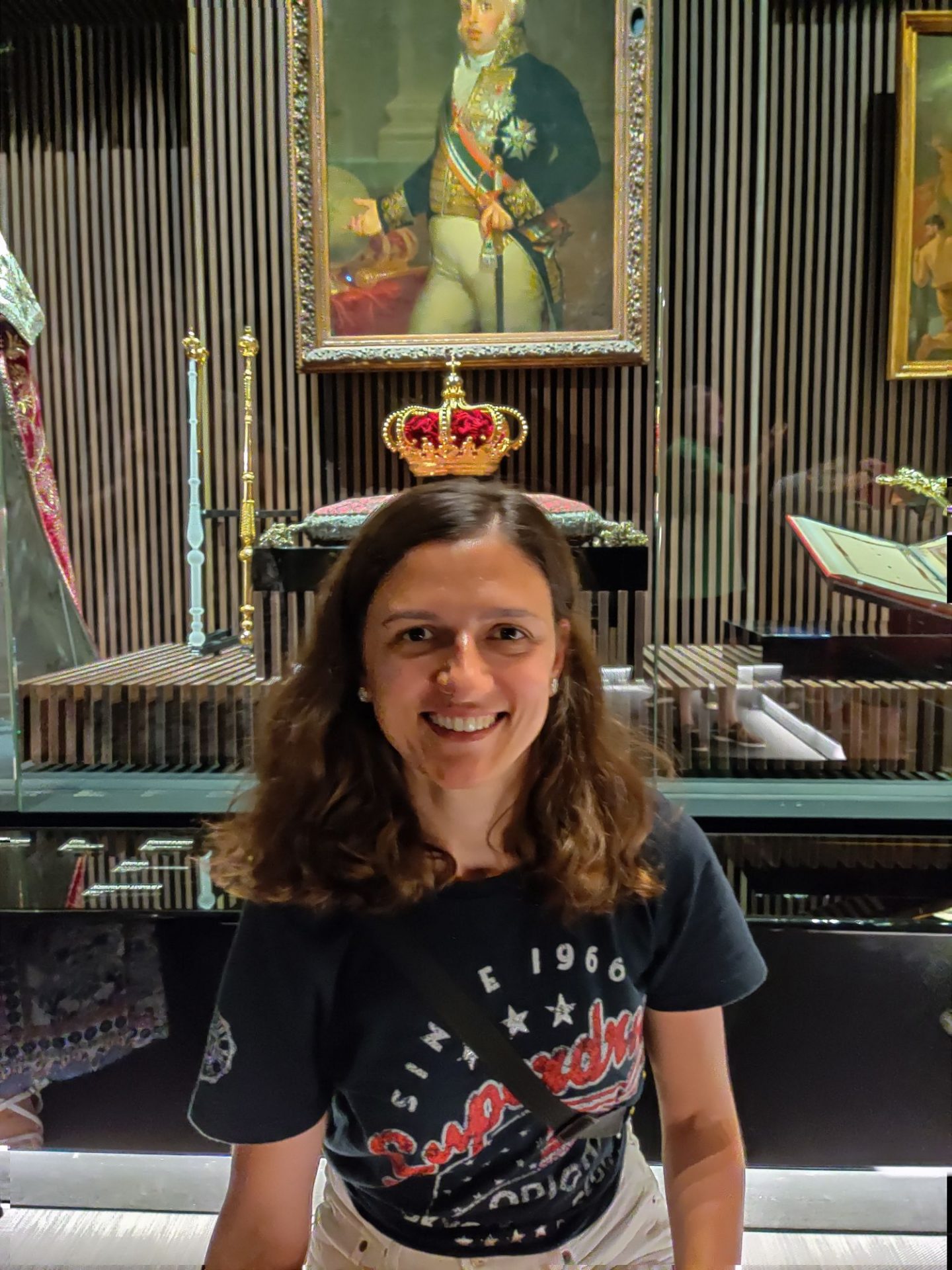
19. Museum of the Presidency of the Republic
We went there after lunch time, but it was a great way to continue the history after the Royal times. The history of the development of the republic in Portugal is detailed in chronological order. With oil portraits, personal items and various documents illustrating the history and career of each of the presidents of the Portuguese republic, the museum presents all of the heads of state that have marked the country’s 20th century.
The entrance is only 2.5EUR, but it is not included in your Lisbon Card.
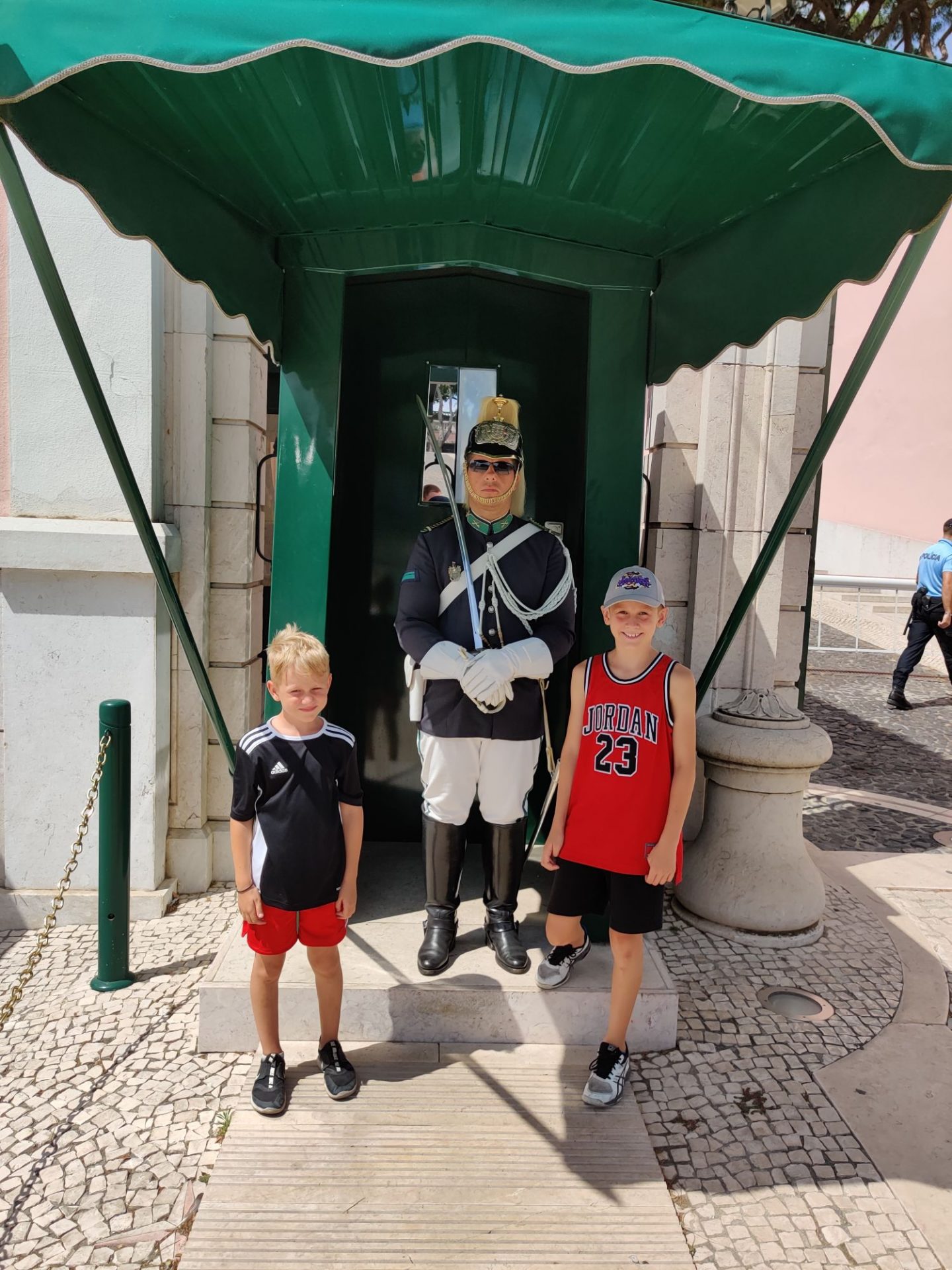
20. National Coach Museum
One of Lisbon’s most visited sights, the Coaches Museum has the largest and most valuable collection of its type in the world. It opened in 1905 in a richly-decorated 18th-century royal riding school illustrating the ostentation and staggering wealth of the old Portuguese elite. On its 110th anniversary, it moved across the street, to a new building designed by Pritzker Prize-winning architect Paulo Mendes da Rocha. The new premises made it possible to also show accessories and carriages that weren’t previously shown.
Each carriage is more magnificent than the other, showing how artisans went to extraordinary lengths to make their vehicles stand out. One of the most outstanding has gilded figures on the tailgate, showing Lisbon crowned by Fame and Abundance. Another one, used in an embassy to France’s Louis XIV, depicts cherubs with bat’s wings.
Made in Portugal, Italy, France, Austria, and Spain, the historic royal carriages range from the plain to the ostentatious. The most sumptuous ones are lined with red velvet and gold interiors, while their exteriors are carved and decorated with allegories and royal coats of arms.
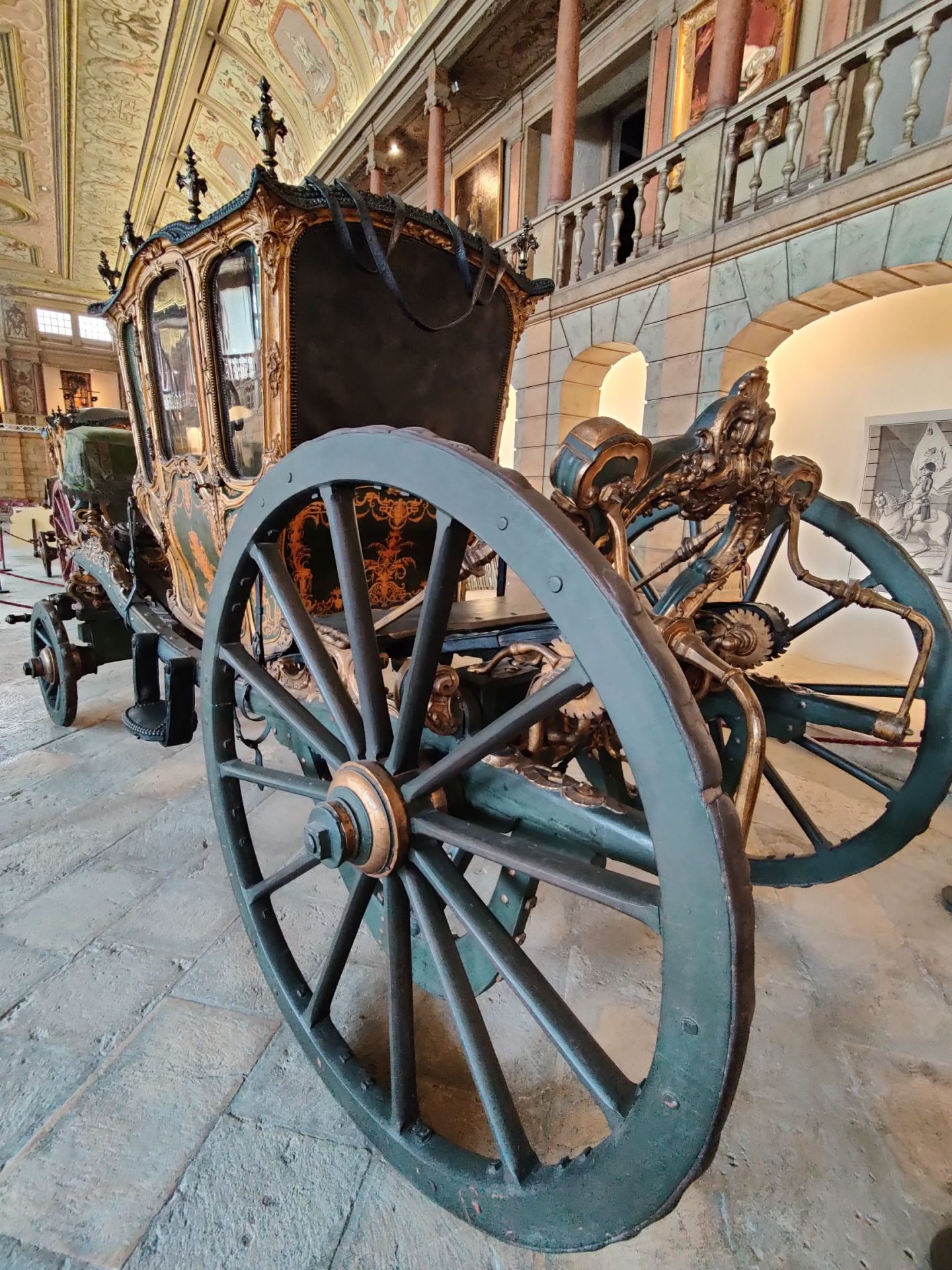
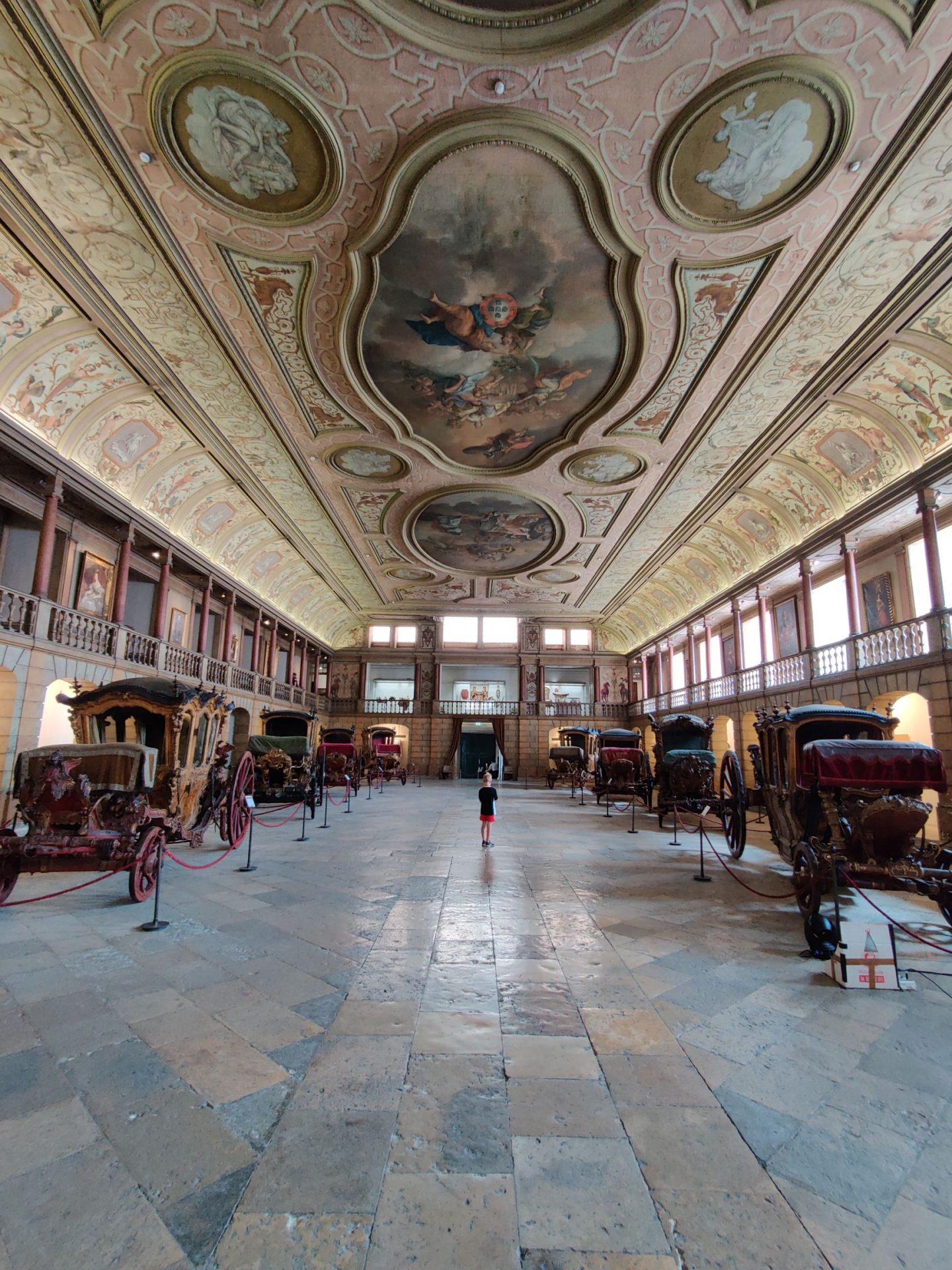
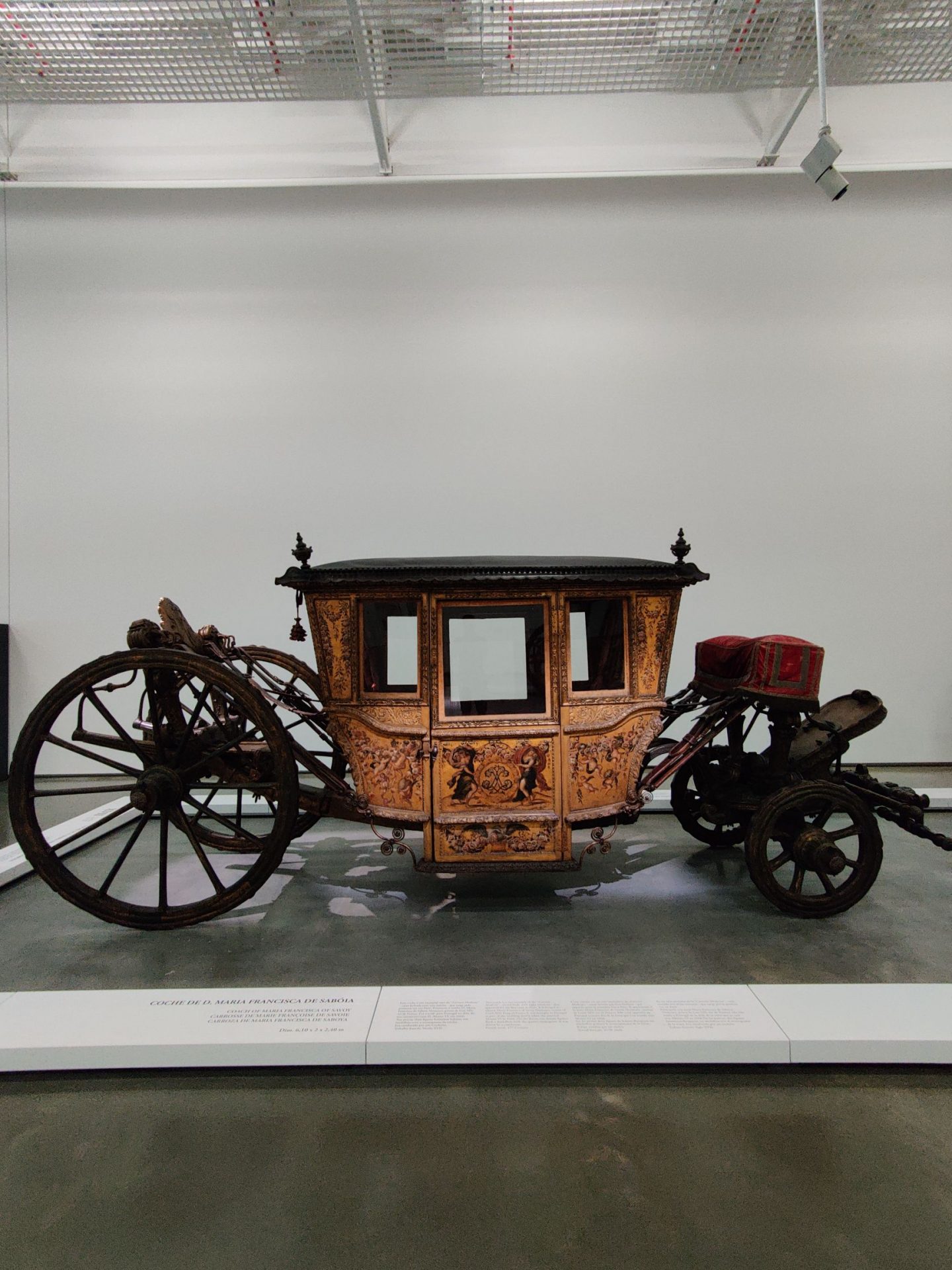
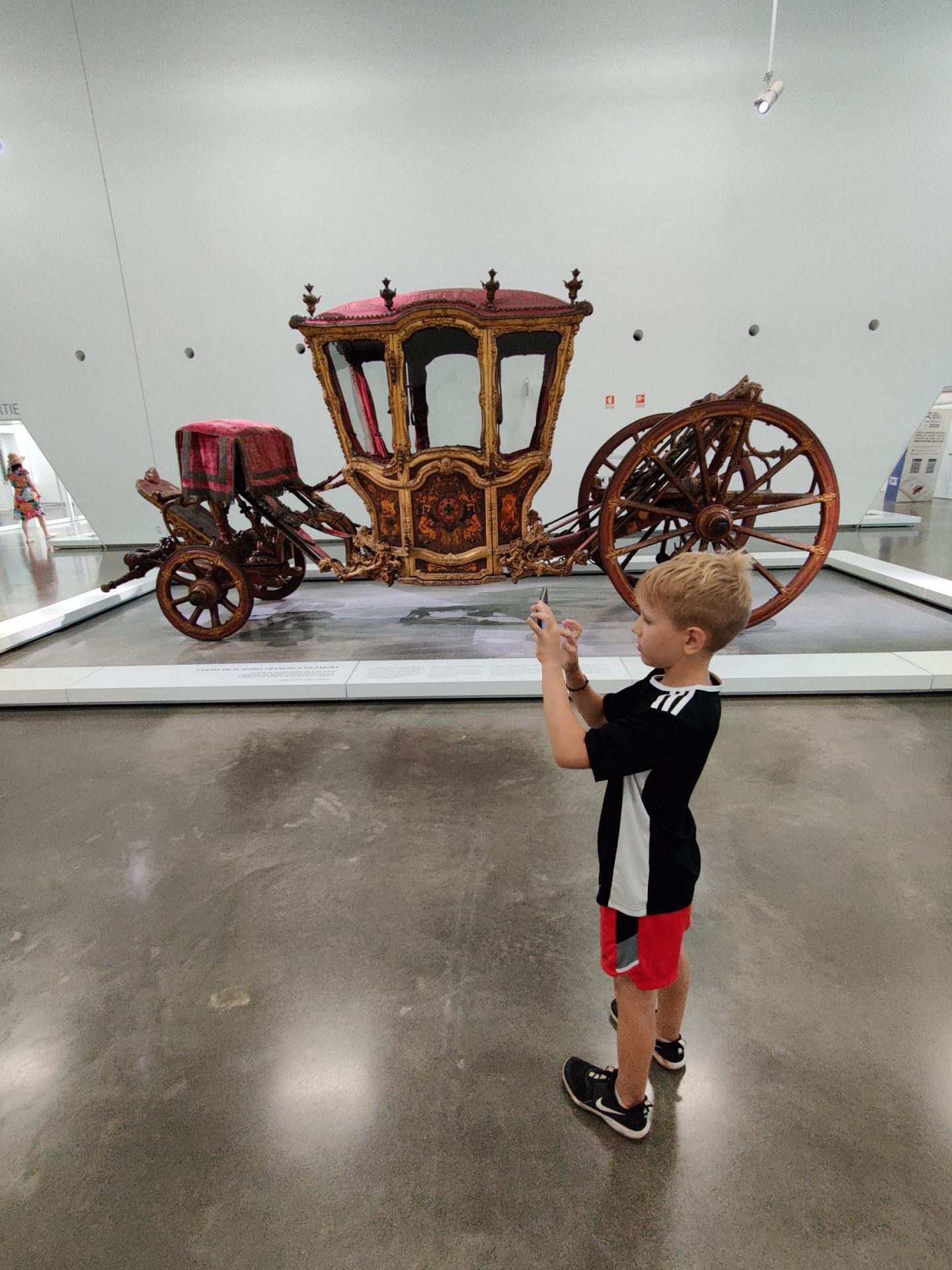
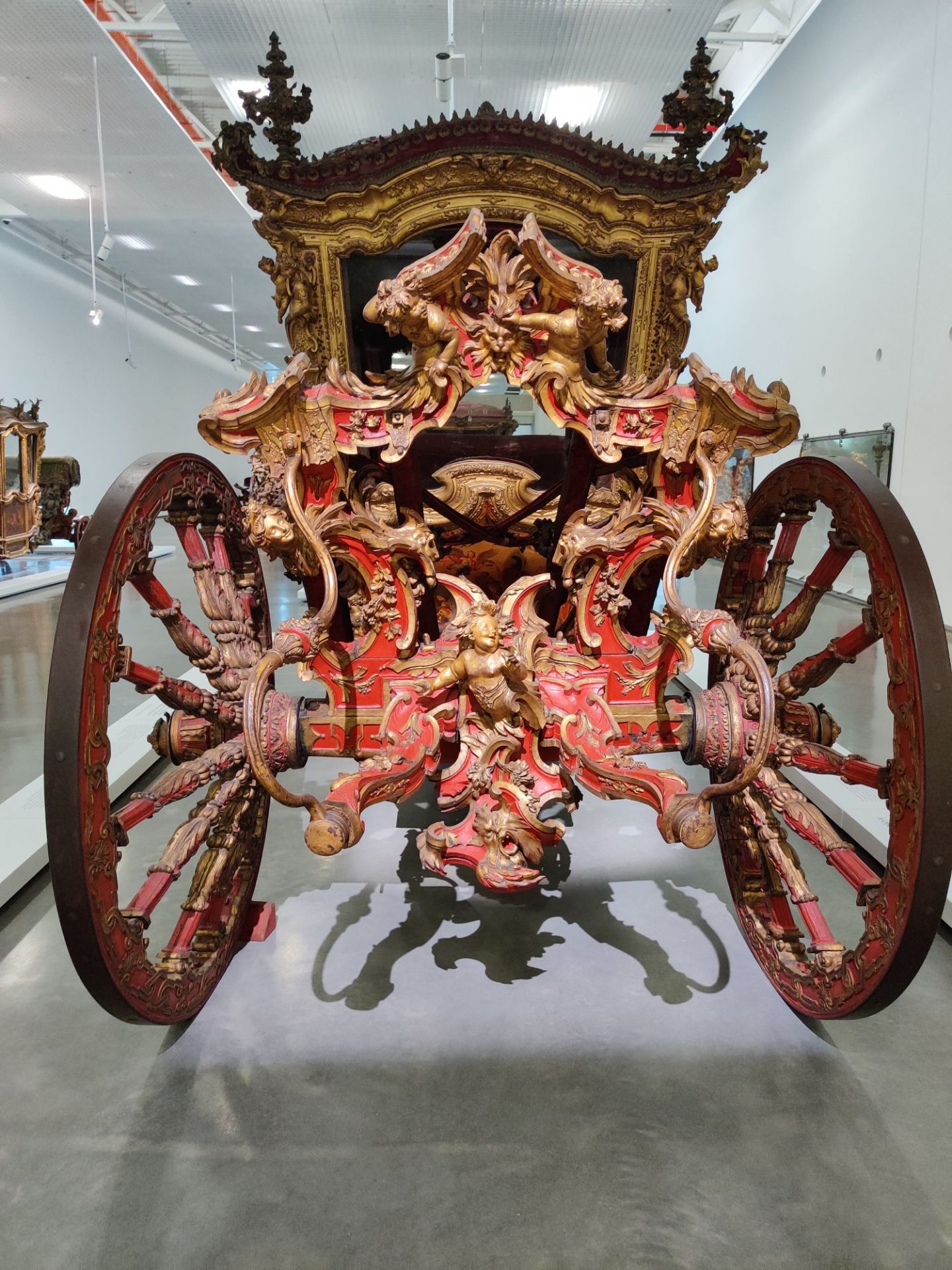
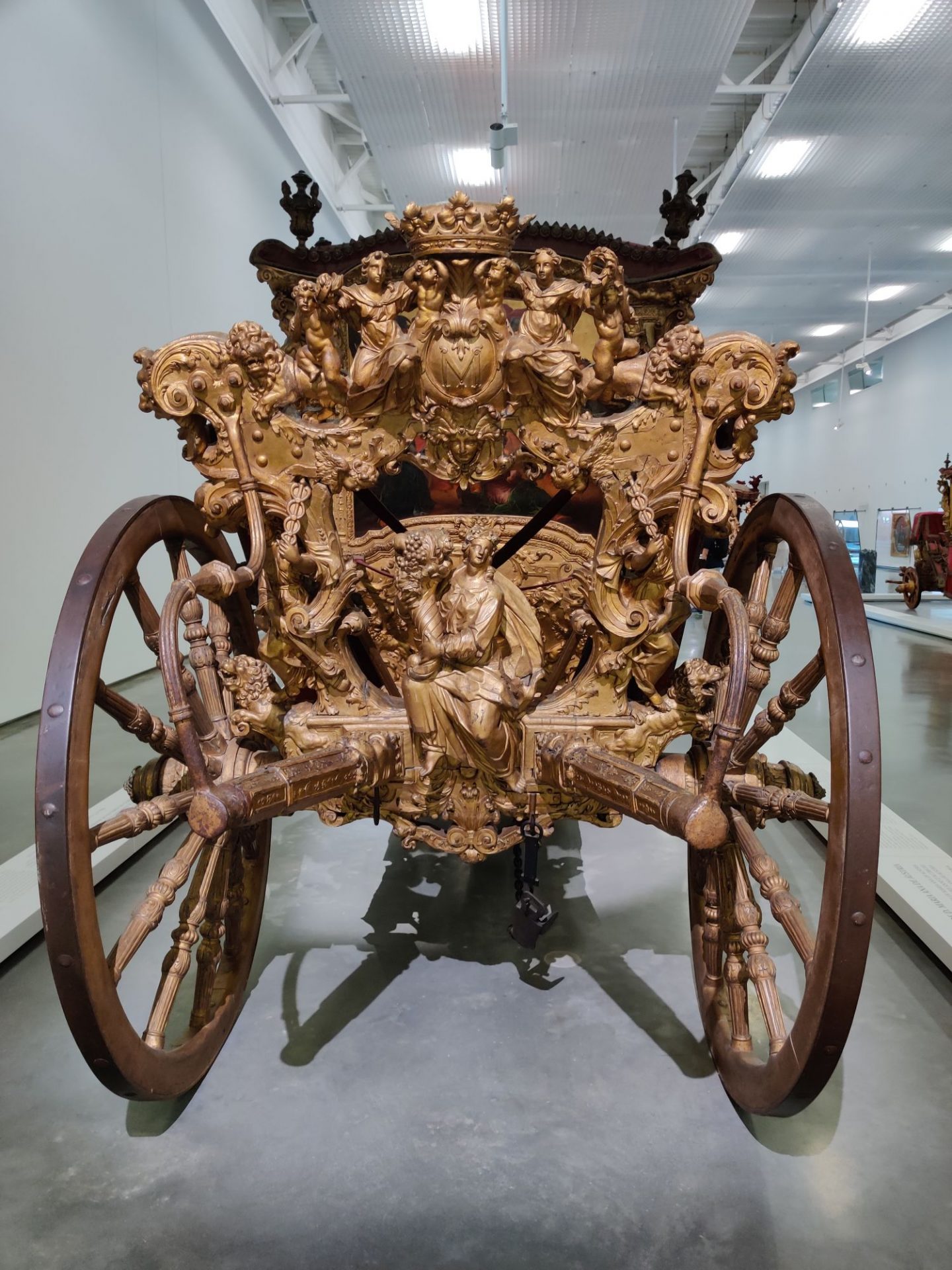
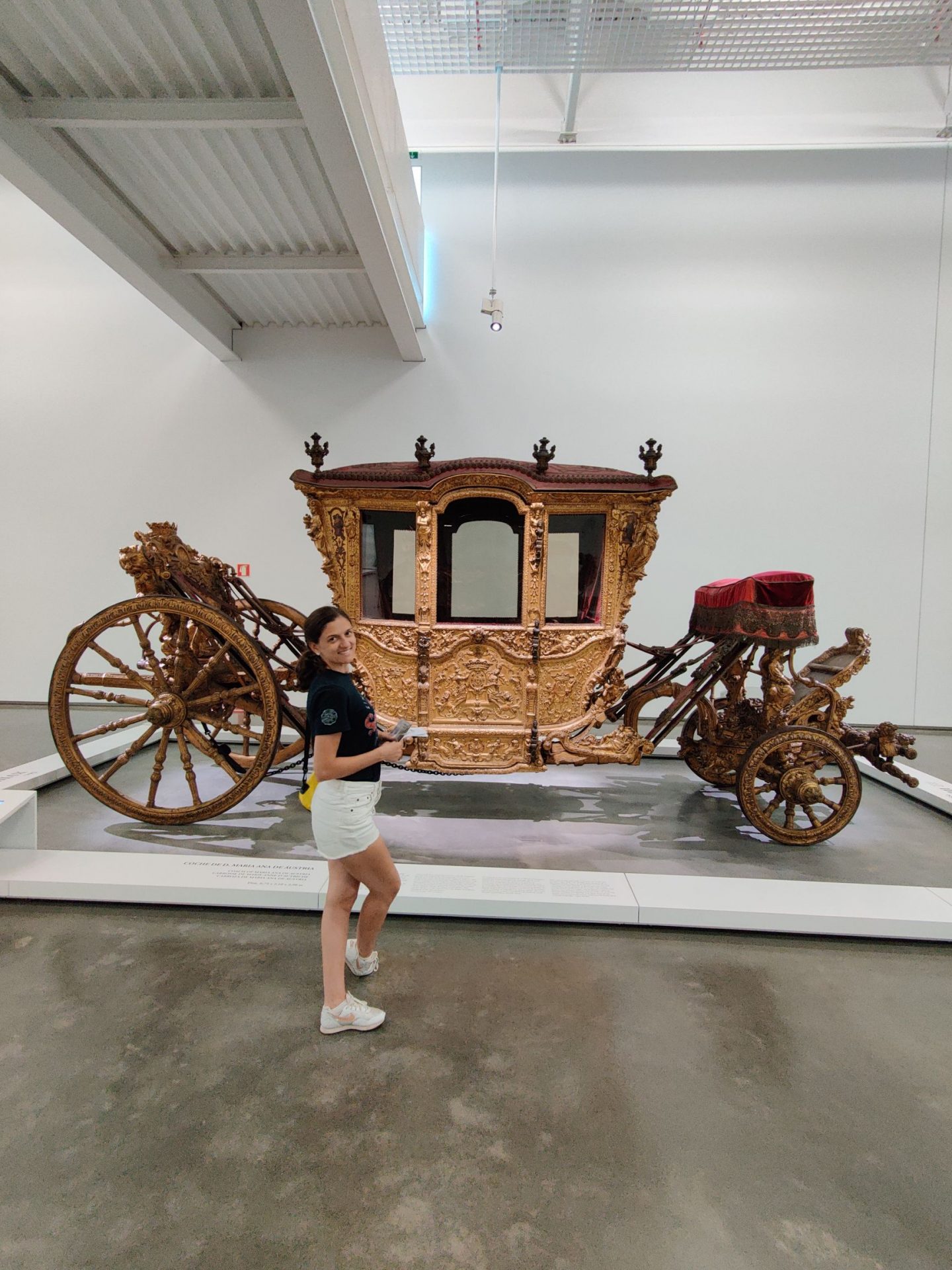
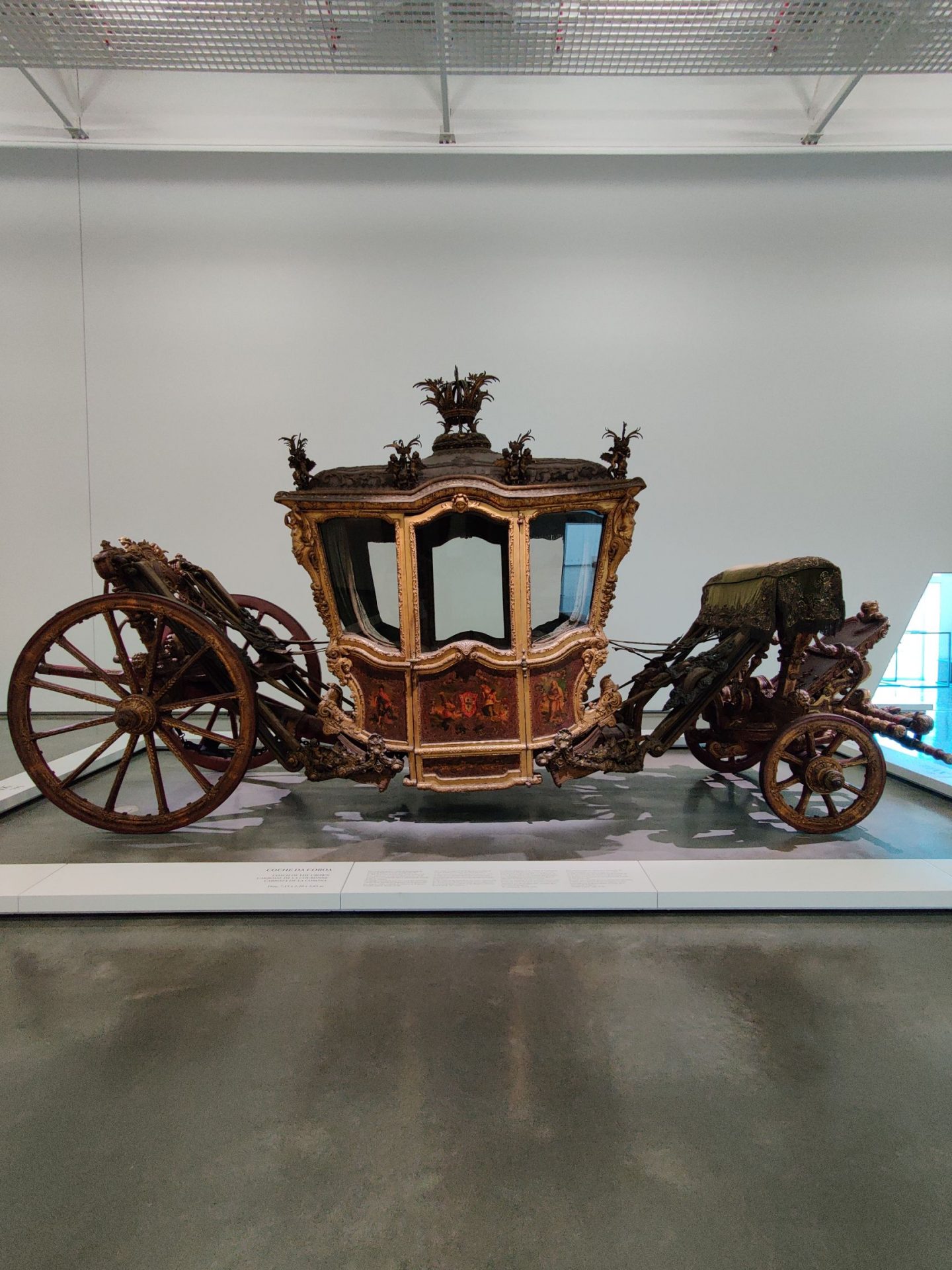
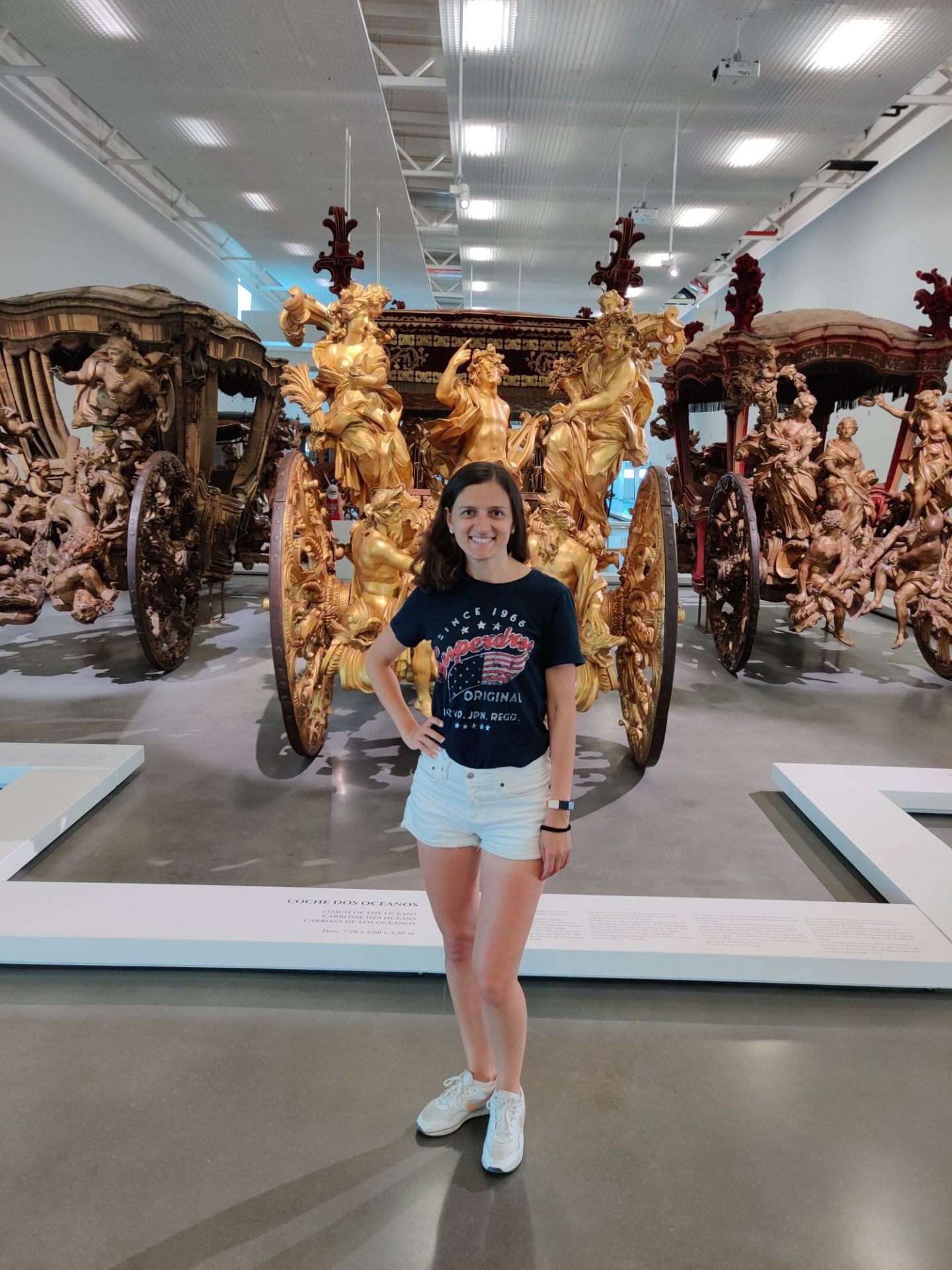
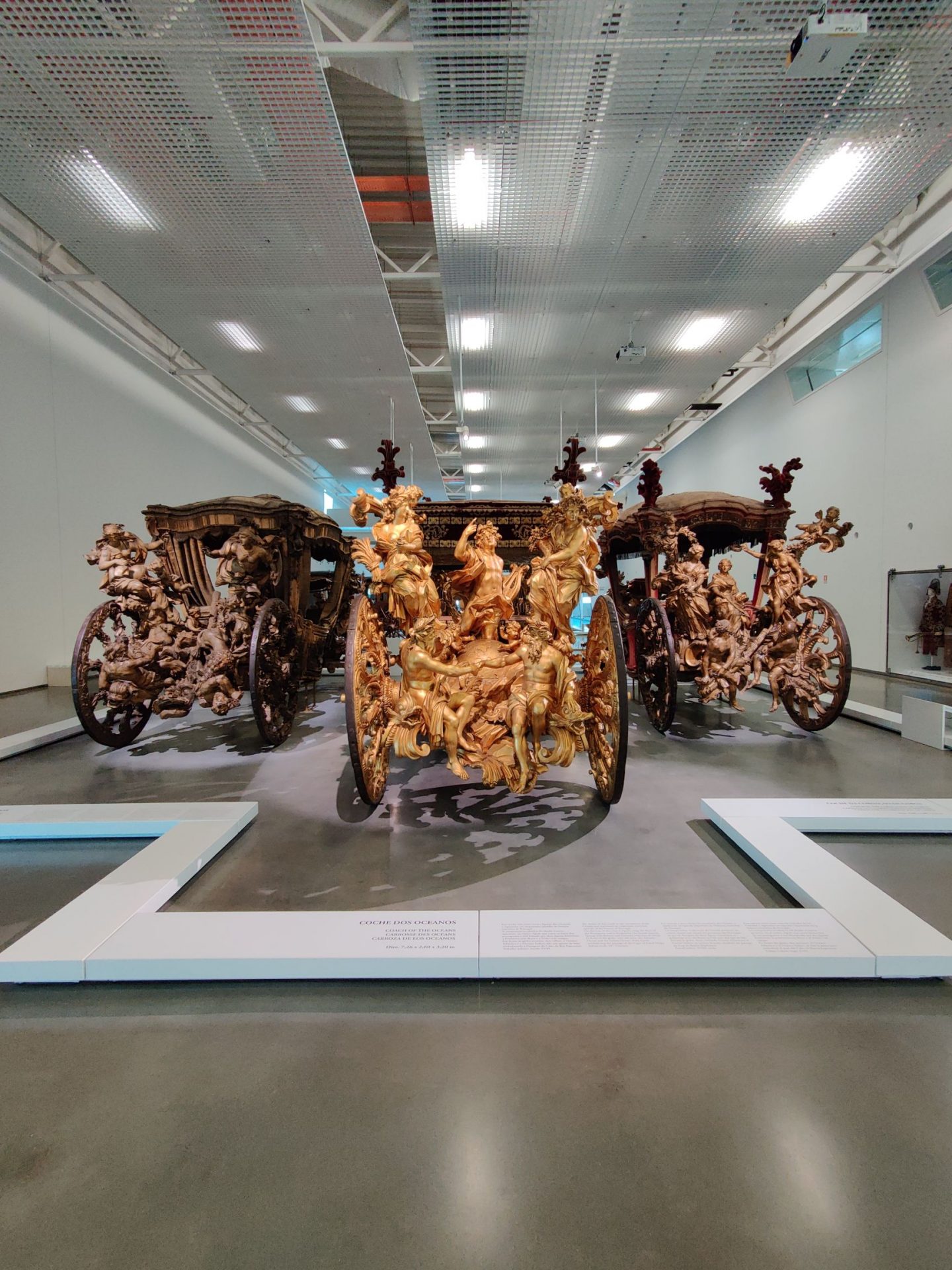
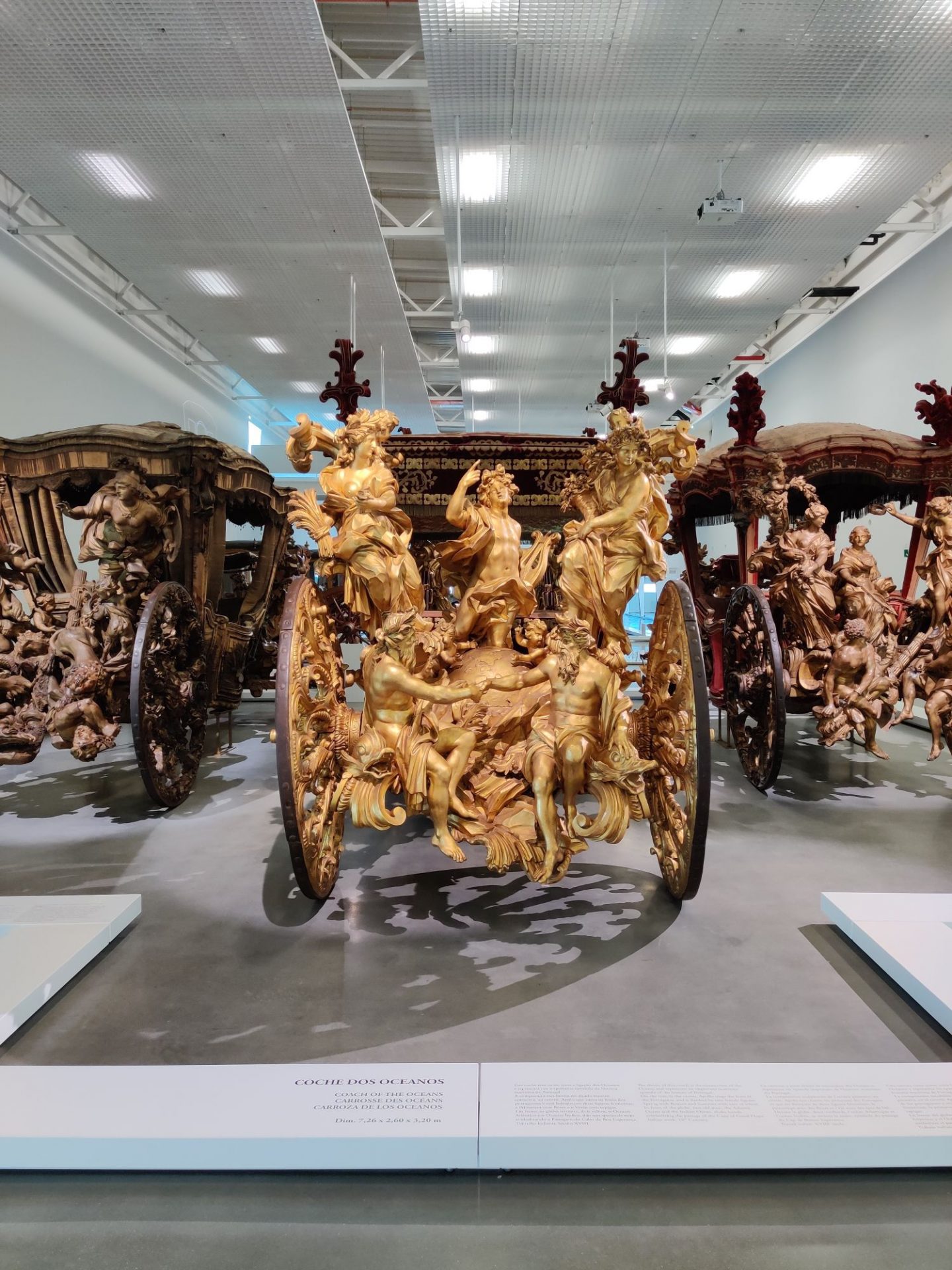
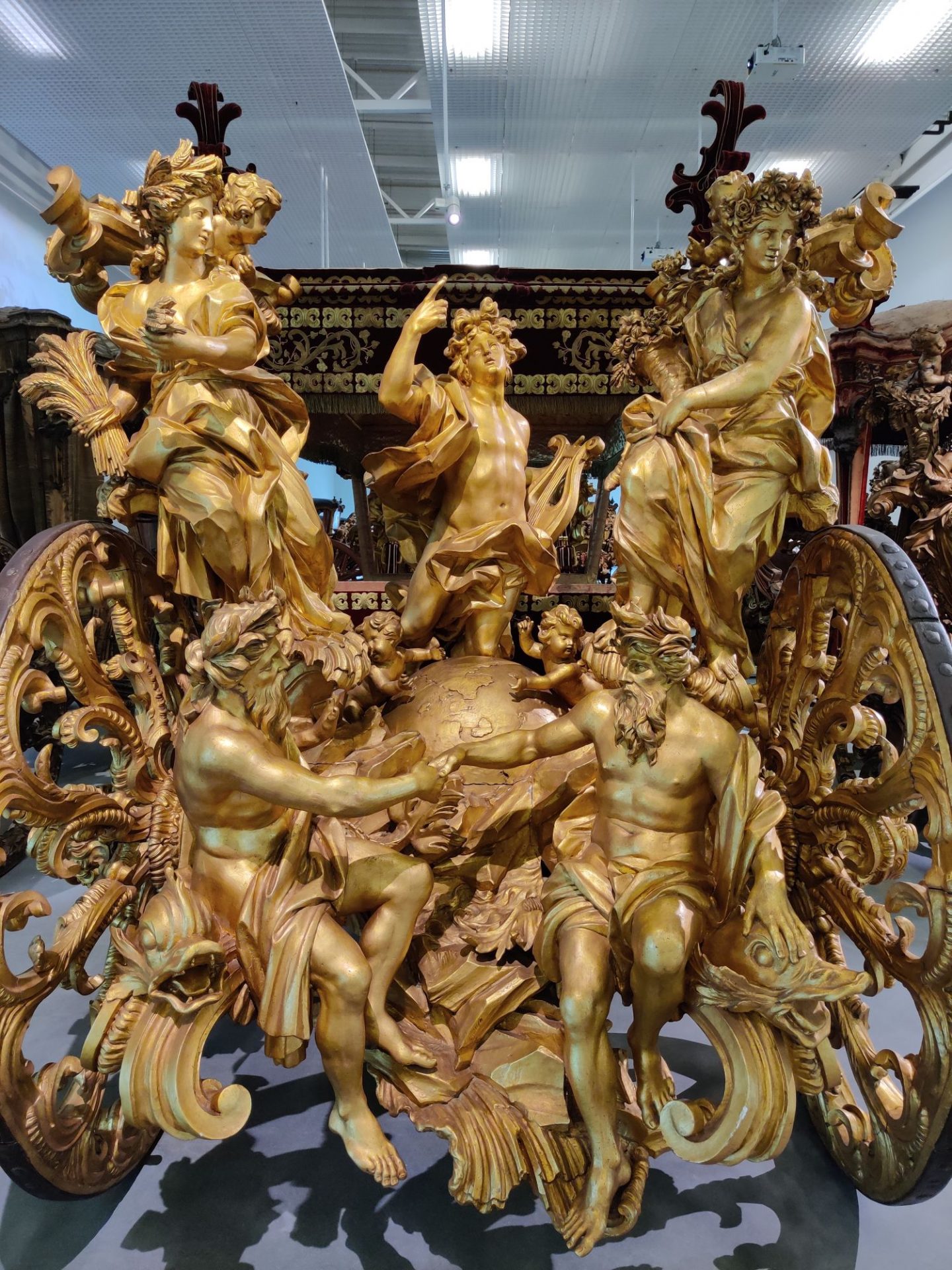
Here our beautiful trip to Portugal ends, and we are back in Barcelona with lots of beautiful memories not only of Lisbon City, but also of Portugal as a country and the marvellous people who live there.
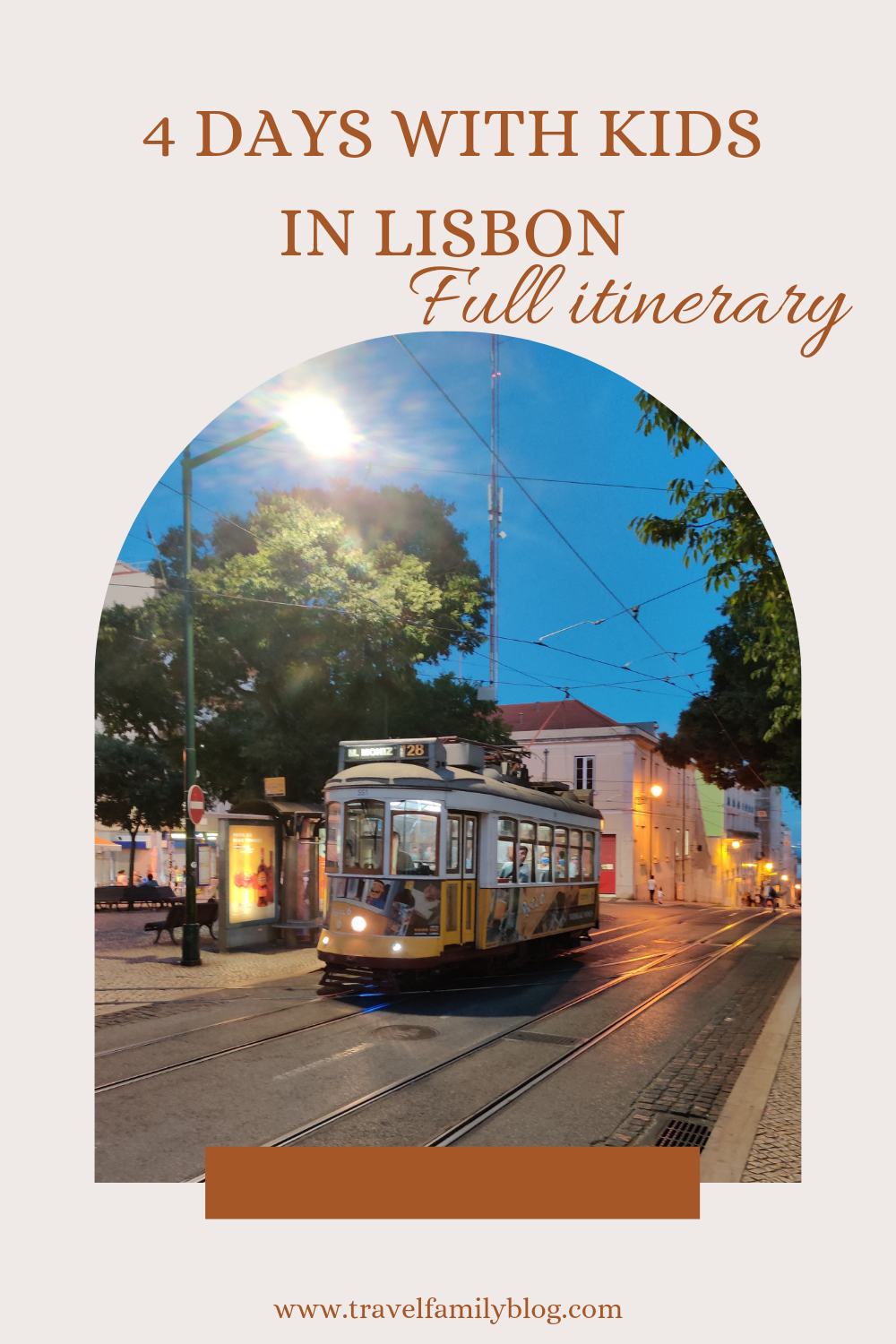

“Your family travel adventures are truly inspiring! It’s wonderful to see how you explore the world together, creating lasting memories and sharing valuable insights.”
Author
Thank you very much!